How To Write A Research Paper
Research Paper Example


Research Paper Example - Examples for Different Formats
Published on: Jun 12, 2021
Last updated on: Jul 19, 2024

People also read
How to Write a Research Paper Step by Step
How to Write a Proposal For a Research Paper in 10 Steps
A Comprehensive Guide to Creating a Research Paper Outline
Types of Research - Methodologies and Characteristics
300+ Engaging Research Paper Topics to Get You Started
Interesting Psychology Research Topics & Ideas
Qualitative Research - Types, Methods & Examples
Understanding Quantitative Research - Definition, Types, Examples, And More
How To Start A Research Paper - Steps With Examples
How To Write a Literature Review for a Research Paper | Steps & Examples
Types of Qualitative Research Methods - An Overview
Understanding Qualitative vs. Quantitative Research - A Complete Guide
How to Cite a Research Paper in Different Citation Styles
Easy Sociology Research Topics for Your Next Project
200+ Outstanding History Research Paper Topics With Expert Tips
How To Write a Hypothesis in a Research Paper | Steps & Examples
How to Write an Introduction for a Research Paper - A Step-by-Step Guide
How to Write a Good Research Paper Title
How to Write a Conclusion for a Research Paper in 3 Simple Steps
How to Write an Abstract For a Research Paper with Examples
How To Write a Thesis For a Research Paper Step by Step
How to Write a Discussion For a Research Paper | Objectives, Steps & Examples
How to Write the Results Section of a Research Paper - Structure and Tips
How to Write a Problem Statement for a Research Paper in 6 Steps
How To Write The Methods Section of a Research Paper Step-by-Step
How to Find Sources For a Research Paper | A Guide
Share this article
Writing a research paper is the most challenging task in a student's academic life. researchers face similar writing process hardships, whether the research paper is to be written for graduate or masters.
A research paper is a writing type in which a detailed analysis, interpretation, and evaluation are made on the topic. It requires not only time but also effort and skills to be drafted correctly.
If you are working on your research paper for the first time, here is a collection of examples that you will need to understand the paper’s format and how its different parts are drafted. Continue reading the article to get free research paper examples.
On This Page On This Page -->
Research Paper Example for Different Formats
A research paper typically consists of several key parts, including an introduction, literature review, methodology, results, and annotated bibliography .
When writing a research paper (whether quantitative research or qualitative research ), it is essential to know which format to use to structure your content. Depending on the requirements of the institution, there are mainly four format styles in which a writer drafts a research paper:
Letâs look into each format in detail to understand the fundamental differences and similarities.
Research Paper Example APA
If your instructor asks you to provide a research paper in an APA format, go through the example given below and understand the basic structure. Make sure to follow the format throughout the paper.
APA Research Paper Sample (PDF)
Research Paper Example MLA
Another widespread research paper format is MLA. A few institutes require this format style as well for your research paper. Look at the example provided of this format style to learn the basics.
MLA Research Paper Sample (PDF)
Research Paper Example Chicago
Unlike MLA and APA styles, Chicago is not very common. Very few institutions require this formatting style research paper, but it is essential to learn it. Look at the example given below to understand the formatting of the content and citations in the research paper.
Chicago Research Paper Sample (PDF)
Research Paper Example Harvard
Learn how a research paper through Harvard formatting style is written through this example. Carefully examine how the cover page and other pages are structured.
Harvard Research Paper Sample (PDF)
Examples for Different Research Paper Parts
A research paper is based on different parts. Each part plays a significant role in the overall success of the paper. So each chapter of the paper must be drafted correctly according to a format and structure.
Below are examples of how different sections of the research paper are drafted.
Research Proposal Example
A research proposal is a plan that describes what you will investigate, its significance, and how you will conduct the study.
Research Proposal Sample (PDF)
Abstract Research Paper Example
An abstract is an executive summary of the research paper that includes the purpose of the research, the design of the study, and significant research findings.
It is a small section that is based on a few paragraphs. Following is an example of the abstract to help you draft yours professionally.
Abstract Research Paper Sample (PDF)
Literature Review Research Paper Example
A literature review in a research paper is a comprehensive summary of the previous research on your topic. It studies sources like books, articles, journals, and papers on the relevant research problem to form the basis of the new research.
Writing this section of the research paper perfectly is as important as any part of it.
Literature Review in Research Sample (PDF)
Methods Section of Research Paper Example
The method section comes after the introduction of the research paper that presents the process of collecting data. Basically, in this section, a researcher presents the details of how your research was conducted.
Methods Section in Research Sample (PDF)
Research Paper Conclusion Example
The conclusion is the last part of your research paper that sums up the writerâs discussion for the audience and leaves an impression. This is how it should be drafted:
Research Paper Conclusion Sample
Research Paper Examples for Different Fields
The research papers are not limited to a particular field. They can be written for any discipline or subject that needs a detailed study.
In the following section, various research paper examples are given to show how they are drafted for different subjects.
Science Research Paper Example
Are you a science student that has to conduct research? Here is an example for you to draft a compelling research paper for the field of science.
Science Research Paper Sample (PDF)
History Research Paper Example
Conducting research and drafting a paper is not only bound to science subjects. Other subjects like history and arts require a research paper to be written as well. Observe how research papers related to history are drafted.
History Research Paper Sample (PDF)
Psychology Research Paper Example
If you are a psychology student, look into the example provided in the research paper to help you draft yours professionally.
Psychology Research Paper Sample (PDF)
Research Paper Example for Different Levels
Writing a research paper is based on a list of elements. If the writer is not aware of the basic elements, the process of writing the paper will become daunting. Start writing your research paper taking the following steps:
- Choose a topic
- Form a strong thesis statement
- Conduct research
- Develop a research paper outline
Once you have a plan in your hand, the actual writing procedure will become a piece of cake for you.
No matter which level you are writing a research paper for, it has to be well structured and written to guarantee you better grades.
If you are a college or a high school student, the examples in the following section will be of great help.
Research Paper Outline (PDF)
Research Paper Example for College
Pay attention to the research paper example provided below. If you are a college student, this sample will help you understand how a winning paper is written.
College Research Paper Sample (PDF)
Research Paper Example for High School
Expert writers of CollegeEssay.org have provided an excellent example of a research paper for high school students. If you are struggling to draft an exceptional paper, go through the example provided.
High School Research Paper Sample (PDF)
Examples are essential when it comes to academic assignments. If you are a student and aim to achieve good grades in your assignments, it is suggested to get help from CollegeEssay.org .
We are the best writing company that delivers essay help for students by providing free samples and writing assistance.
Professional writers have your back, whether you are looking for guidance in writing a lab report, college essay, or research paper.
Simply hire a writer by placing your order at the most reasonable price. You can also take advantage of our essay writer to enhance your writing skills.
Nova A. (Literature, Marketing)
As a Digital Content Strategist, Nova Allison has eight years of experience in writing both technical and scientific content. With a focus on developing online content plans that engage audiences, Nova strives to write pieces that are not only informative but captivating as well.
Paper Due? Why Suffer? That’s our Job!

Keep reading

Legal & Policies
- Privacy Policy
- Cookies Policy
- Terms of Use
- Refunds & Cancellations
- Our Writers
- Success Stories
- Our Guarantees
- Affiliate Program
- Referral Program
- AI Essay Writer
Disclaimer: All client orders are completed by our team of highly qualified human writers. The essays and papers provided by us are not to be used for submission but rather as learning models only.
Research Paper Examples

Research paper examples are of great value for students who want to complete their assignments timely and efficiently. If you are a student in the university, your first stop in the quest for research paper examples will be the campus library where you can get to view the research sample papers of lecturers and other professionals in diverse fields plus those of fellow students who preceded you in the campus. Many college departments maintain libraries of previous student work, including large research papers, which current students can examine.
Embark on a journey of academic excellence with iResearchNet, your premier destination for research paper examples that illuminate the path to scholarly success. In the realm of academia, where the pursuit of knowledge is both a challenge and a privilege, the significance of having access to high-quality research paper examples cannot be overstated. These exemplars are not merely papers; they are beacons of insight, guiding students and scholars through the complex maze of academic writing and research methodologies.
At iResearchNet, we understand that the foundation of academic achievement lies in the quality of resources at one’s disposal. This is why we are dedicated to offering a comprehensive collection of research paper examples across a multitude of disciplines. Each example stands as a testament to rigorous research, clear writing, and the deep understanding necessary to advance in one’s academic and professional journey.
Access to superior research paper examples equips learners with the tools to develop their own ideas, arguments, and hypotheses, fostering a cycle of learning and discovery that transcends traditional boundaries. It is with this vision that iResearchNet commits to empowering students and researchers, providing them with the resources to not only meet but exceed the highest standards of academic excellence. Join us on this journey, and let iResearchNet be your guide to unlocking the full potential of your academic endeavors.
Academic Writing, Editing, Proofreading, And Problem Solving Services
Get 10% off with 24start discount code, what is a research paper.
- Anthropology
- Communication
- Criminal Justice
- Criminal Law
- Criminology
- Mental Health
- Political Science
Importance of Research Paper Examples
- Research Paper Writing Services
A Sample Research Paper on Child Abuse
A research paper represents the pinnacle of academic investigation, a scholarly manuscript that encapsulates a detailed study, analysis, or argument based on extensive independent research. It is an embodiment of the researcher’s ability to synthesize a wealth of information, draw insightful conclusions, and contribute novel perspectives to the existing body of knowledge within a specific field. At its core, a research paper strives to push the boundaries of what is known, challenging existing theories and proposing new insights that could potentially reshape the understanding of a particular subject area.
The objective of writing a research paper is manifold, serving both educational and intellectual pursuits. Primarily, it aims to educate the author, providing a rigorous framework through which they engage deeply with a topic, hone their research and analytical skills, and learn the art of academic writing. Beyond personal growth, the research paper serves the broader academic community by contributing to the collective pool of knowledge, offering fresh perspectives, and stimulating further research. It is a medium through which scholars communicate ideas, findings, and theories, thereby fostering an ongoing dialogue that propels the advancement of science, humanities, and other fields of study.
Research papers can be categorized into various types, each with distinct objectives and methodologies. The most common types include:
- Analytical Research Paper: This type focuses on analyzing different viewpoints represented in the scholarly literature or data. The author critically evaluates and interprets the information, aiming to provide a comprehensive understanding of the topic.
- Argumentative or Persuasive Research Paper: Here, the author adopts a stance on a contentious issue and argues in favor of their position. The objective is to persuade the reader through evidence and logic that the author’s viewpoint is valid or preferable.
- Experimental Research Paper: Often used in the sciences, this type documents the process, results, and implications of an experiment conducted by the author. It provides a detailed account of the methodology, data collected, analysis performed, and conclusions drawn.
- Survey Research Paper: This involves collecting data from a set of respondents about their opinions, behaviors, or characteristics. The paper analyzes this data to draw conclusions about the population from which the sample was drawn.
- Comparative Research Paper: This type involves comparing and contrasting different theories, policies, or phenomena. The aim is to highlight similarities and differences, thereby gaining a deeper understanding of the subjects under review.
- Cause and Effect Research Paper: It explores the reasons behind specific actions, events, or conditions and the consequences that follow. The goal is to establish a causal relationship between variables.
- Review Research Paper: This paper synthesizes existing research on a particular topic, offering a comprehensive analysis of the literature to identify trends, gaps, and consensus in the field.
Understanding the nuances and objectives of these various types of research papers is crucial for scholars and students alike, as it guides their approach to conducting and writing up their research. Each type demands a unique set of skills and perspectives, pushing the author to think critically and creatively about their subject matter. As the academic landscape continues to evolve, the research paper remains a fundamental tool for disseminating knowledge, encouraging innovation, and fostering a culture of inquiry and exploration.
Browse Sample Research Papers
iResearchNet prides itself on offering a wide array of research paper examples across various disciplines, meticulously curated to support students, educators, and researchers in their academic endeavors. Each example embodies the hallmarks of scholarly excellence—rigorous research, analytical depth, and clear, precise writing. Below, we explore the diverse range of research paper examples available through iResearchNet, designed to inspire and guide users in their quest for academic achievement.
Anthropology Research Paper Examples
Our anthropology research paper examples delve into the study of humanity, exploring cultural, social, biological, and linguistic variations among human populations. These papers offer insights into human behavior, traditions, and evolution, providing a comprehensive overview of anthropological research methods and theories.
- Archaeology Research Paper
- Forensic Anthropology Research Paper
- Linguistics Research Paper
- Medical Anthropology Research Paper
- Social Problems Research Paper
Art Research Paper Examples
The art research paper examples feature analyses of artistic expressions across different cultures and historical periods. These papers cover a variety of topics, including art history, criticism, and theory, as well as the examination of specific artworks or movements.
- Performing Arts Research Paper
- Music Research Paper
- Architecture Research Paper
- Theater Research Paper
- Visual Arts Research Paper
Cancer Research Paper Examples
Our cancer research paper examples focus on the latest findings in the field of oncology, discussing the biological mechanisms of cancer, advancements in diagnostic techniques, and innovative treatment strategies. These papers aim to contribute to the ongoing battle against cancer by sharing cutting-edge research.
- Breast Cancer Research Paper
- Leukemia Research Paper
- Lung Cancer Research Paper
- Ovarian Cancer Research Paper
- Prostate Cancer Research Paper
Communication Research Paper Examples
These examples explore the complexities of human communication, covering topics such as media studies, interpersonal communication, and public relations. The papers examine how communication processes affect individuals, societies, and cultures.
- Advertising Research Paper
- Journalism Research Paper
- Media Research Paper
- Public Relations Research Paper
- Public Speaking Research Paper
Crime Research Paper Examples
The crime research paper examples provided by iResearchNet investigate various aspects of criminal behavior and the factors contributing to crime. These papers cover a range of topics, from theoretical analyses of criminality to empirical studies on crime prevention strategies.
- Computer Crime Research Paper
- Domestic Violence Research Paper
- Hate Crimes Research Paper
- Organized Crime Research Paper
- White-Collar Crime Research Paper
Criminal Justice Research Paper Examples
Our criminal justice research paper examples delve into the functioning of the criminal justice system, exploring issues related to law enforcement, the judiciary, and corrections. These papers critically examine policies, practices, and reforms within the criminal justice system.
- Capital Punishment Research Paper
- Community Policing Research Paper
- Corporal Punishment Research Paper
- Criminal Investigation Research Paper
- Criminal Justice System Research Paper
- Plea Bargaining Research Paper
- Restorative Justice Research Paper
Criminal Law Research Paper Examples
These examples focus on the legal aspects of criminal behavior, discussing laws, regulations, and case law that govern criminal proceedings. The papers provide an in-depth analysis of criminal law principles, legal defenses, and the implications of legal decisions.
- Actus Reus Research Paper
- Gun Control Research Paper
- Insanity Defense Research Paper
- International Criminal Law Research Paper
- Self-Defense Research Paper
Criminology Research Paper Examples
iResearchNet’s criminology research paper examples study the causes, prevention, and societal impacts of crime. These papers employ various theoretical frameworks to analyze crime trends and propose effective crime reduction strategies.
- Cultural Criminology Research Paper
- Education and Crime Research Paper
- Marxist Criminology Research Paper
- School Crime Research Paper
- Urban Crime Research Paper
Culture Research Paper Examples
The culture research paper examples examine the beliefs, practices, and artifacts that define different societies. These papers explore how culture shapes identities, influences behaviors, and impacts social interactions.
- Advertising and Culture Research Paper
- Material Culture Research Paper
- Popular Culture Research Paper
- Cross-Cultural Studies Research Paper
- Culture Change Research Paper
Economics Research Paper Examples
Our economics research paper examples offer insights into the functioning of economies at both the micro and macro levels. Topics include economic theory, policy analysis, and the examination of economic indicators and trends.
- Budget Research Paper
- Cost-Benefit Analysis Research Paper
- Fiscal Policy Research Paper
- Labor Market Research Paper
Education Research Paper Examples
These examples address a wide range of issues in education, from teaching methods and curriculum design to educational policy and reform. The papers aim to enhance understanding and improve outcomes in educational settings.
- Early Childhood Education Research Paper
- Information Processing Research Paper
- Multicultural Education Research Paper
- Special Education Research Paper
- Standardized Tests Research Paper
Health Research Paper Examples
The health research paper examples focus on public health issues, healthcare systems, and medical interventions. These papers contribute to the discourse on health promotion, disease prevention, and healthcare management.
- AIDS Research Paper
- Alcoholism Research Paper
- Disease Research Paper
- Health Economics Research Paper
- Health Insurance Research Paper
- Nursing Research Paper
History Research Paper Examples
Our history research paper examples cover significant events, figures, and periods, offering critical analyses of historical narratives and their impact on present-day society.
- Adolf Hitler Research Paper
- American Revolution Research Paper
- Ancient Greece Research Paper
- Apartheid Research Paper
- Christopher Columbus Research Paper
- Climate Change Research Paper
- Cold War Research Paper
- Columbian Exchange Research Paper
- Deforestation Research Paper
- Diseases Research Paper
- Earthquakes Research Paper
- Egypt Research Paper
Leadership Research Paper Examples
These examples explore the theories and practices of effective leadership, examining the qualities, behaviors, and strategies that distinguish successful leaders in various contexts.
- Implicit Leadership Theories Research Paper
- Judicial Leadership Research Paper
- Leadership Styles Research Paper
- Police Leadership Research Paper
- Political Leadership Research Paper
- Remote Leadership Research Paper
Mental Health Research Paper Examples
The mental health research paper examples provided by iResearchNet discuss psychological disorders, therapeutic interventions, and mental health advocacy. These papers aim to raise awareness and improve mental health care practices.
- ADHD Research Paper
- Anxiety Research Paper
- Autism Research Paper
- Depression Research Paper
- Eating Disorders Research Paper
- PTSD Research Paper
- Schizophrenia Research Paper
- Stress Research Paper
Political Science Research Paper Examples
Our political science research paper examples analyze political systems, behaviors, and ideologies. Topics include governance, policy analysis, and the study of political movements and institutions.
- American Government Research Paper
- Civil War Research Paper
- Communism Research Paper
- Democracy Research Paper
- Game Theory Research Paper
- Human Rights Research Paper
- International Relations Research Paper
- Terrorism Research Paper
Psychology Research Paper Examples
These examples delve into the study of the mind and behavior, covering a broad range of topics in clinical, cognitive, developmental, and social psychology.
- Artificial Intelligence Research Paper
- Assessment Psychology Research Paper
- Biological Psychology Research Paper
- Clinical Psychology Research Paper
- Cognitive Psychology Research Paper
- Developmental Psychology Research Paper
- Discrimination Research Paper
- Educational Psychology Research Paper
- Environmental Psychology Research Paper
- Experimental Psychology Research Paper
- Intelligence Research Paper
- Learning Disabilities Research Paper
- Personality Psychology Research Paper
- Psychiatry Research Paper
- Psychotherapy Research Paper
- Social Cognition Research Paper
- Social Psychology Research Paper
Sociology Research Paper Examples
The sociology research paper examples examine societal structures, relationships, and processes. These papers provide insights into social phenomena, inequality, and change.
- Family Research Paper
- Demography Research Paper
- Group Dynamics Research Paper
- Quality of Life Research Paper
- Social Change Research Paper
- Social Movements Research Paper
- Social Networks Research Paper
Technology Research Paper Examples
Our technology research paper examples address the impact of technological advancements on society, exploring issues related to digital communication, cybersecurity, and innovation.
- Computer Forensics Research Paper
- Genetic Engineering Research Paper
- History of Technology Research Paper
- Internet Research Paper
- Nanotechnology Research Paper

Other Research Paper Examples
- Abortion Research Paper
- Adoption Research Paper
- Animal Testing Research Paper
- Bullying Research Paper
- Diversity Research Paper
- Divorce Research Paper
- Drugs Research Paper
- Environmental Issues Research Paper
- Ethics Research Paper
- Evolution Research Paper
- Feminism Research Paper
- Food Research Paper
- Gender Research Paper
- Globalization Research Paper
- Juvenile Justice Research Paper
- Law Research Paper
- Management Research Paper
- Philosophy Research Paper
- Public Health Research Paper
- Religion Research Paper
- Science Research Paper
- Social Sciences Research Paper
- Statistics Research Paper
- Other Sample Research Papers
Each category of research paper examples provided by iResearchNet serves as a valuable resource for students and researchers seeking to deepen their understanding of a specific field. By offering a comprehensive collection of well-researched and thoughtfully written papers, iResearchNet aims to support academic growth and encourage scholarly inquiry across diverse disciplines.
Sample Research Papers: To Read or Not to Read?
When you get an assignment to write a research paper, the first question you ask yourself is ‘Should I look for research paper examples?’ Maybe, I can deal with this task on my own without any help. Is it that difficult?
Thousands of students turn to our service every day for help. It does not mean that they cannot do their assignments on their own. They can, but the reason is different. Writing a research paper demands so much time and energy that asking for assistance seems to be a perfect solution. As the matter of fact, it is a perfect solution, especially, when you need to work to pay for your studying as well.
Firstly, if you search for research paper examples before you start writing, you can save your time significantly. You look at the example and you understand the gist of your assignment within several minutes. Secondly, when you examine some sample paper, you get to know all the requirements. You analyze the structure, the language, and the formatting details. Finally, reading examples helps students to overcome writer’s block, as other people’s ideas can motivate you to discover your own ideas.
The significance of research paper examples in the academic journey of students cannot be overstated. These examples serve not only as a blueprint for structuring and formatting academic papers but also as a beacon guiding students through the complex landscape of academic writing standards. iResearchNet recognizes the pivotal role that high-quality research paper examples play in fostering academic success and intellectual growth among students.
Blueprint for Academic Success
Research paper examples provided by iResearchNet are meticulously crafted to demonstrate the essential elements of effective academic writing. These examples offer clear insights into how to organize a paper, from the introductory paragraph, through the development of arguments and analysis, to the concluding remarks. They showcase the appropriate use of headings, subheadings, and the integration of tables, figures, and appendices, which collectively contribute to a well-organized and coherent piece of scholarly work. By studying these examples, students can gain a comprehensive understanding of the structure and formatting required in academic papers, which is crucial for meeting the rigorous standards of academic institutions.
Sparking Ideas and Providing Evidence
Beyond serving as a structural guide, research paper examples act as a source of inspiration for students embarking on their research projects. These examples illuminate a wide array of topics, methodologies, and analytical frameworks, thereby sparking ideas for students’ own research inquiries. They demonstrate how to effectively engage with existing literature, frame research questions, and develop a compelling thesis statement. Moreover, by presenting evidence and arguments in a logical and persuasive manner, these examples illustrate the art of substantiating claims with solid research, encouraging students to adopt a similar level of rigor and depth in their work.
Enhancing Research Skills
Engagement with high-quality research paper examples is instrumental in improving research skills among students. These examples expose students to various research methodologies, from qualitative case studies to quantitative analyses, enabling them to appreciate the breadth of research approaches applicable to their fields of study. By analyzing these examples, students learn how to critically evaluate sources, differentiate between primary and secondary data, and apply ethical considerations in research. Furthermore, these papers serve as a model for effectively citing sources, thereby teaching students the importance of academic integrity and the avoidance of plagiarism.

In essence, research paper examples are a fundamental resource that can significantly enhance the academic writing and research capabilities of students. iResearchNet’s commitment to providing access to a diverse collection of exemplary papers reflects its dedication to supporting academic excellence. Through these examples, students are equipped with the tools necessary to navigate the challenges of academic writing, foster innovative thinking, and contribute meaningfully to the scholarly community. By leveraging these resources, students can elevate their academic pursuits, ensuring their research is not only rigorous but also impactful.
Custom Research Paper Writing Services
In the academic journey, the ability to craft a compelling and meticulously researched paper is invaluable. Recognizing the challenges and pressures that students face, iResearchNet has developed a suite of research paper writing services designed to alleviate the burden of academic writing and research. Our services are tailored to meet the diverse needs of students across all academic disciplines, ensuring that every research paper not only meets but exceeds the rigorous standards of scholarly excellence. Below, we detail the multifaceted aspects of our research paper writing services, illustrating how iResearchNet stands as a beacon of support in the academic landscape.
At iResearchNet, we understand the pivotal role that research papers play in the academic and professional development of students. With this understanding at our core, we offer comprehensive writing services that cater to the intricate process of research paper creation. Our services are designed to guide students through every stage of the writing process, from initial research to final submission, ensuring clarity, coherence, and scholarly rigor.
The Need for Research Paper Writing Services
Navigating the complexities of academic writing and research can be a daunting task for many students. The challenges of identifying credible sources, synthesizing information, adhering to academic standards, and articulating arguments cohesively are significant. Furthermore, the pressures of tight deadlines and the high stakes of academic success can exacerbate the difficulties faced by students. iResearchNet’s research paper writing services are crafted to address these challenges head-on, providing expert assistance that empowers students to achieve their academic goals with confidence.
Why Choose iResearchNet
Selecting the right partner for research paper writing is a pivotal decision for students and researchers aiming for academic excellence. iResearchNet stands out as the premier choice for several compelling reasons, each designed to meet the diverse needs of our clientele and ensure their success.
- Expert Writers : At iResearchNet, we pride ourselves on our team of expert writers who are not only masters in their respective fields but also possess a profound understanding of academic writing standards. With advanced degrees and extensive experience, our writers bring depth, insight, and precision to each paper, ensuring that your work is informed by the latest research and methodologies.
- Top Quality : Quality is the cornerstone of our services. We adhere to rigorous quality control processes to ensure that every paper we deliver meets the highest standards of academic excellence. Our commitment to quality means thorough research, impeccable writing, and meticulous proofreading, resulting in work that not only meets but exceeds expectations.
- Customized Solutions : Understanding that each research project has its unique challenges and requirements, iResearchNet offers customized solutions tailored to your specific needs. Whether you’re grappling with a complex research topic, a tight deadline, or specific formatting guidelines, our team is equipped to provide personalized support that aligns with your objectives.
- Affordable Prices : We believe that access to high-quality research paper writing services should not be prohibitive. iResearchNet offers competitive pricing structures designed to provide value without compromising on quality. Our transparent pricing model ensures that you know exactly what you are paying for, with no hidden costs or surprises.
- Timely Delivery : Meeting deadlines is critical in academic writing, and at iResearchNet, we take this seriously. Our efficient processes and dedicated team ensure that your paper is delivered on time, every time, allowing you to meet your academic deadlines with confidence.
- 24/7 Support : Our commitment to your success is reflected in our round-the-clock support. Whether you have a question about your order, need to communicate with your writer, or require assistance with any aspect of our service, our friendly and knowledgeable support team is available 24/7 to assist you.
- Money-Back Guarantee : Your satisfaction is our top priority. iResearchNet offers a money-back guarantee, ensuring that if for any reason you are not satisfied with the work delivered, you are entitled to a refund. This policy underscores our confidence in the quality of our services and our dedication to your success.
Choosing iResearchNet for your research paper writing needs means partnering with a trusted provider committed to excellence, innovation, and customer satisfaction. Our unparalleled blend of expert writers, top-quality work, customized solutions, affordability, timely delivery, 24/7 support, and a money-back guarantee makes us the ideal choice for students and researchers seeking to elevate their academic performance.
How It Works: iResearchNet’s Streamlined Process
Navigating the process of obtaining a top-notch research paper has never been more straightforward, thanks to iResearchNet’s streamlined approach. Our user-friendly system ensures that from the moment you decide to place your order to the final receipt of your custom-written paper, every step is seamless, transparent, and tailored to your needs. Here’s how our comprehensive process works:
- Place Your Order : Begin your journey to academic success by visiting our website and filling out the order form. Here, you’ll provide details about your research paper, including the topic, academic level, number of pages, formatting style, and any specific instructions or requirements. This initial step is crucial for us to understand your needs fully and match you with the most suitable writer.
- Make Payment : Once your order details are confirmed, you’ll proceed to the payment section. Our platform offers a variety of secure payment options, ensuring that your transaction is safe and hassle-free. Our transparent pricing policy means you’ll know exactly what you’re paying for upfront, with no hidden fees.
- Choose Your Writer : After payment, you’ll have the opportunity to choose a writer from our team of experts. Our writers are categorized based on their fields of expertise, academic qualifications, and customer feedback ratings. This step empowers you to select the writer who best matches your research paper’s requirements, ensuring a personalized and targeted approach to your project.
- Receive Your Work : Our writer will commence work on your research paper, adhering to the specified guidelines and timelines. Throughout this process, you’ll have the ability to communicate directly with your writer, allowing for updates, revisions, and clarifications to ensure the final product meets your expectations. Once completed, your research paper will undergo a thorough quality check before being delivered to you via your chosen method.
- Free Revisions : Your satisfaction is our priority. Upon receiving your research paper, you’ll have the opportunity to review the work and request any necessary revisions. iResearchNet offers free revisions within a specified period, ensuring that your final paper perfectly aligns with your academic requirements and expectations.
Our process is designed to provide you with a stress-free experience and a research paper that reflects your academic goals. From placing your order to enjoying the success of a well-written paper, iResearchNet is here to support you every step of the way.
Our Extras: Enhancing Your iResearchNet Experience
At iResearchNet, we are committed to offering more than just standard research paper writing services. We understand the importance of providing a comprehensive and personalized experience for each of our clients. That’s why we offer a range of additional services designed to enhance your experience and ensure your academic success. Here are the exclusive extras you can benefit from:
- VIP Service : Elevate your iResearchNet experience with our VIP service, offering you priority treatment from the moment you place your order. This service ensures your projects are given first priority, with immediate attention from our team, and direct access to our top-tier writers and editors. VIP clients also benefit from our highest level of customer support, available to address any inquiries or needs with utmost urgency and personalized care.
- Plagiarism Report : Integrity and originality are paramount in academic writing. To provide you with peace of mind, we offer a detailed plagiarism report with every research paper. This report is generated using advanced plagiarism detection software, ensuring that your work is unique and adheres to the highest standards of academic honesty.
- Text Messages : Stay informed about your order’s progress with real-time updates sent directly to your phone. This service ensures you’re always in the loop, providing immediate notifications about key milestones, writer assignments, and any changes to your order status. With this added layer of communication, you can relax knowing that you’ll never miss an important update about your research paper.
- Table of Contents : A well-organized research paper is key to guiding readers through your work. Our service includes the creation of a detailed table of contents, meticulously structured to reflect the main sections and subsections of your paper. This not only enhances the navigability of your document but also presents your research in a professional and academically appropriate format.
- Abstract Page : The abstract page is your research paper’s first impression, summarizing the essential points of your study and its conclusions. Crafting a compelling abstract is an art, and our experts are skilled in highlighting the significance, methodology, results, and implications of your research succinctly and effectively. This service ensures that your paper makes a strong impact from the very beginning.
- Editor’s Check : Before your research paper reaches you, it undergoes a final review by our team of experienced editors. This editor’s check is a comprehensive process that includes proofreading for grammar, punctuation, and spelling errors, as well as ensuring that the paper meets all your specifications and academic standards. This meticulous attention to detail guarantees that your paper is polished, professional, and ready for submission.
To ensure your research paper is of the highest quality and ready for submission, it undergoes a rigorous editor’s check. This final review process includes a thorough examination for any grammatical, punctuation, or spelling errors, as well as a verification that the paper meets all your specified requirements and academic standards. Our editors’ meticulous approach guarantees that your paper is polished, accurate, and exemplary.
By choosing iResearchNet and leveraging our extras, you can elevate the quality of your research paper and enjoy a customized, worry-free academic support experience.
A research paper is an academic piece of writing, so you need to follow all the requirements and standards. Otherwise, it will be impossible to get the high results. To make it easier for you, we have analyzed the structure and peculiarities of a sample research paper on the topic ‘Child Abuse’.
The paper includes 7300+ words, a detailed outline, citations are in APA formatting style, and bibliography with 28 sources.
To write any paper you need to write a great outline. This is the key to a perfect paper. When you organize your paper, it is easier for you to present the ideas logically, without jumping from one thought to another.
In the outline, you need to name all the parts of your paper. That is to say, an introduction, main body, conclusion, bibliography, some papers require abstract and proposal as well.
A good outline will serve as a guide through your paper making it easier for the reader to follow your ideas.
I. Introduction
Ii. estimates of child abuse: methodological limitations, iii. child abuse and neglect: the legalities, iv. corporal punishment versus child abuse, v. child abuse victims: the patterns, vi. child abuse perpetrators: the patterns, vii. explanations for child abuse, viii. consequences of child abuse and neglect, ix. determining abuse: how to tell whether a child is abused or neglected, x. determining abuse: interviewing children, xi. how can society help abused children and abusive families, introduction.
An introduction should include a thesis statement and the main points that you will discuss in the paper.
A thesis statement is one sentence in which you need to show your point of view. You will then develop this point of view through the whole piece of work:
‘The impact of child abuse affects more than one’s childhood, as the psychological and physical injuries often extend well into adulthood.’
Child abuse is a very real and prominent social problem today. The impact of child abuse affects more than one’s childhood, as the psychological and physical injuries often extend well into adulthood. Most children are defenseless against abuse, are dependent on their caretakers, and are unable to protect themselves from these acts.
Childhood serves as the basis for growth, development, and socialization. Throughout adolescence, children are taught how to become productive and positive, functioning members of society. Much of the socializing of children, particularly in their very earliest years, comes at the hands of family members. Unfortunately, the messages conveyed to and the actions against children by their families are not always the positive building blocks for which one would hope.
In 2008, the Children’s Defense Fund reported that each day in America, 2,421 children are confirmed as abused or neglected, 4 children are killed by abuse or neglect, and 78 babies die before their first birthday. These daily estimates translate into tremendous national figures. In 2006, caseworkers substantiated an estimated 905,000 reports of child abuse or neglect. Of these, 64% suffered neglect, 16% were physically abused, 9% were sexually abused, 7% were emotionally or psychologically maltreated, and 2% were medically neglected. In addition, 15% of the victims experienced “other” types of maltreatment such as abandonment, threats of harm to the child, and congenital drug addiction (National Child Abuse and Neglect Data System, 2006). Obviously, this problem is a substantial one.
In the main body, you dwell upon the topic of your paper. You provide your ideas and support them with evidence. The evidence include all the data and material you have found, analyzed and systematized. You can support your point of view with different statistical data, with surveys, and the results of different experiments. Your task is to show that your idea is right, and make the reader interested in the topic.
In this example, a writer analyzes the issue of child abuse: different statistical data, controversies regarding the topic, examples of the problem and the consequences.
Several issues arise when considering the amount of child abuse that occurs annually in the United States. Child abuse is very hard to estimate because much (or most) of it is not reported. Children who are abused are unlikely to report their victimization because they may not know any better, they still love their abusers and do not want to see them taken away (or do not themselves want to be taken away from their abusers), they have been threatened into not reporting, or they do not know to whom they should report their victimizations. Still further, children may report their abuse only to find the person to whom they report does not believe them or take any action on their behalf. Continuing to muddy the waters, child abuse can be disguised as legitimate injury, particularly because young children are often somewhat uncoordinated and are still learning to accomplish physical tasks, may not know their physical limitations, and are often legitimately injured during regular play. In the end, children rarely report child abuse; most often it is an adult who makes a report based on suspicion (e.g., teacher, counselor, doctor, etc.).
Even when child abuse is reported, social service agents and investigators may not follow up or substantiate reports for a variety of reasons. Parents can pretend, lie, or cover up injuries or stories of how injuries occurred when social service agents come to investigate. Further, there is not always agreement about what should be counted as abuse by service providers and researchers. In addition, social service agencies/agents have huge caseloads and may only be able to deal with the most serious forms of child abuse, leaving the more “minor” forms of abuse unsupervised and unmanaged (and uncounted in the statistical totals).
While most laws about child abuse and neglect fall at the state levels, federal legislation provides a foundation for states by identifying a minimum set of acts and behaviors that define child abuse and neglect. The Federal Child Abuse Prevention and Treatment Act (CAPTA), which stems from the Keeping Children and Families Safe Act of 2003, defines child abuse and neglect as, at minimum, “(1) any recent act or failure to act on the part of a parent or caretaker which results in death, serious physical or emotional harm, sexual abuse, or exploitation; or (2) an act or failure to act which presents an imminent risk or serious harm.”
Using these minimum standards, each state is responsible for providing its own definition of maltreatment within civil and criminal statutes. When defining types of child abuse, many states incorporate similar elements and definitions into their legal statutes. For example, neglect is often defined as failure to provide for a child’s basic needs. Neglect can encompass physical elements (e.g., failure to provide necessary food or shelter, or lack of appropriate supervision), medical elements (e.g., failure to provide necessary medical or mental health treatment), educational elements (e.g., failure to educate a child or attend to special educational needs), and emotional elements (e.g., inattention to a child’s emotional needs, failure to provide psychological care, or permitting the child to use alcohol or other drugs). Failure to meet needs does not always mean a child is neglected, as situations such as poverty, cultural values, and community standards can influence the application of legal statutes. In addition, several states distinguish between failure to provide based on financial inability and failure to provide for no apparent financial reason.
Statutes on physical abuse typically include elements of physical injury (ranging from minor bruises to severe fractures or death) as a result of punching, beating, kicking, biting, shaking, throwing, stabbing, choking, hitting (with a hand, stick, strap, or other object), burning, or otherwise harming a child. Such injury is considered abuse regardless of the intention of the caretaker. In addition, many state statutes include allowing or encouraging another person to physically harm a child (such as noted above) as another form of physical abuse in and of itself. Sexual abuse usually includes activities by a parent or caretaker such as fondling a child’s genitals, penetration, incest, rape, sodomy, indecent exposure, and exploitation through prostitution or the production of pornographic materials.
Finally, emotional or psychological abuse typically is defined as a pattern of behavior that impairs a child’s emotional development or sense of self-worth. This may include constant criticism, threats, or rejection, as well as withholding love, support, or guidance. Emotional abuse is often the most difficult to prove and, therefore, child protective services may not be able to intervene without evidence of harm to the child. Some states suggest that harm may be evidenced by an observable or substantial change in behavior, emotional response, or cognition, or by anxiety, depression, withdrawal, or aggressive behavior. At a practical level, emotional abuse is almost always present when other types of abuse are identified.
Some states include an element of substance abuse in their statutes on child abuse. Circumstances that can be considered substance abuse include (a) the manufacture of a controlled substance in the presence of a child or on the premises occupied by a child (Colorado, Indiana, Iowa, Montana, South Dakota, Tennessee, and Virginia); (b) allowing a child to be present where the chemicals or equipment for the manufacture of controlled substances are used (Arizona, New Mexico); (c) selling, distributing, or giving drugs or alcohol to a child (Florida, Hawaii, Illinois, Minnesota, and Texas); (d) use of a controlled substance by a caregiver that impairs the caregiver’s ability to adequately care for the child (Kentucky, New York, Rhode Island, and Texas); and (e) exposure of the child to drug paraphernalia (North Dakota), the criminal sale or distribution of drugs (Montana, Virginia), or drug-related activity (District of Columbia).
One of the most difficult issues with which the U.S. legal system must contend is that of allowing parents the right to use corporal punishment when disciplining a child, while not letting them cross over the line into the realm of child abuse. Some parents may abuse their children under the guise of discipline, and many instances of child abuse arise from angry parents who go too far when disciplining their children with physical punishment. Generally, state statutes use terms such as “reasonable discipline of a minor,” “causes only temporary, short-term pain,” and may cause “the potential for bruising” but not “permanent damage, disability, disfigurement or injury” to the child as ways of indicating the types of discipline behaviors that are legal. However, corporal punishment that is “excessive,” “malicious,” “endangers the bodily safety of,” or is “an intentional infliction of injury” is not allowed under most state statutes (e.g., state of Florida child abuse statute).
Most research finds that the use of physical punishment (most often spanking) is not an effective method of discipline. The literature on this issue tends to find that spanking stops misbehavior, but no more effectively than other firm measures. Further, it seems to hinder rather than improve general compliance/obedience (particularly when the child is not in the presence of the punisher). Researchers have also explained why physical punishment is not any more effective at gaining child compliance than nonviolent forms of discipline. Some of the problems that arise when parents use spanking or other forms of physical punishment include the fact that spanking does not teach what children should do, nor does it provide them with alternative behavior options should the circumstance arise again. Spanking also undermines reasoning, explanation, or other forms of parental instruction because children cannot learn, reason, or problem solve well while experiencing threat, pain, fear, or anger. Further, the use of physical punishment is inconsistent with nonviolent principles, or parental modeling. In addition, the use of spanking chips away at the bonds of affection between parents and children, and tends to induce resentment and fear. Finally, it hinders the development of empathy and compassion in children, and they do not learn to take responsibility for their own behavior (Pitzer, 1997).
One of the biggest problems with the use of corporal punishment is that it can escalate into much more severe forms of violence. Usually, parents spank because they are angry (and somewhat out of control) and they can’t think of other ways to discipline. When parents are acting as a result of emotional triggers, the notion of discipline is lost while punishment and pain become the foci.
In 2006, of the children who were found to be victims of child abuse, nearly 75% of them were first-time victims (or had not come to the attention of authorities prior). A slight majority of child abuse victims were girls—51.5%, compared to 48% of abuse victims being boys. The younger the child, the more at risk he or she is for child abuse and neglect victimization. Specifically, the rate for infants (birth to 1 year old) was approximately 24 per 1,000 children of the same age group. The victimization rate for children 1–3 years old was 14 per 1,000 children of the same age group. The abuse rate for children aged 4– 7 years old declined further to 13 per 1,000 children of the same age group. African American, American Indian, and Alaska Native children, as well as children of multiple races, had the highest rates of victimization. White and Latino children had lower rates, and Asian children had the lowest rates of child abuse and neglect victimization. Regarding living arrangements, nearly 27% of victims were living with a single mother, 20% were living with married parents, while 22% were living with both parents but the marital status was unknown. (This reporting element had nearly 40% missing data, however.) Regarding disability, nearly 8% of child abuse victims had some degree of mental retardation, emotional disturbance, visual or hearing impairment, learning disability, physical disability, behavioral problems, or other medical problems. Unfortunately, data indicate that for many victims, the efforts of the child protection services system were not successful in preventing subsequent victimization. Children who had been prior victims of maltreatment were 96% more likely to experience another occurrence than those who were not prior victims. Further, child victims who were reported to have a disability were 52% more likely to experience recurrence than children without a disability. Finally, the oldest victims (16–21 years of age) were the least likely to experience a recurrence, and were 51% less likely to be victimized again than were infants (younger than age 1) (National Child Abuse and Neglect Data System, 2006).
Child fatalities are the most tragic consequence of maltreatment. Yet, each year, children die from abuse and neglect. In 2006, an estimated 1,530 children in the United States died due to abuse or neglect. The overall rate of child fatalities was 2 deaths per 100,000 children. More than 40% of child fatalities were attributed to neglect, but physical abuse also was a major contributor. Approximately 78% of the children who died due to child abuse and neglect were younger than 4 years old, and infant boys (younger than 1) had the highest rate of fatalities at 18.5 deaths per 100,000 boys of the same age in the national population. Infant girls had a rate of 14.7 deaths per 100,000 girls of the same age (National Child Abuse and Neglect Data System, 2006).
One question to be addressed regarding child fatalities is why infants have such a high rate of death when compared to toddlers and adolescents. Children under 1 year old pose an immense amount of responsibility for their caretakers: they are completely dependent and need constant attention. Children this age are needy, impulsive, and not amenable to verbal control or effective communication. This can easily overwhelm vulnerable parents. Another difficulty associated with infants is that they are physically weak and small. Injuries to infants can be fatal, while similar injuries to older children might not be. The most common cause of death in children less than 1 year is cerebral trauma (often the result of shaken-baby syndrome). Exasperated parents can deliver shakes or blows without realizing how little it takes to cause irreparable or fatal damage to an infant. Research informs us that two of the most common triggers for fatal child abuse are crying that will not cease and toileting accidents. Both of these circumstances are common in infants and toddlers whose only means of communication often is crying, and who are limited in mobility and cannot use the toilet. Finally, very young children cannot assist in injury diagnoses. Children who have been injured due to abuse or neglect often cannot communicate to medical professionals about where it hurts, how it hurts, and so forth. Also, nonfatal injuries can turn fatal in the absence of care by neglectful parents or parents who do not want medical professionals to possibly identify an injury as being the result of abuse.
Estimates reveal that nearly 80% of perpetrators of child abuse were parents of the victim. Other relatives accounted for nearly 7%, and unmarried partners of parents made up 4% of perpetrators. Of those perpetrators that were parents, over 90% were biological parents, 4% were stepparents, and 0.7% were adoptive parents. Of this group, approximately 58% of perpetrators were women and 42% were men. Women perpetrators are typically younger than men. The average age for women abusers was 31 years old, while for men the average was 34 years old. Forty percent of women who abused were younger than 30 years of age, compared with 33% of men being under 30. The racial distribution of perpetrators is similar to that of victims. Fifty-four percent were white, 21% were African American, and 20% were Hispanic/Latino (National Child Abuse and Neglect Data System, 2006).
There are many factors that are associated with child abuse. Some of the more common/well-accepted explanations are individual pathology, parent–child interaction, past abuse in the family (or social learning), situational factors, and cultural support for physical punishment along with a lack of cultural support for helping parents here in the United States.
The first explanation centers on the individual pathology of a parent or caretaker who is abusive. This theory focuses on the idea that people who abuse their children have something wrong with their individual personality or biological makeup. Such psychological pathologies may include having anger control problems; being depressed or having post-partum depression; having a low tolerance for frustration (e.g., children can be extremely frustrating: they don’t always listen; they constantly push the line of how far they can go; and once the line has been established, they are constantly treading on it to make sure it hasn’t moved. They are dependent and self-centered, so caretakers have very little privacy or time to themselves); being rigid (e.g., having no tolerance for differences—for example, what if your son wanted to play with dolls? A rigid father would not let him, laugh at him for wanting to, punish him when he does, etc.); having deficits in empathy (parents who cannot put themselves in the shoes of their children cannot fully understand what their children need emotionally); or being disorganized, inefficient, and ineffectual. (Parents who are unable to manage their own lives are unlikely to be successful at managing the lives of their children, and since many children want and need limits, these parents are unable to set them or adhere to them.)
Biological pathologies that may increase the likelihood of someone becoming a child abuser include having substance abuse or dependence problems, or having persistent or reoccurring physical health problems (especially health problems that can be extremely painful and can cause a person to become more self-absorbed, both qualities that can give rise to a lack of patience, lower frustration tolerance, and increased stress).
The second explanation for child abuse centers on the interaction between the parent and the child, noting that certain types of parents are more likely to abuse, and certain types of children are more likely to be abused, and when these less-skilled parents are coupled with these more difficult children, child abuse is the most likely to occur. Discussion here focuses on what makes a parent less skilled, and what makes a child more difficult. Characteristics of unskilled parents are likely to include such traits as only pointing out what children do wrong and never giving any encouragement for good behavior, and failing to be sensitive to the emotional needs of children. Less skilled parents tend to have unrealistic expectations of children. They may engage in role reversal— where the parents make the child take care of them—and view the parent’s happiness and well-being as the responsibility of the child. Some parents view the parental role as extremely stressful and experience little enjoyment from being a parent. Finally, less-skilled parents tend to have more negative perceptions regarding their child(ren). For example, perhaps the child has a different shade of skin than they expected and this may disappoint or anger them, they may feel the child is being manipulative (long before children have this capability), or they may view the child as the scapegoat for all the parents’ or family’s problems. Theoretically, parents with these characteristics would be more likely to abuse their children, but if they are coupled with having a difficult child, they would be especially likely to be abusive. So, what makes a child more difficult? Certainly, through no fault of their own, children may have characteristics that are associated with child care that is more demanding and difficult than in the “normal” or “average” situation. Such characteristics can include having physical and mental disabilities (autism, attention deficit hyperactivity disorder [ADHD], hyperactivity, etc.); the child may be colicky, frequently sick, be particularly needy, or cry more often. In addition, some babies are simply unhappier than other babies for reasons that cannot be known. Further, infants are difficult even in the best of circumstances. They are unable to communicate effectively, and they are completely dependent on their caretakers for everything, including eating, diaper changing, moving around, entertainment, and emotional bonding. Again, these types of children, being more difficult, are more likely to be victims of child abuse.
Nonetheless, each of these types of parents and children alone cannot explain the abuse of children, but it is the interaction between them that becomes the key. Unskilled parents may produce children that are happy and not as needy, and even though they are unskilled, they do not abuse because the child takes less effort. At the same time, children who are more difficult may have parents who are skilled and are able to handle and manage the extra effort these children take with aplomb. However, risks for child abuse increase when unskilled parents must contend with difficult children.
Social learning or past abuse in the family is a third common explanation for child abuse. Here, the theory concentrates not only on what children learn when they see or experience violence in their homes, but additionally on what they do not learn as a result of these experiences. Social learning theory in the context of family violence stresses that if children are abused or see abuse (toward siblings or a parent), those interactions and violent family members become the representations and role models for their future familial interactions. In this way, what children learn is just as important as what they do not learn. Children who witness or experience violence may learn that this is the way parents deal with children, or that violence is an acceptable method of child rearing and discipline. They may think when they become parents that “violence worked on me when I was a child, and I turned out fine.” They may learn unhealthy relationship interaction patterns; children may witness the negative interactions of parents and they may learn the maladaptive or violent methods of expressing anger, reacting to stress, or coping with conflict.
What is equally as important, though, is that they are unlikely to learn more acceptable and nonviolent ways of rearing children, interacting with family members, and working out conflict. Here it may happen that an adult who was abused as a child would like to be nonviolent toward his or her own children, but when the chips are down and the child is misbehaving, this abused-child-turned-adult does not have a repertoire of nonviolent strategies to try. This parent is more likely to fall back on what he or she knows as methods of discipline.
Something important to note here is that not all abused children grow up to become abusive adults. Children who break the cycle were often able to establish and maintain one healthy emotional relationship with someone during their childhoods (or period of young adulthood). For instance, they may have received emotional support from a nonabusing parent, or they received social support and had a positive relationship with another adult during their childhood (e.g., teacher, coach, minister, neighbor, etc.). Abused children who participate in therapy during some period of their lives can often break the cycle of violence. In addition, adults who were abused but are able to form an emotionally supportive and satisfying relationship with a mate can make the transition to being nonviolent in their family interactions.
Moving on to a fourth familiar explanation for child abuse, there are some common situational factors that influence families and parents and increase the risks for child abuse. Typically, these are factors that increase family stress or social isolation. Specifically, such factors may include receiving public assistance or having low socioeconomic status (a combination of low income and low education). Other factors include having family members who are unemployed, underemployed (working in a job that requires lower qualifications than an individual possesses), or employed only part time. These financial difficulties cause great stress for families in meeting the needs of the individual members. Other stress-inducing familial characteristics are single-parent households and larger family size. Finally, social isolation can be devastating for families and family members. Having friends to talk to, who can be relied upon, and with whom kids can be dropped off occasionally is tremendously important for personal growth and satisfaction in life. In addition, social isolation and stress can cause individuals to be quick to lose their tempers, as well as cause people to be less rational in their decision making and to make mountains out of mole hills. These situations can lead families to be at greater risk for child abuse.
Finally, cultural views and supports (or lack thereof) can lead to greater amounts of child abuse in a society such as the United States. One such cultural view is that of societal support for physical punishment. This is problematic because there are similarities between the way criminals are dealt with and the way errant children are handled. The use of capital punishment is advocated for seriously violent criminals, and people are quick to use such idioms as “spare the rod and spoil the child” when it comes to the discipline or punishment of children. In fact, it was not until quite recently that parenting books began to encourage parents to use other strategies than spanking or other forms of corporal punishment in the discipline of their children. Only recently, the American Academy of Pediatrics has come out and recommended that parents do not spank or use other forms of violence on their children because of the deleterious effects such methods have on youngsters and their bonds with their parents. Nevertheless, regardless of recommendations, the culture of corporal punishment persists.
Another cultural view in the United States that can give rise to greater incidents of child abuse is the belief that after getting married, couples of course should want and have children. Culturally, Americans consider that children are a blessing, raising kids is the most wonderful thing a person can do, and everyone should have children. Along with this notion is the idea that motherhood is always wonderful; it is the most fulfilling thing a woman can do; and the bond between a mother and her child is strong, glorious, and automatic—all women love being mothers. Thus, culturally (and theoretically), society nearly insists that married couples have children and that they will love having children. But, after children are born, there is not much support for couples who have trouble adjusting to parenthood, or who do not absolutely love their new roles as parents. People look askance at parents who need help, and cannot believe parents who say anything negative about parenthood. As such, theoretically, society has set up a situation where couples are strongly encouraged to have kids, are told they will love kids, but then society turns a blind or disdainful eye when these same parents need emotional, financial, or other forms of help or support. It is these types of cultural viewpoints that increase the risks for child abuse in society.
The consequences of child abuse are tremendous and long lasting. Research has shown that the traumatic experience of childhood abuse is life changing. These costs may surface during adolescence, or they may not become evident until abused children have grown up and become abusing parents or abused spouses. Early identification and treatment is important to minimize these potential long-term effects. Whenever children say they have been abused, it is imperative that they be taken seriously and their abuse be reported. Suspicions of child abuse must be reported as well. If there is a possibility that a child is or has been abused, an investigation must be conducted.
Children who have been abused may exhibit traits such as the inability to love or have faith in others. This often translates into adults who are unable to establish lasting and stable personal relationships. These individuals have trouble with physical closeness and touching as well as emotional intimacy and trust. Further, these qualities tend to cause a fear of entering into new relationships, as well as the sabotaging of any current ones.
Psychologically, children who have been abused tend to have poor self-images or are passive, withdrawn, or clingy. They may be angry individuals who are filled with rage, anxiety, and a variety of fears. They are often aggressive, disruptive, and depressed. Many abused children have flashbacks and nightmares about the abuse they have experienced, and this may cause sleep problems as well as drug and alcohol problems. Posttraumatic stress disorder (PTSD) and antisocial personality disorder are both typical among maltreated children. Research has also shown that most abused children fail to reach “successful psychosocial functioning,” and are thus not resilient and do not resume a “normal life” after the abuse has ended.
Socially (and likely because of these psychological injuries), abused children have trouble in school, will have difficulty getting and remaining employed, and may commit a variety of illegal or socially inappropriate behaviors. Many studies have shown that victims of child abuse are likely to participate in high-risk behaviors such as alcohol or drug abuse, the use of tobacco, and high-risk sexual behaviors (e.g., unprotected sex, large numbers of sexual partners). Later in life, abused children are more likely to have been arrested and homeless. They are also less able to defend themselves in conflict situations and guard themselves against repeated victimizations.
Medically, abused children likely will experience health problems due to the high frequency of physical injuries they receive. In addition, abused children experience a great deal of emotional turmoil and stress, which can also have a significant impact on their physical condition. These health problems are likely to continue occurring into adulthood. Some of these longer-lasting health problems include headaches; eating problems; problems with toileting; and chronic pain in the back, stomach, chest, and genital areas. Some researchers have noted that abused children may experience neurological impairment and problems with intellectual functioning, while others have found a correlation between abuse and heart, lung, and liver disease, as well as cancer (Thomas, 2004).
Victims of sexual abuse show an alarming number of disturbances as adults. Some dislike and avoid sex, or experience sexual problems or disorders, while other victims appear to enjoy sexual activities that are self-defeating or maladaptive—normally called “dysfunctional sexual behavior”—and have many sexual partners.
Abused children also experience a wide variety of developmental delays. Many do not reach physical, cognitive, or emotional developmental milestones at the typical time, and some never accomplish what they are supposed to during childhood socialization. In the next section, these developmental delays are discussed as a means of identifying children who may be abused.
There are two primary ways of identifying children who are abused: spotting and evaluating physical injuries, and detecting and appraising developmental delays. Distinguishing physical injuries due to abuse can be difficult, particularly among younger children who are likely to get hurt or receive injuries while they are playing and learning to become ambulatory. Nonetheless, there are several types of wounds that children are unlikely to give themselves during their normal course of play and exploration. These less likely injuries may signal instances of child abuse.
While it is true that children are likely to get bruises, particularly when they are learning to walk or crawl, bruises on infants are not normal. Also, the back of the legs, upper arms, or on the chest, neck, head, or genitals are also locations where bruises are unlikely to occur during normal childhood activity. Further, bruises with clean patterns, like hand prints, buckle prints, or hangers (to name a few), are good examples of the types of bruises children do not give themselves.
Another area of physical injury where the source of the injury can be difficult to detect is fractures. Again, children fall out of trees, or crash their bikes, and can break limbs. These can be normal parts of growing up. However, fractures in infants less than 12 months old are particularly suspect, as infants are unlikely to be able to accomplish the types of movement necessary to actually break a leg or an arm. Further, multiple fractures, particularly more than one on a bone, should be examined more closely. Spiral or torsion fractures (when the bone is broken by twisting) are suspect because when children break their bones due to play injuries, the fractures are usually some other type (e.g., linear, oblique, compacted). In addition, when parents don’t know about the fracture(s) or how it occurred, abuse should be considered, because when children get these types of injuries, they need comfort and attention.
Head and internal injuries are also those that may signal abuse. Serious blows to the head cause internal head injuries, and this is very different from the injuries that result from bumping into things. Abused children are also likely to experience internal injuries like those to the abdomen, liver, kidney, and bladder. They may suffer a ruptured spleen, or intestinal perforation. These types of damages rarely happen by accident.
Burns are another type of physical injury that can happen by accident or by abuse. Nevertheless, there are ways to tell these types of burn injuries apart. The types of burns that should be examined and investigated are those where the burns are in particular locations. Burns to the bottom of the feet, genitals, abdomen, or other inaccessible spots should be closely considered. Burns of the whole hand or those to the buttocks are also unlikely to happen as a result of an accident.
Turning to the detection and appraisal of developmental delays, one can more readily assess possible abuse by considering what children of various ages should be able to accomplish, than by noting when children are delayed and how many milestones on which they are behind schedule. Importantly, a few delays in reaching milestones can be expected, since children develop individually and not always according to the norm. Nonetheless, when children are abused, their development is likely to be delayed in numerous areas and across many milestones.
As children develop and grow, they should be able to crawl, walk, run, talk, control going to the bathroom, write, set priorities, plan ahead, trust others, make friends, develop a good self-image, differentiate between feeling and behavior, and get their needs met in appropriate ways. As such, when children do not accomplish these feats, their circumstances should be examined.
Infants who are abused or neglected typically develop what is termed failure to thrive syndrome. This syndrome is characterized by slow, inadequate growth, or not “filling out” physically. They have a pale, colorless complexion and dull eyes. They are not likely to spend much time looking around, and nothing catches their eyes. They may show other signs of lack of nutrition such as cuts, bruises that do not heal in a timely way, and discolored fingernails. They are also not trusting and may not cry much, as they are not expecting to have their needs met. Older infants may not have developed any language skills, or these developments are quite slow. This includes both verbal and nonverbal means of communication.
Toddlers who are abused often become hypervigilant about their environments and others’ moods. They are more outwardly focused than a typical toddler (who is quite self-centered) and may be unable to separate themselves as individuals, or consider themselves as distinct beings. In this way, abused toddlers cannot focus on tasks at hand because they are too concerned about others’ reactions. They don’t play with toys, have no interest in exploration, and seem unable to enjoy life. They are likely to accept losses with little reaction, and may have age-inappropriate knowledge of sex and sexual relations. Finally, toddlers, whether they are abused or not, begin to mirror their parents’ behaviors. Thus, toddlers who are abused may mimic the abuse when they are playing with dolls or “playing house.”
Developmental delays can also be detected among abused young adolescents. Some signs include the failure to learn cause and effect, since their parents are so inconsistent. They have no energy for learning and have not developed beyond one- or two-word commands. They probably cannot follow complicated directions (such as two to three tasks per instruction), and they are unlikely to be able to think for themselves. Typically, they have learned that failure is totally unacceptable, but they are more concerned with the teacher’s mood than with learning and listening to instruction. Finally, they are apt to have been inadequately toilet trained and thus may be unable to control their bladders.
Older adolescents, because they are likely to have been abused for a longer period of time, continue to get further and further behind in their developmental achievements. Abused children this age become family nurturers. They take care of their parents and cater to their parents’ needs, rather than the other way around. In addition, they probably take care of any younger siblings and do the household chores. Because of these default responsibilities, they usually do not participate in school activities; they frequently miss days at school; and they have few, if any, friends. Because they have become so hypervigilant and have increasingly delayed development, they lose interest in and become disillusioned with education. They develop low self-esteem and little confidence, but seem old for their years. Children this age who are abused are still likely to be unable to control their bladders and may have frequent toileting accidents.
Other developmental delays can occur and be observed in abused and neglected children of any age. For example, malnutrition and withdrawal can be noticed in infants through teenagers. Maltreated children frequently have persistent or untreated illnesses, and these can become permanent disabilities if medical conditions go untreated for a long enough time. Another example can be the consequences of neurological damage. Beyond being a medical issue, this type of damage can cause problems with social behavior and impulse control, which, again, can be discerned in various ages of children.
Once child abuse is suspected, law enforcement officers, child protection workers, or various other practitioners may need to interview the child about the abuse or neglect he or she may have suffered. Interviewing children can be extremely difficult because children at various stages of development can remember only certain parts or aspects of the events in their lives. Also, interviewers must be careful that they do not put ideas or answers into the heads of the children they are interviewing. There are several general recommendations when interviewing children about the abuse they may have experienced. First, interviewers must acknowledge that even when children are abused, they likely still love their parents. They do not want to be taken away from their parents, nor do they want to see their parents get into trouble. Interviewers must not blame the parents or be judgmental about them or the child’s family. Beyond that, interviews should take place in a safe, neutral location. Interviewers can use dolls and role-play to help children express the types of abuse of which they may be victims.
Finally, interviewers must ask age-appropriate questions. For example, 3-year-olds can probably only answer questions about what happened and who was involved. Four- to five-year-olds can also discuss where the incidents occurred. Along with what, who, and where, 6- to 8-year-olds can talk about the element of time, or when the abuse occurred. Nine- to 10-year-olds are able to add commentary about the number of times the abuse occurred. Finally, 11-year-olds and older children can additionally inform interviewers about the circumstances of abusive instances.
A conclusion is not a summary of what a writer has already mentioned. On the contrary, it is the last point made. Taking every detail of the investigation, the researcher makes the concluding point. In this part of a paper, you need to put a full stop in your research. You need to persuade the reader in your opinion.
Never add any new information in the conclusion. You can present solutions to the problem and you dwell upon the results, but only if this information has been already mentioned in the main body.
Child advocates recommend a variety of strategies to aid families and children experiencing abuse. These recommendations tend to focus on societal efforts as well as more individual efforts. One common strategy advocated is the use of public service announcements that encourage individuals to report any suspected child abuse. Currently, many mandatory reporters (those required by law to report abuse such as teachers, doctors, and social service agency employees) and members of communities feel that child abuse should not be reported unless there is substantial evidence that abuse is indeed occurring. Child advocates stress that this notion should be changed, and that people should report child abuse even if it is only suspected. Public service announcements should stress that if people report suspected child abuse, the worst that can happen is that they might be wrong, but in the grander scheme of things that is really not so bad.
Child advocates also stress that greater interagency cooperation is needed. This cooperation should be evident between women’s shelters, child protection agencies, programs for at-risk children, medical agencies, and law enforcement officers. These agencies typically do not share information, and if they did, more instances of child abuse would come to the attention of various authorities and could be investigated and managed. Along these lines, child protection agencies and programs should receive more funding. When budgets are cut, social services are often the first things to go or to get less financial support. Child advocates insist that with more resources, child protection agencies could hire more workers, handle more cases, conduct more investigations, and follow up with more children and families.
Continuing, more educational efforts must be initiated about issues such as punishment and discipline styles and strategies; having greater respect for children; as well as informing the community about what child abuse is, and how to recognize it. In addition, Americans must alter the cultural orientation about child bearing and child rearing. Couples who wish to remain child-free must be allowed to do so without disdain. And, it must be acknowledged that raising children is very difficult, is not always gloriously wonderful, and that parents who seek help should be lauded and not criticized. These kinds of efforts can help more children to be raised in nonviolent, emotionally satisfying families, and thus become better adults.
Bibliography
When you write a paper, make sure you are aware of all the formatting requirements. Incorrect formatting can lower your mark, so do not underestimate the importance of this part.
Organizing your bibliography is quite a tedious and time-consuming task. Still, you need to do it flawlessly. For this reason, analyze all the standards you need to meet or ask professionals to help you with it. All the comas, colons, brackets etc. matter. They truly do.
Bibliography:
- American Academy of Pediatrics: https://www.aap.org/
- Bancroft, L., & Silverman, J. G. (2002). The batterer as parent. Thousand Oaks, CA: Sage.
- Child Abuse Prevention and Treatment Act, 42 U.S.C.A. § 5106g (1998).
- Childhelp: Child Abuse Statistics: https://www.childhelp.org/child-abuse-statistics/
- Children’s Defense Fund: https://www.childrensdefense.org/
- Child Stats.gov: https://www.childstats.gov/
- Child Welfare League of America: https://www.cwla.org/
- Crosson-Tower, C. (2008). Understanding child abuse and neglect (7th ed.). Boston: Allyn & Bacon.
- DeBecker, G. (1999). Protecting the gift: Keeping children and teenagers safe (and parents sane). New York: Bantam Dell.
- Family Research Laboratory at the University of New Hampshire: https://cola.unh.edu/family-research-laboratory
- Guterman, N. B. (2001). Stopping child maltreatment before it starts: Emerging horizons in early home visitation services. Thousand Oaks, CA: Sage.
- Herman, J. L. (2000). Father-daughter incest. Cambridge, MA: Harvard University Press.
- Medline Plus, Child Abuse: https://medlineplus.gov/childabuse.html
- Myers, J. E. B. (Ed.). (1994). The backlash: Child protection under fire. Newbury Park, CA: Sage.
- National Center for Missing and Exploited Children: https://www.missingkids.org/home
- National Child Abuse and Neglect Data System. (2006). Child maltreatment 2006: Reports from the states to the National Child Abuse and Neglect Data System. Washington, DC: U.S. Department of Health and Human Services, Administration for Children and Families.
- New York University Silver School of Social Work: https://socialwork.nyu.edu/
- Pitzer, R. L. (1997). Corporal punishment in the discipline of children in the home: Research update for practitioners. Paper presented at the National Council on Family Relations Annual Conference, Washington, DC.
- RAND, Child Abuse and Neglect: https://www.rand.org/topics/child-abuse-and-neglect.html
- Richards, C. E. (2001). The loss of innocents: Child killers and their victims. Wilmington, DE: Scholarly Resources.
- Straus, M. A. (2001). Beating the devil out of them: Corporal punishment in American families and its effects on children. Edison, NJ: Transaction.
- Thomas, P. M. (2004). Protection, dissociation, and internal roles: Modeling and treating the effects of child abuse. Review of General Psychology, 7(15).
- U.S. Department of Health and Human Services, Administration for Children and Families: https://www.acf.hhs.gov/
Your Pathway to Academic Excellence with iResearchNet
Embarking on your academic journey with iResearchNet not only sets the foundation for your success but also ensures you navigate the complexities of research paper writing with ease and confidence. Our comprehensive suite of services, from expertly crafted research papers to an array of exclusive extras, is designed with your academic needs and aspirations in mind. By choosing iResearchNet, you’re not just securing a service; you’re investing in your future, in a partnership that values excellence, integrity, and your personal academic goals.
We invite you to take the first step towards transforming your academic challenges into opportunities for growth and learning. Starting is simple, and the benefits are immense. With iResearchNet, you gain access to a world of expertise, personalized support, and resources tailored to elevate your research and writing to the highest standard. Our commitment to quality, alongside our promise of customization, affordability, and timely delivery, ensures that every paper we deliver meets and exceeds your expectations.
Whether you’re seeking to inspire your academic journey with our diverse research paper examples, require the specialized assistance of our expert writers, or wish to enhance your experience with our additional services, iResearchNet is here to support you every step of the way. Our process is streamlined for your convenience, ensuring that from the moment you place your order to the final receipt of your paper, your journey is smooth, transparent, and fully aligned with your academic objectives.
Embrace the opportunity to excel, to stand out, and to make your academic work truly remarkable. Choose iResearchNet today, and let us be your partner in achieving academic excellence. Begin your journey by placing your order, and experience firsthand the impact of professional support and exceptional writing on your academic endeavors. Your success is our priority, and with iResearchNet, it’s within reach.
ORDER HIGH QUALITY CUSTOM PAPER

- How to Order
Research Paper Guide
Research Paper Example
Research Paper Examples - Free Sample Papers for Different Formats!

People also read
Research Paper Writing - A Step by Step Guide
Guide to Creating Effective Research Paper Outline
Interesting Research Paper Topics for 2024
Research Proposal Writing - A Step-by-Step Guide
How to Start a Research Paper - 7 Easy Steps
How to Write an Abstract for a Research Paper - A Step by Step Guide
Writing a Literature Review For a Research Paper - A Comprehensive Guide
Qualitative Research - Methods, Types, and Examples
8 Types of Qualitative Research - Overview & Examples
Qualitative vs Quantitative Research - Learning the Basics
200+ Engaging Psychology Research Paper Topics for Students in 2024
Learn How to Write a Hypothesis in a Research Paper: Examples and Tips!
20+ Types of Research With Examples - A Detailed Guide
Understanding Quantitative Research - Types & Data Collection Techniques
230+ Sociology Research Topics & Ideas for Students
How to Cite a Research Paper - A Complete Guide
Excellent History Research Paper Topics- 300+ Ideas
A Guide on Writing the Method Section of a Research Paper - Examples & Tips
How To Write an Introduction Paragraph For a Research Paper: Learn with Examples
Crafting a Winning Research Paper Title: A Complete Guide
Writing a Research Paper Conclusion - Step-by-Step Guide
Writing a Thesis For a Research Paper - A Comprehensive Guide
How To Write A Discussion For A Research Paper | Examples & Tips
How To Write The Results Section of A Research Paper | Steps & Examples
Writing a Problem Statement for a Research Paper - A Comprehensive Guide
Finding Sources For a Research Paper: A Complete Guide
A Guide on How to Edit a Research Paper
200+ Ethical Research Paper Topics to Begin With (2024)
300+ Controversial Research Paper Topics & Ideas - 2024 Edition
150+ Argumentative Research Paper Topics For You - 2024
How to Write a Research Methodology for a Research Paper
Crafting a comprehensive research paper can be daunting. Understanding diverse citation styles and various subject areas presents a challenge for many.
Without clear examples, students often feel lost and overwhelmed, unsure of how to start or which style fits their subject.
Explore our collection of expertly written research paper examples. We’ve covered various citation styles and a diverse range of subjects.
So, read on!
- 1. Research Paper Example for Different Formats
- 2. Examples for Different Research Paper Parts
- 3. Research Paper Examples for Different Fields
- 4. Research Paper Example Outline
Research Paper Example for Different Formats
Following a specific formatting style is essential while writing a research paper . Knowing the conventions and guidelines for each format can help you in creating a perfect paper. Here we have gathered examples of research paper for most commonly applied citation styles :
Social Media and Social Media Marketing: A Literature Review
APA Research Paper Example
APA (American Psychological Association) style is commonly used in social sciences, psychology, and education. This format is recognized for its clear and concise writing, emphasis on proper citations, and orderly presentation of ideas.
Here are some research paper examples in APA style:
Research Paper Example APA 7th Edition
Research Paper Example MLA
MLA (Modern Language Association) style is frequently employed in humanities disciplines, including literature, languages, and cultural studies. An MLA research paper might explore literature analysis, linguistic studies, or historical research within the humanities.
Here is an example:
Found Voices: Carl Sagan
Research Paper Example Chicago
Chicago style is utilized in various fields like history, arts, and social sciences. Research papers in Chicago style could delve into historical events, artistic analyses, or social science inquiries.
Here is a research paper formatted in Chicago style:
Chicago Research Paper Sample
Research Paper Example Harvard
Harvard style is widely used in business, management, and some social sciences. Research papers in Harvard style might address business strategies, case studies, or social policies.
View this sample Harvard style paper here:
Harvard Research Paper Sample
Examples for Different Research Paper Parts
A research paper has different parts. Each part is important for the overall success of the paper. Chapters in a research paper must be written correctly, using a certain format and structure.
The following are examples of how different sections of the research paper can be written.
Research Proposal
The research proposal acts as a detailed plan or roadmap for your study, outlining the focus of your research and its significance. It's essential as it not only guides your research but also persuades others about the value of your study.
Example of Research Proposal
An abstract serves as a concise overview of your entire research paper. It provides a quick insight into the main elements of your study. It summarizes your research's purpose, methods, findings, and conclusions in a brief format.
Research Paper Example Abstract
Literature Review
A literature review summarizes the existing research on your study's topic, showcasing what has already been explored. This section adds credibility to your own research by analyzing and summarizing prior studies related to your topic.
Literature Review Research Paper Example
Methodology
The methodology section functions as a detailed explanation of how you conducted your research. This part covers the tools, techniques, and steps used to collect and analyze data for your study.
Methods Section of Research Paper Example
How to Write the Methods Section of a Research Paper
The conclusion summarizes your findings, their significance and the impact of your research. This section outlines the key takeaways and the broader implications of your study's results.
Research Paper Conclusion Example
Research Paper Examples for Different Fields
Research papers can be about any subject that needs a detailed study. The following examples show research papers for different subjects.
History Research Paper Sample
Preparing a history research paper involves investigating and presenting information about past events. This may include exploring perspectives, analyzing sources, and constructing a narrative that explains the significance of historical events.
View this history research paper sample:
Many Faces of Generalissimo Fransisco Franco
Sociology Research Paper Sample
In sociology research, statistics and data are harnessed to explore societal issues within a particular region or group. These findings are thoroughly analyzed to gain an understanding of the structure and dynamics present within these communities.
Here is a sample:
A Descriptive Statistical Analysis within the State of Virginia
Science Fair Research Paper Sample
A science research paper involves explaining a scientific experiment or project. It includes outlining the purpose, procedures, observations, and results of the experiment in a clear, logical manner.
Here are some examples:
Science Fair Paper Format
What Do I Need To Do For The Science Fair?
Psychology Research Paper Sample
Writing a psychology research paper involves studying human behavior and mental processes. This process includes conducting experiments, gathering data, and analyzing results to understand the human mind, emotions, and behavior.
Here is an example psychology paper:
The Effects of Food Deprivation on Concentration and Perseverance
Art History Research Paper Sample
Studying art history includes examining artworks, understanding their historical context, and learning about the artists. This helps analyze and interpret how art has evolved over various periods and regions.
Check out this sample paper analyzing European art and impacts:
European Art History: A Primer
Research Paper Example Outline
Before you plan on writing a well-researched paper, make a rough draft. An outline can be a great help when it comes to organizing vast amounts of research material for your paper.
Here is an outline of a research paper example:
|
Here is a downloadable sample of a standard research paper outline:
Research Paper Outline
Want to create the perfect outline for your paper? Check out this in-depth guide on creating a research paper outline for a structured paper!
Good Research Paper Examples for Students
Here are some more samples of research paper for students to learn from:
Fiscal Research Center - Action Plan
Qualitative Research Paper Example
Research Paper Example Introduction
How to Write a Research Paper Example
Research Paper Example for High School
Now that you have explored the research paper examples, you can start working on your research project. Hopefully, these examples will help you understand the writing process for a research paper.
If you're facing challenges with your writing requirements, you can hire our essay writing help online.
Our team is experienced in delivering perfectly formatted, 100% original research papers. So, whether you need help with a part of research or an entire paper, our experts are here to deliver.
So, why miss out? Place your ‘ write my research paper ’ request today and get a top-quality research paper!

Write Essay Within 60 Seconds!

Nova Allison is a Digital Content Strategist with over eight years of experience. Nova has also worked as a technical and scientific writer. She is majorly involved in developing and reviewing online content plans that engage and resonate with audiences. Nova has a passion for writing that engages and informs her readers.

Paper Due? Why Suffer? That’s our Job!
Keep reading


Sample Papers
This page contains sample papers formatted in seventh edition APA Style. The sample papers show the format that authors should use to submit a manuscript for publication in a professional journal and that students should use to submit a paper to an instructor for a course assignment. You can download the Word files to use as templates and edit them as needed for the purposes of your own papers.
Most guidelines in the Publication Manual apply to both professional manuscripts and student papers. However, there are specific guidelines for professional papers versus student papers, including professional and student title page formats. All authors should check with the person or entity to whom they are submitting their paper (e.g., publisher or instructor) for guidelines that are different from or in addition to those specified by APA Style.
Sample papers from the Publication Manual
The following two sample papers were published in annotated form in the Publication Manual and are reproduced here as PDFs for your ease of use. The annotations draw attention to content and formatting and provide the relevant sections of the Publication Manual (7th ed.) to consult for more information.
- Student sample paper with annotations (PDF, 5MB)
- Professional sample paper with annotations (PDF, 2.7MB)
We also offer these sample papers in Microsoft Word (.docx) format with the annotations as comments to the text.
- Student sample paper with annotations as comments (DOCX, 42KB)
- Professional sample paper with annotations as comments (DOCX, 103KB)
Finally, we offer these sample papers in Microsoft Word (.docx) format without the annotations.
- Student sample paper without annotations (DOCX, 36KB)
- Professional sample paper without annotations (DOCX, 96KB)
Sample professional paper templates by paper type
These sample papers demonstrate APA Style formatting standards for different professional paper types. Professional papers can contain many different elements depending on the nature of the work. Authors seeking publication should refer to the journal’s instructions for authors or manuscript submission guidelines for specific requirements and/or sections to include.
- Literature review professional paper template (DOCX, 47KB)
- Mixed methods professional paper template (DOCX, 68KB)
- Qualitative professional paper template (DOCX, 72KB)
- Quantitative professional paper template (DOCX, 77KB)
- Review professional paper template (DOCX, 112KB)
Sample papers are covered in the seventh edition APA Style manuals in the Publication Manual Chapter 2 and the Concise Guide Chapter 1
Related handouts
- Heading Levels Template: Student Paper (PDF, 257KB)
- Heading Levels Template: Professional Paper (PDF, 213KB)
Other instructional aids
- Journal Article Reporting Standards (JARS)
- APA Style Tutorials and Webinars
- Handouts and Guides
- Paper Format
View all instructional aids
Sample student paper templates by paper type
These sample papers demonstrate APA Style formatting standards for different student paper types. Students may write the same types of papers as professional authors (e.g., quantitative studies, literature reviews) or other types of papers for course assignments (e.g., reaction or response papers, discussion posts), dissertations, and theses.
APA does not set formal requirements for the nature or contents of an APA Style student paper. Students should follow the guidelines and requirements of their instructor, department, and/or institution when writing papers. For instance, an abstract and keywords are not required for APA Style student papers, although an instructor may request them in student papers that are longer or more complex. Specific questions about a paper being written for a course assignment should be directed to the instructor or institution assigning the paper.
- Discussion post student paper template (DOCX, 31KB)
- Literature review student paper template (DOCX, 37KB)
- Quantitative study student paper template (DOCX, 53KB)
Sample papers in real life
Although published articles differ in format from manuscripts submitted for publication or student papers (e.g., different line spacing, font, margins, and column format), articles published in APA journals provide excellent demonstrations of APA Style in action.
APA journals began publishing papers in seventh edition APA Style in 2020. Professional authors should check the author submission guidelines for the journal to which they want to submit their paper for any journal-specific style requirements.
Credits for sample professional paper templates
Quantitative professional paper template: Adapted from “Fake News, Fast and Slow: Deliberation Reduces Belief in False (but Not True) News Headlines,” by B. Bago, D. G. Rand, and G. Pennycook, 2020, Journal of Experimental Psychology: General , 149 (8), pp. 1608–1613 ( https://doi.org/10.1037/xge0000729 ). Copyright 2020 by the American Psychological Association.
Qualitative professional paper template: Adapted from “‘My Smartphone Is an Extension of Myself’: A Holistic Qualitative Exploration of the Impact of Using a Smartphone,” by L. J. Harkin and D. Kuss, 2020, Psychology of Popular Media , 10 (1), pp. 28–38 ( https://doi.org/10.1037/ppm0000278 ). Copyright 2020 by the American Psychological Association.
Mixed methods professional paper template: Adapted from “‘I Am a Change Agent’: A Mixed Methods Analysis of Students’ Social Justice Value Orientation in an Undergraduate Community Psychology Course,” by D. X. Henderson, A. T. Majors, and M. Wright, 2019, Scholarship of Teaching and Learning in Psychology , 7 (1), 68–80. ( https://doi.org/10.1037/stl0000171 ). Copyright 2019 by the American Psychological Association.
Literature review professional paper template: Adapted from “Rethinking Emotions in the Context of Infants’ Prosocial Behavior: The Role of Interest and Positive Emotions,” by S. I. Hammond and J. K. Drummond, 2019, Developmental Psychology , 55 (9), pp. 1882–1888 ( https://doi.org/10.1037/dev0000685 ). Copyright 2019 by the American Psychological Association.
Review professional paper template: Adapted from “Joining the Conversation: Teaching Students to Think and Communicate Like Scholars,” by E. L. Parks, 2022, Scholarship of Teaching and Learning in Psychology , 8 (1), pp. 70–78 ( https://doi.org/10.1037/stl0000193 ). Copyright 2020 by the American Psychological Association.
Credits for sample student paper templates
These papers came from real students who gave their permission to have them edited and posted by APA.

APA Formatting and Style (7th ed.) for Student Papers
- What's New in the 7th ed.?
- Principles of Plagiarism: An Overview
- Basic Paper Formatting
- Basic Paper Elements
- Punctuation, Capitalization, Abbreviations, Apostrophes, Numbers, Plurals
- Tables and Figures
- Powerpoint Presentations
- Reference Page Format
- Periodicals (Journals, Magazines, Newspapers)
- Books and Reference Works
- Webpage on a Website
- Discussion Post
- Company Information & SWOT Analyses
- Dissertations or Theses
- ChatGPT and other AI Large Language Models
- Online Images
- Online Video
- Computer Software and Mobile Apps
- Missing Information
- Two Authors
- Three or More Authors
- Group Authors
- Missing Author
- Chat GPT and other AI Large Language Models
- Secondary Sources
- Block Quotations
- Fillable Template and Sample Paper
- Government Documents and Legal Materials
- APA Style 7th ed. Tutorials
- Additional APA 7th Resources
- Grammarly - your writing assistant
- Writing Center - Writing Skills This link opens in a new window
- Brainfuse Online Tutoring
APA 7th ed. Fillable Word Template and Sample Paper
- APA 7th ed. Template Download this Word document, fill out the title page and get writing!
- Sample Paper APA 7th ed. Our APA sample paper shows you how to format the main parts of a basic research paper.
- APA 7th Sample Papers from Purdue Owl
- << Previous: Block Quotations
- Next: Government Documents and Legal Materials >>
- Last Updated: May 3, 2024 2:22 PM
- URL: https://national.libguides.com/apa_7th

How To Write A Research Paper
Step-By-Step Tutorial With Examples + FREE Template
By: Derek Jansen (MBA) | Expert Reviewer: Dr Eunice Rautenbach | March 2024
For many students, crafting a strong research paper from scratch can feel like a daunting task – and rightly so! In this post, we’ll unpack what a research paper is, what it needs to do , and how to write one – in three easy steps. 🙂
Overview: Writing A Research Paper
What (exactly) is a research paper.
- How to write a research paper
- Stage 1 : Topic & literature search
- Stage 2 : Structure & outline
- Stage 3 : Iterative writing
- Key takeaways
Let’s start by asking the most important question, “ What is a research paper? ”.
Simply put, a research paper is a scholarly written work where the writer (that’s you!) answers a specific question (this is called a research question ) through evidence-based arguments . Evidence-based is the keyword here. In other words, a research paper is different from an essay or other writing assignments that draw from the writer’s personal opinions or experiences. With a research paper, it’s all about building your arguments based on evidence (we’ll talk more about that evidence a little later).
Now, it’s worth noting that there are many different types of research papers , including analytical papers (the type I just described), argumentative papers, and interpretative papers. Here, we’ll focus on analytical papers , as these are some of the most common – but if you’re keen to learn about other types of research papers, be sure to check out the rest of the blog .
With that basic foundation laid, let’s get down to business and look at how to write a research paper .

Overview: The 3-Stage Process
While there are, of course, many potential approaches you can take to write a research paper, there are typically three stages to the writing process. So, in this tutorial, we’ll present a straightforward three-step process that we use when working with students at Grad Coach.
These three steps are:
- Finding a research topic and reviewing the existing literature
- Developing a provisional structure and outline for your paper, and
- Writing up your initial draft and then refining it iteratively
Let’s dig into each of these.
Need a helping hand?
Step 1: Find a topic and review the literature
As we mentioned earlier, in a research paper, you, as the researcher, will try to answer a question . More specifically, that’s called a research question , and it sets the direction of your entire paper. What’s important to understand though is that you’ll need to answer that research question with the help of high-quality sources – for example, journal articles, government reports, case studies, and so on. We’ll circle back to this in a minute.
The first stage of the research process is deciding on what your research question will be and then reviewing the existing literature (in other words, past studies and papers) to see what they say about that specific research question. In some cases, your professor may provide you with a predetermined research question (or set of questions). However, in many cases, you’ll need to find your own research question within a certain topic area.
Finding a strong research question hinges on identifying a meaningful research gap – in other words, an area that’s lacking in existing research. There’s a lot to unpack here, so if you wanna learn more, check out the plain-language explainer video below.
Once you’ve figured out which question (or questions) you’ll attempt to answer in your research paper, you’ll need to do a deep dive into the existing literature – this is called a “ literature search ”. Again, there are many ways to go about this, but your most likely starting point will be Google Scholar .
If you’re new to Google Scholar, think of it as Google for the academic world. You can start by simply entering a few different keywords that are relevant to your research question and it will then present a host of articles for you to review. What you want to pay close attention to here is the number of citations for each paper – the more citations a paper has, the more credible it is (generally speaking – there are some exceptions, of course).

Ideally, what you’re looking for are well-cited papers that are highly relevant to your topic. That said, keep in mind that citations are a cumulative metric , so older papers will often have more citations than newer papers – just because they’ve been around for longer. So, don’t fixate on this metric in isolation – relevance and recency are also very important.
Beyond Google Scholar, you’ll also definitely want to check out academic databases and aggregators such as Science Direct, PubMed, JStor and so on. These will often overlap with the results that you find in Google Scholar, but they can also reveal some hidden gems – so, be sure to check them out.
Once you’ve worked your way through all the literature, you’ll want to catalogue all this information in some sort of spreadsheet so that you can easily recall who said what, when and within what context. If you’d like, we’ve got a free literature spreadsheet that helps you do exactly that.

Step 2: Develop a structure and outline
With your research question pinned down and your literature digested and catalogued, it’s time to move on to planning your actual research paper .
It might sound obvious, but it’s really important to have some sort of rough outline in place before you start writing your paper. So often, we see students eagerly rushing into the writing phase, only to land up with a disjointed research paper that rambles on in multiple
Now, the secret here is to not get caught up in the fine details . Realistically, all you need at this stage is a bullet-point list that describes (in broad strokes) what you’ll discuss and in what order. It’s also useful to remember that you’re not glued to this outline – in all likelihood, you’ll chop and change some sections once you start writing, and that’s perfectly okay. What’s important is that you have some sort of roadmap in place from the start.

At this stage you might be wondering, “ But how should I structure my research paper? ”. Well, there’s no one-size-fits-all solution here, but in general, a research paper will consist of a few relatively standardised components:
- Introduction
- Literature review
- Methodology
Let’s take a look at each of these.
First up is the introduction section . As the name suggests, the purpose of the introduction is to set the scene for your research paper. There are usually (at least) four ingredients that go into this section – these are the background to the topic, the research problem and resultant research question , and the justification or rationale. If you’re interested, the video below unpacks the introduction section in more detail.
The next section of your research paper will typically be your literature review . Remember all that literature you worked through earlier? Well, this is where you’ll present your interpretation of all that content . You’ll do this by writing about recent trends, developments, and arguments within the literature – but more specifically, those that are relevant to your research question . The literature review can oftentimes seem a little daunting, even to seasoned researchers, so be sure to check out our extensive collection of literature review content here .
With the introduction and lit review out of the way, the next section of your paper is the research methodology . In a nutshell, the methodology section should describe to your reader what you did (beyond just reviewing the existing literature) to answer your research question. For example, what data did you collect, how did you collect that data, how did you analyse that data and so on? For each choice, you’ll also need to justify why you chose to do it that way, and what the strengths and weaknesses of your approach were.
Now, it’s worth mentioning that for some research papers, this aspect of the project may be a lot simpler . For example, you may only need to draw on secondary sources (in other words, existing data sets). In some cases, you may just be asked to draw your conclusions from the literature search itself (in other words, there may be no data analysis at all). But, if you are required to collect and analyse data, you’ll need to pay a lot of attention to the methodology section. The video below provides an example of what the methodology section might look like.
By this stage of your paper, you will have explained what your research question is, what the existing literature has to say about that question, and how you analysed additional data to try to answer your question. So, the natural next step is to present your analysis of that data . This section is usually called the “results” or “analysis” section and this is where you’ll showcase your findings.
Depending on your school’s requirements, you may need to present and interpret the data in one section – or you might split the presentation and the interpretation into two sections. In the latter case, your “results” section will just describe the data, and the “discussion” is where you’ll interpret that data and explicitly link your analysis back to your research question. If you’re not sure which approach to take, check in with your professor or take a look at past papers to see what the norms are for your programme.
Alright – once you’ve presented and discussed your results, it’s time to wrap it up . This usually takes the form of the “ conclusion ” section. In the conclusion, you’ll need to highlight the key takeaways from your study and close the loop by explicitly answering your research question. Again, the exact requirements here will vary depending on your programme (and you may not even need a conclusion section at all) – so be sure to check with your professor if you’re unsure.
Step 3: Write and refine
Finally, it’s time to get writing. All too often though, students hit a brick wall right about here… So, how do you avoid this happening to you?
Well, there’s a lot to be said when it comes to writing a research paper (or any sort of academic piece), but we’ll share three practical tips to help you get started.
First and foremost , it’s essential to approach your writing as an iterative process. In other words, you need to start with a really messy first draft and then polish it over multiple rounds of editing. Don’t waste your time trying to write a perfect research paper in one go. Instead, take the pressure off yourself by adopting an iterative approach.
Secondly , it’s important to always lean towards critical writing , rather than descriptive writing. What does this mean? Well, at the simplest level, descriptive writing focuses on the “ what ”, while critical writing digs into the “ so what ” – in other words, the implications . If you’re not familiar with these two types of writing, don’t worry! You can find a plain-language explanation here.
Last but not least, you’ll need to get your referencing right. Specifically, you’ll need to provide credible, correctly formatted citations for the statements you make. We see students making referencing mistakes all the time and it costs them dearly. The good news is that you can easily avoid this by using a simple reference manager . If you don’t have one, check out our video about Mendeley, an easy (and free) reference management tool that you can start using today.
Recap: Key Takeaways
We’ve covered a lot of ground here. To recap, the three steps to writing a high-quality research paper are:
- To choose a research question and review the literature
- To plan your paper structure and draft an outline
- To take an iterative approach to writing, focusing on critical writing and strong referencing
Remember, this is just a b ig-picture overview of the research paper development process and there’s a lot more nuance to unpack. So, be sure to grab a copy of our free research paper template to learn more about how to write a research paper.
Can you help me with a full paper template for this Abstract:
Background: Energy and sports drinks have gained popularity among diverse demographic groups, including adolescents, athletes, workers, and college students. While often used interchangeably, these beverages serve distinct purposes, with energy drinks aiming to boost energy and cognitive performance, and sports drinks designed to prevent dehydration and replenish electrolytes and carbohydrates lost during physical exertion.
Objective: To assess the nutritional quality of energy and sports drinks in Egypt.
Material and Methods: A cross-sectional study assessed the nutrient contents, including energy, sugar, electrolytes, vitamins, and caffeine, of sports and energy drinks available in major supermarkets in Cairo, Alexandria, and Giza, Egypt. Data collection involved photographing all relevant product labels and recording nutritional information. Descriptive statistics and appropriate statistical tests were employed to analyze and compare the nutritional values of energy and sports drinks.
Results: The study analyzed 38 sports drinks and 42 energy drinks. Sports drinks were significantly more expensive than energy drinks, with higher net content and elevated magnesium, potassium, and vitamin C. Energy drinks contained higher concentrations of caffeine, sugars, and vitamins B2, B3, and B6.
Conclusion: Significant nutritional differences exist between sports and energy drinks, reflecting their intended uses. However, these beverages’ high sugar content and calorie loads raise health concerns. Proper labeling, public awareness, and responsible marketing are essential to guide safe consumption practices in Egypt.
Submit a Comment Cancel reply
Your email address will not be published. Required fields are marked *
Save my name, email, and website in this browser for the next time I comment.
- Print Friendly
- Privacy Policy

Home » Research Paper – Structure, Examples and Writing Guide
Research Paper – Structure, Examples and Writing Guide
Table of Contents

Research Paper
Definition:
Research Paper is a written document that presents the author’s original research, analysis, and interpretation of a specific topic or issue.
It is typically based on Empirical Evidence, and may involve qualitative or quantitative research methods, or a combination of both. The purpose of a research paper is to contribute new knowledge or insights to a particular field of study, and to demonstrate the author’s understanding of the existing literature and theories related to the topic.
Structure of Research Paper
The structure of a research paper typically follows a standard format, consisting of several sections that convey specific information about the research study. The following is a detailed explanation of the structure of a research paper:
The title page contains the title of the paper, the name(s) of the author(s), and the affiliation(s) of the author(s). It also includes the date of submission and possibly, the name of the journal or conference where the paper is to be published.
The abstract is a brief summary of the research paper, typically ranging from 100 to 250 words. It should include the research question, the methods used, the key findings, and the implications of the results. The abstract should be written in a concise and clear manner to allow readers to quickly grasp the essence of the research.
Introduction
The introduction section of a research paper provides background information about the research problem, the research question, and the research objectives. It also outlines the significance of the research, the research gap that it aims to fill, and the approach taken to address the research question. Finally, the introduction section ends with a clear statement of the research hypothesis or research question.
Literature Review
The literature review section of a research paper provides an overview of the existing literature on the topic of study. It includes a critical analysis and synthesis of the literature, highlighting the key concepts, themes, and debates. The literature review should also demonstrate the research gap and how the current study seeks to address it.
The methods section of a research paper describes the research design, the sample selection, the data collection and analysis procedures, and the statistical methods used to analyze the data. This section should provide sufficient detail for other researchers to replicate the study.
The results section presents the findings of the research, using tables, graphs, and figures to illustrate the data. The findings should be presented in a clear and concise manner, with reference to the research question and hypothesis.
The discussion section of a research paper interprets the findings and discusses their implications for the research question, the literature review, and the field of study. It should also address the limitations of the study and suggest future research directions.
The conclusion section summarizes the main findings of the study, restates the research question and hypothesis, and provides a final reflection on the significance of the research.
The references section provides a list of all the sources cited in the paper, following a specific citation style such as APA, MLA or Chicago.
How to Write Research Paper
You can write Research Paper by the following guide:
- Choose a Topic: The first step is to select a topic that interests you and is relevant to your field of study. Brainstorm ideas and narrow down to a research question that is specific and researchable.
- Conduct a Literature Review: The literature review helps you identify the gap in the existing research and provides a basis for your research question. It also helps you to develop a theoretical framework and research hypothesis.
- Develop a Thesis Statement : The thesis statement is the main argument of your research paper. It should be clear, concise and specific to your research question.
- Plan your Research: Develop a research plan that outlines the methods, data sources, and data analysis procedures. This will help you to collect and analyze data effectively.
- Collect and Analyze Data: Collect data using various methods such as surveys, interviews, observations, or experiments. Analyze data using statistical tools or other qualitative methods.
- Organize your Paper : Organize your paper into sections such as Introduction, Literature Review, Methods, Results, Discussion, and Conclusion. Ensure that each section is coherent and follows a logical flow.
- Write your Paper : Start by writing the introduction, followed by the literature review, methods, results, discussion, and conclusion. Ensure that your writing is clear, concise, and follows the required formatting and citation styles.
- Edit and Proofread your Paper: Review your paper for grammar and spelling errors, and ensure that it is well-structured and easy to read. Ask someone else to review your paper to get feedback and suggestions for improvement.
- Cite your Sources: Ensure that you properly cite all sources used in your research paper. This is essential for giving credit to the original authors and avoiding plagiarism.
Research Paper Example
Note : The below example research paper is for illustrative purposes only and is not an actual research paper. Actual research papers may have different structures, contents, and formats depending on the field of study, research question, data collection and analysis methods, and other factors. Students should always consult with their professors or supervisors for specific guidelines and expectations for their research papers.
Research Paper Example sample for Students:
Title: The Impact of Social Media on Mental Health among Young Adults
Abstract: This study aims to investigate the impact of social media use on the mental health of young adults. A literature review was conducted to examine the existing research on the topic. A survey was then administered to 200 university students to collect data on their social media use, mental health status, and perceived impact of social media on their mental health. The results showed that social media use is positively associated with depression, anxiety, and stress. The study also found that social comparison, cyberbullying, and FOMO (Fear of Missing Out) are significant predictors of mental health problems among young adults.
Introduction: Social media has become an integral part of modern life, particularly among young adults. While social media has many benefits, including increased communication and social connectivity, it has also been associated with negative outcomes, such as addiction, cyberbullying, and mental health problems. This study aims to investigate the impact of social media use on the mental health of young adults.
Literature Review: The literature review highlights the existing research on the impact of social media use on mental health. The review shows that social media use is associated with depression, anxiety, stress, and other mental health problems. The review also identifies the factors that contribute to the negative impact of social media, including social comparison, cyberbullying, and FOMO.
Methods : A survey was administered to 200 university students to collect data on their social media use, mental health status, and perceived impact of social media on their mental health. The survey included questions on social media use, mental health status (measured using the DASS-21), and perceived impact of social media on their mental health. Data were analyzed using descriptive statistics and regression analysis.
Results : The results showed that social media use is positively associated with depression, anxiety, and stress. The study also found that social comparison, cyberbullying, and FOMO are significant predictors of mental health problems among young adults.
Discussion : The study’s findings suggest that social media use has a negative impact on the mental health of young adults. The study highlights the need for interventions that address the factors contributing to the negative impact of social media, such as social comparison, cyberbullying, and FOMO.
Conclusion : In conclusion, social media use has a significant impact on the mental health of young adults. The study’s findings underscore the need for interventions that promote healthy social media use and address the negative outcomes associated with social media use. Future research can explore the effectiveness of interventions aimed at reducing the negative impact of social media on mental health. Additionally, longitudinal studies can investigate the long-term effects of social media use on mental health.
Limitations : The study has some limitations, including the use of self-report measures and a cross-sectional design. The use of self-report measures may result in biased responses, and a cross-sectional design limits the ability to establish causality.
Implications: The study’s findings have implications for mental health professionals, educators, and policymakers. Mental health professionals can use the findings to develop interventions that address the negative impact of social media use on mental health. Educators can incorporate social media literacy into their curriculum to promote healthy social media use among young adults. Policymakers can use the findings to develop policies that protect young adults from the negative outcomes associated with social media use.
References :
- Twenge, J. M., & Campbell, W. K. (2019). Associations between screen time and lower psychological well-being among children and adolescents: Evidence from a population-based study. Preventive medicine reports, 15, 100918.
- Primack, B. A., Shensa, A., Escobar-Viera, C. G., Barrett, E. L., Sidani, J. E., Colditz, J. B., … & James, A. E. (2017). Use of multiple social media platforms and symptoms of depression and anxiety: A nationally-representative study among US young adults. Computers in Human Behavior, 69, 1-9.
- Van der Meer, T. G., & Verhoeven, J. W. (2017). Social media and its impact on academic performance of students. Journal of Information Technology Education: Research, 16, 383-398.
Appendix : The survey used in this study is provided below.
Social Media and Mental Health Survey
- How often do you use social media per day?
- Less than 30 minutes
- 30 minutes to 1 hour
- 1 to 2 hours
- 2 to 4 hours
- More than 4 hours
- Which social media platforms do you use?
- Others (Please specify)
- How often do you experience the following on social media?
- Social comparison (comparing yourself to others)
- Cyberbullying
- Fear of Missing Out (FOMO)
- Have you ever experienced any of the following mental health problems in the past month?
- Do you think social media use has a positive or negative impact on your mental health?
- Very positive
- Somewhat positive
- Somewhat negative
- Very negative
- In your opinion, which factors contribute to the negative impact of social media on mental health?
- Social comparison
- In your opinion, what interventions could be effective in reducing the negative impact of social media on mental health?
- Education on healthy social media use
- Counseling for mental health problems caused by social media
- Social media detox programs
- Regulation of social media use
Thank you for your participation!
Applications of Research Paper
Research papers have several applications in various fields, including:
- Advancing knowledge: Research papers contribute to the advancement of knowledge by generating new insights, theories, and findings that can inform future research and practice. They help to answer important questions, clarify existing knowledge, and identify areas that require further investigation.
- Informing policy: Research papers can inform policy decisions by providing evidence-based recommendations for policymakers. They can help to identify gaps in current policies, evaluate the effectiveness of interventions, and inform the development of new policies and regulations.
- Improving practice: Research papers can improve practice by providing evidence-based guidance for professionals in various fields, including medicine, education, business, and psychology. They can inform the development of best practices, guidelines, and standards of care that can improve outcomes for individuals and organizations.
- Educating students : Research papers are often used as teaching tools in universities and colleges to educate students about research methods, data analysis, and academic writing. They help students to develop critical thinking skills, research skills, and communication skills that are essential for success in many careers.
- Fostering collaboration: Research papers can foster collaboration among researchers, practitioners, and policymakers by providing a platform for sharing knowledge and ideas. They can facilitate interdisciplinary collaborations and partnerships that can lead to innovative solutions to complex problems.
When to Write Research Paper
Research papers are typically written when a person has completed a research project or when they have conducted a study and have obtained data or findings that they want to share with the academic or professional community. Research papers are usually written in academic settings, such as universities, but they can also be written in professional settings, such as research organizations, government agencies, or private companies.
Here are some common situations where a person might need to write a research paper:
- For academic purposes: Students in universities and colleges are often required to write research papers as part of their coursework, particularly in the social sciences, natural sciences, and humanities. Writing research papers helps students to develop research skills, critical thinking skills, and academic writing skills.
- For publication: Researchers often write research papers to publish their findings in academic journals or to present their work at academic conferences. Publishing research papers is an important way to disseminate research findings to the academic community and to establish oneself as an expert in a particular field.
- To inform policy or practice : Researchers may write research papers to inform policy decisions or to improve practice in various fields. Research findings can be used to inform the development of policies, guidelines, and best practices that can improve outcomes for individuals and organizations.
- To share new insights or ideas: Researchers may write research papers to share new insights or ideas with the academic or professional community. They may present new theories, propose new research methods, or challenge existing paradigms in their field.
Purpose of Research Paper
The purpose of a research paper is to present the results of a study or investigation in a clear, concise, and structured manner. Research papers are written to communicate new knowledge, ideas, or findings to a specific audience, such as researchers, scholars, practitioners, or policymakers. The primary purposes of a research paper are:
- To contribute to the body of knowledge : Research papers aim to add new knowledge or insights to a particular field or discipline. They do this by reporting the results of empirical studies, reviewing and synthesizing existing literature, proposing new theories, or providing new perspectives on a topic.
- To inform or persuade: Research papers are written to inform or persuade the reader about a particular issue, topic, or phenomenon. They present evidence and arguments to support their claims and seek to persuade the reader of the validity of their findings or recommendations.
- To advance the field: Research papers seek to advance the field or discipline by identifying gaps in knowledge, proposing new research questions or approaches, or challenging existing assumptions or paradigms. They aim to contribute to ongoing debates and discussions within a field and to stimulate further research and inquiry.
- To demonstrate research skills: Research papers demonstrate the author’s research skills, including their ability to design and conduct a study, collect and analyze data, and interpret and communicate findings. They also demonstrate the author’s ability to critically evaluate existing literature, synthesize information from multiple sources, and write in a clear and structured manner.
Characteristics of Research Paper
Research papers have several characteristics that distinguish them from other forms of academic or professional writing. Here are some common characteristics of research papers:
- Evidence-based: Research papers are based on empirical evidence, which is collected through rigorous research methods such as experiments, surveys, observations, or interviews. They rely on objective data and facts to support their claims and conclusions.
- Structured and organized: Research papers have a clear and logical structure, with sections such as introduction, literature review, methods, results, discussion, and conclusion. They are organized in a way that helps the reader to follow the argument and understand the findings.
- Formal and objective: Research papers are written in a formal and objective tone, with an emphasis on clarity, precision, and accuracy. They avoid subjective language or personal opinions and instead rely on objective data and analysis to support their arguments.
- Citations and references: Research papers include citations and references to acknowledge the sources of information and ideas used in the paper. They use a specific citation style, such as APA, MLA, or Chicago, to ensure consistency and accuracy.
- Peer-reviewed: Research papers are often peer-reviewed, which means they are evaluated by other experts in the field before they are published. Peer-review ensures that the research is of high quality, meets ethical standards, and contributes to the advancement of knowledge in the field.
- Objective and unbiased: Research papers strive to be objective and unbiased in their presentation of the findings. They avoid personal biases or preconceptions and instead rely on the data and analysis to draw conclusions.
Advantages of Research Paper
Research papers have many advantages, both for the individual researcher and for the broader academic and professional community. Here are some advantages of research papers:
- Contribution to knowledge: Research papers contribute to the body of knowledge in a particular field or discipline. They add new information, insights, and perspectives to existing literature and help advance the understanding of a particular phenomenon or issue.
- Opportunity for intellectual growth: Research papers provide an opportunity for intellectual growth for the researcher. They require critical thinking, problem-solving, and creativity, which can help develop the researcher’s skills and knowledge.
- Career advancement: Research papers can help advance the researcher’s career by demonstrating their expertise and contributions to the field. They can also lead to new research opportunities, collaborations, and funding.
- Academic recognition: Research papers can lead to academic recognition in the form of awards, grants, or invitations to speak at conferences or events. They can also contribute to the researcher’s reputation and standing in the field.
- Impact on policy and practice: Research papers can have a significant impact on policy and practice. They can inform policy decisions, guide practice, and lead to changes in laws, regulations, or procedures.
- Advancement of society: Research papers can contribute to the advancement of society by addressing important issues, identifying solutions to problems, and promoting social justice and equality.
Limitations of Research Paper
Research papers also have some limitations that should be considered when interpreting their findings or implications. Here are some common limitations of research papers:
- Limited generalizability: Research findings may not be generalizable to other populations, settings, or contexts. Studies often use specific samples or conditions that may not reflect the broader population or real-world situations.
- Potential for bias : Research papers may be biased due to factors such as sample selection, measurement errors, or researcher biases. It is important to evaluate the quality of the research design and methods used to ensure that the findings are valid and reliable.
- Ethical concerns: Research papers may raise ethical concerns, such as the use of vulnerable populations or invasive procedures. Researchers must adhere to ethical guidelines and obtain informed consent from participants to ensure that the research is conducted in a responsible and respectful manner.
- Limitations of methodology: Research papers may be limited by the methodology used to collect and analyze data. For example, certain research methods may not capture the complexity or nuance of a particular phenomenon, or may not be appropriate for certain research questions.
- Publication bias: Research papers may be subject to publication bias, where positive or significant findings are more likely to be published than negative or non-significant findings. This can skew the overall findings of a particular area of research.
- Time and resource constraints: Research papers may be limited by time and resource constraints, which can affect the quality and scope of the research. Researchers may not have access to certain data or resources, or may be unable to conduct long-term studies due to practical limitations.
About the author
Muhammad Hassan
Researcher, Academic Writer, Web developer
You may also like

Data Analysis – Process, Methods and Types

Table of Contents – Types, Formats, Examples

Research Questions – Types, Examples and Writing...

Theoretical Framework – Types, Examples and...

Dissertation vs Thesis – Key Differences

Data Collection – Methods Types and Examples
Research Paper Outline Template
The most daunting part of writing a research paper is staring at a blank page and wondering where to start. A research paper outline helps you structure all the contents of your paper so you can get started, remain organized, and not leave anything out. Typically, writers create an outline before they write their first draft and after they come up with a thesis and find a research source. This article reviews how to use and format a Research Paper Outline Template to help you write a comprehensive research paper.
A research paper outline is a writing tool that highlights all the topics of a research paper in the order in which they will appear in the final document. The topics are divided into paragraphs and accompanied by additional details, such as research sources and subtopics. Essentially, the outline helps the writer organize their paper so that it makes sense and answers the thesis question. It is a more efficient tool for making structural changes than the first draft because it allows you to cut out unnecessary parts before you even write about them and add those that work for your paper.
What Is a Research Paper Outline Template?
A research paper outline template is a precontrived guideline that helps you create an outline for your paper. It is divided into the necessary sections and paragraphs with enough space for you to fill in the contents of your outline. Simply put, it is a document containing the prerequisite outline format that prevents you from writing your outline from scratch.
Are there Different Types of Research Paper Outlines?
Yes. There are several types of research paper outlines, but the following three are the most popular. Your choice of an outline format will depend on the type of paper you are writing, your writing style, the team you are working with, and more. Here is a look at your options:
- Alphanumeric Outline. The alphanumeric outline format is the most popular research paper outline. It uses Roman numerals to list the topics of a paper, capital letters for the subtopics, Arabic numerals for the points in each subtopic, and lowercase letters for subsequent sections. In this format, the information is presented in short phrases, not complete sentences.
- Decimal Outline. The decimal format is the most comprehensive research paper outline and is more common for long papers with technical aspects. It lists items using numbers with increasing decimal points. Usually, the main topics are whole numbers (1, 2, 1.0, 2.0), while the subtopics contain one decimal point (1.1, 2.1). Subsequent sections have more decimal points (1.1.1 2.1.2). Like in the alphanumeric format, the information is written in phrases or blurbs.
- Full-Sentence Outline. As the name suggests, this format presents information in complete sentences instead of short phrases. It provides a clearer way of sharing information and is more common when a group is writing a paper. In every other way, it is similar to the alphanumeric format.

Why Is Research Paper Outline Necessary?
A research paper outline lays out all the aspects of a paper that you need to explore to prove your thesis. It tells you what ideas you need to brainstorm and develop to reach a conclusion. Consequently, an outline helps you organize your thoughts so you can create the proper research protocols and achieve the intended results of your paper. It connects all your ideas to create a flow of information. This then creates a smooth transition from one point to the next, ensuring you do not leave anything out. Moreover, it helps the reader navigate and understand your research.
Essential Elements of a Research Paper Outline Template
The assignment requirements for your research paper will usually determine its content. However, research paper outlines are organized in the IMRAD format, which means they begin with an introduction followed by Methods, Results, and Discussion. These sections should be preceded by a title page and an abstract, which is a summary of the entire paper. The other sections are:
- Introduction: This brief background statement sets up the paper’s hypothesis and the research’s approach and context. It should contain the problem statement.
- Methods: Also called Experiments or Materials and Methods, this section outlines all the research methods used to write the paper.
- Results: The results part of the outline usually contains statistics and tables that summarize the findings of the research.
- Discussion: Here, the writer puts the research into perspective and supports their hypothesis in one or two paragraphs elaborating how their findings fit in the grand scheme of things.
- Acknowledgments: This is where you mention all the people or sources that helped you write your research paper.
Things to Consider When Outlining a Research Paper
What you include in your research paper outline and how you write it will ultimately depend on several factors. The type of paper you are writing can influence which format you choose. For instance, an outline for every paragraph makes sense if you are writing a formal research paper but might be excessive for a college paper. Here are some factors to consider when outlining your paper:
- The Assignment. What is the assignment? How complex is it? How long should it be? Before you start outlining your paper, you should consider what it requires. A simple research paper will do with a simple outline, while a more advanced thesis may require something more complex, such as the decimal outline format.
- Thesis and Sources. Speaking of the thesis, you should always choose one and find evidential sources for it before creating an outline. The thesis of your paper is basically what the paper is about. You should collect enough data to determine what your paper should say.
- The Topics. Next, you should review your research material and create topics, subtopics, and supporting points that relate to your thesis. Make sure every section is directly related to the thesis and is not tangential.
- The Structure and Sequence. Finally, consider how you want the topics to follow each other. You need to find a sequence that allows you to present your argument and the reader to understand it. If a reader is unfamiliar with a topic, what do they need to know before they move on to the next section?
Final Thoughts
Writing a research paper outline can seem like extra and unnecessary work, but it can save you a lot of time in the long run. The document breaks down all your ideas in their intended order, allowing you to organize your paper properly. But if writing one from scratch seems like a hassle, and it can be, you can always use a Research Paper Outline Template as a guide.
How did our templates helped you today?
Opps what went wrong, related posts.

24 FREE Story Outline Templates and Examples (Novel, Book, Plot)

Basic Speech Outline

Biography Outline Templates & Examples

Outline Template for Essay – Word, PDF

Literature Review Outline Templates (in Word & PDF)

12+ Body Outline Templates

Novel Outline Template

Autobiography Outline Template
Thank you for your feedback.
Home / Guides / Citation Guides / APA Format / APA Sample Papers
APA Sample Papers
Ever wonder how to format your research paper in APA style? If so, you’re in luck! The team at EasyBib.com has put together an example paper to help guide you through your next assignment. (Actually, looking for MLA? Here’s a page on what is MLA format .)
The featured example is a research paper on the uses of biometrics to inform design decisions in the tech industry, authored by our UX Research Intern Peace Iyiewuare. Like most APA style papers, it includes an APA title page , tables, and several references and APA in-text citations to scholarly journals relevant to its topic. References are an important aspect of scientific research papers, and formatting them correctly is critical to getting a good grade.
This paper follows the formatting rules specified in the 6th edition of The Publication Manual of the American Psychological Association (the APA is not directly associated with this guide) . We’ve left comments and tips throughout the document, so you’ll know the specific rules around how to format titles, spacing, and font, as well as the citations on the APA reference page .
The reference list needs special care, as it demonstrates to the reader that you have accurately portrayed your outside sources and have given credit to the appropriate parties. Be sure to check our full APA citation guide for more information on paper formatting and citing sources in APA style. There is also a guide on APA footnotes in case that is your preferred form of citation.
Download the APA Visual Guide
When citations are done, don’t forget to finish your paper off with a proofread—EasyBib Plus’s plagiarism and grammar check can help! Got a misspelled adverb ? Missed capitalizing a proper noun ? Struggling with subject-verb agreement ? These are just a few things our checker could help you spot in your paper.
D. Complete Sample APA Paper
We’ve included a full student paper below to give you an idea of what an essay in APA format looks like, complete with a title page, paper, reference list, and index. If you plan to include an APA abstract in your paper, see the Professional Paper for an example.
If you’re looking for an APA format citation generator, we’ve got you covered. Use EasyBib.com! Our APA format machine can help you create every reference for your paper.
Below is an example of a student APA format essay. We also have PDF versions of both a student paper and a professional paper linked below.
See Student Paper See Professional Paper
Using Biometrics to Evaluate Visual Design
Jane Lisa Dekker
Art Department, Northern California Valley State University
UXAD 272: Strategic Web Design
Professor Juan Liu, PhD
January 29, 2020
A vast amount of research has been conducted regarding the importance of visual design, and its role as a mediator of user’s experience when browsing a site or interacting with an interface. In the literature, visual design is one aspect of website quality. Jones and Kim (2010) define website quality as “the perceived quality of a retail website that involves a [user’s] perceptions of the retailer’s website and comprises consumer reactions towards such attributes as information, entertainment/enjoyment, usability, transaction capabilities, and design aesthetics” (p. 632). They further examined the impact web quality and retail brand trust has on purchase intentions. Additional research examining e-commerce sites has shown web quality has an impact on both initial and continued purchase intention (Kuan, Bock, & Vathanophas, 2008), as well as consumer satisfaction (Lin, 2007). Moreso, research on the relationship between visual design and perceived usability (Stojmenovic, Pilgrim, & Lindgaard, 2014) has revealed a positive correlation between the two. As users’ ratings of visual quality increase, their ratings of perceived usability follows a similar trend. Although this research spans various domains, the reliance on self-report measures to gauge concepts like visual design and web quality is prevalent throughout much of the literature.
Although some self-report scales are validated within the literature, there are still issues with the use of self-report questionnaires. One is the reliance on the honesty of the participant. This tends to be more of an issue in studies related to questionnaires that measure characteristics of the participant, rather than objective stimuli. More relevant to this study is the issue of introspection and memory. Surveys are often distributed after a task is completed, and its accuracy is dependent on the ability of the participant to remember their experience during the study. Multiple research studies have shown that human memory is far from static. This can
be dangerous if a researcher chooses to solely rely on self-report methods to test a hypothesis. We believe these self-report methods in tandem with biometric methods can help ensure the validity of the questionnaires, and provide information beyond the scope of self-report scales.
Research Questions
We know from previous research that the quality of websites mediates many aspects of e-commerce, and provides insight as to how consumers view the webpages in general. However, simply knowing a webpage is perceived as lower quality doesn’t give insight as to what aspects of a page are disliked by a user. Additionally, it’s possible that the user is misremembering aspects of the webpage or being dishonest in their assessment. Using eye tracking metrics, galvanic skin response, and facial expression measures in tandem with a scale aimed at measuring visual design quality has a couple of identifiable benefits. Using both can potentially identify patterns amongst the biometric measures and the questionnaire, which would strengthen the validity of the results. More so, the eye tracking data has the potential to identify patterns amongst websites of lower or higher quality.
If found, these patterns can be used to evaluate particular aspects of a page that are impacting the quality of a webpage. Overall, we are interested in answering two questions:
Research Question 1 : Can attitudinal changes regarding substantial website redesigns be captured using biometric measures?
Research Question 2 : How do biometric measures correlate with self-reported measures of visual appeal?
Answering these questions has the potential to provide a method of justification for design changes, ranging from minor tweak to complete rebrands. There is not an easy way for companies to quantitatively analyze visual design decisions. A method for doing so would help companies evaluate visual designs before implementation in order to cost-justify them. To this end, we hope to demonstrate that biometric measurements can be used with questionnaires to verify and validate potential design changes a company or organization might want to implement.
By examining data from test subjects during a brief exposure to several websites, we hoped to explore the relationship between the self-reported evaluation of visual design quality and key biometric measurements of a subject’s emotional valence and arousal. Subjects were exposed to ten pairs of websites before and after a substantial visual design change and asked to evaluate the website based on their initial impressions of the site’s visual design quality using the VisAWI-S scale, as shown in Table 1.
During this assessment we collected GSR, facial expressions (limited by errors in initial study configuration), pupillary response, and fixation data using iMotions software coupled with a Tobii eye tracker, Shimmer GSR device, and Affdex facial expression analysis toolkit. This data was analyzed, in Table 2, to discover relationships between the independent and dependent variables, as well as relationships between certain dependent variables.
Jones, C., & Kim, S. (2010). Influences of retail brand trust, off-line patronage, clothing involvement and website quality on online apparel shopping intention: Online apparel shopping intention. International Journal of Consumer Studies , 34 (6), 627–637. https://doi.org/10.1111/j.1470-6431.2010.00871.x
Kuan, H.-H., Bock, G.-W., & Vathanophas, V. (2008). Comparing the effects of website quality on customer initial purchase and continued purchase at e-commerce websites. Behaviour & Information Technology , 27 (1), 3–16. https://doi.org/10.1080/01449290600801959
Lin, H.-F. (2007). The impact of website quality dimensions on customer satisfaction in the B2C e-commerce context. Total Quality Management & Business Excellence , 18 (4), 363–378. https://doi.org/10.1080/14783360701231302
Stojmenovic, M., Pilgrim, C., & Lindgaard, G. (2014). Perceived and objective usability and visual appeal in a website domain with a less developed mental model. Proceedings of the 26 th Australian Computer-Human Interaction Conference on Designing Futures: The Future of Design , 316–323. https://doi.org/10.1145/2686612.2686660
|
| |
| Factor | Item |
| Simplicity | Everything goes together on the site. |
| Diversity | The layout is pleasantly varied. |
| Colorfulness | The color composition is attractive |
| Craftsmanship | The layout appears professionally designed |
| Familiarity* | I am familiar with this website |
| Participants were asked about agreement with the item using a 7-point likert scale. | |
| * question is simply to gauge familiarity for the study, and is not part of the Vis-AWI-S instrument | |
|
| ||||||
| Before | After | |||||
| Website | Mean Difference | |||||
| Joy Kitchen | 3.49 | 1.30 | 5.61 | 0.93 | 2.12 | 0.00 |
| Seacom | 3.27 | 1.59 | 5.35 | 1.20 | 2.08 | 0.00 |
| Food Blog | 3.59 | 1.30 | 5.59 | 0.80 | 2.00 | 0.00 |
| Credit Union | 3.29 | 1.26 | 5.18 | 1.07 | 1.89 | 0.00 |
| Travelers | 3.61 | 1.39 | 5.38 | 1.24 | 1.78 | 0.00 |
| Sporcle | 4.23 | 1.23 | 2.45 | 1.12 | -1.78 | 0.00 |
| Eagle | 3.93 | 1.47 | 5.45 | 0.82 | 1.52 | 0.00 |
| Oberlin | 4.00 | 1.25 | 5.47 | 0.84 | 1.47 | 0.00 |
| Valve | 3.88 | 1.56 | 5.10 | 1.42 | 1.22 | 0.00 |
| Hospital | 4.47 | 1.33 | 5.48 | 0.85 | 1.01 | 0.00 |
| Travel Blog | 4.71 | 1.23 | 5.69 | 1.01 | 0.98 | 0.00 |
| Space | 4.35 | 1.55 | 5.29 | 1.09 | 0.94 | 0.00 |
| School | 5.04 | 1.44 | 5.63 | 0.80 | 0.60 | 0.06 |
| Book Publisher | 5.12 | 1.27 | 5.63 | 1.17 | 0.51 | 0.10 |
| Sneakers | 4.78 | 1.37 | 5.20 | 1.34 | 0.42 | 0.14 |
| Stance | 5.08 | 0.88 | 5.41 | 0.95 | 0.33 | 0.09 |
| City | 4.79 | 1.18 | 5.12 | 0.88 | 0.32 | 0.07 |
| IEEE | 3.95 | 1.30 | 4.26 | 1.40 | 0.31 | 0.24 |
| Rise | 5.08 | 1.00 | 4.89 | 1.27 | -0.18 | 0.30 |
| Audio Technica | 3.94 | 1.52 | 4.05 | 1.37 | 0.11 | 0.71 |
| Bloomberg | 3.63 | 1.35 | 3.52 | 1.26 | -0.11 | 0.73 |
| Stimuli are ranked by largest to smallest absolute mean difference. | ||||||
APA Formatting Guide
APA Formatting
- Annotated Bibliography
- Block Quotes
- et al Usage
- In-text Citations
- Multiple Authors
- Paraphrasing
- Page Numbers
- Parenthetical Citations
- Reference Page
- Sample Paper
- APA 7 Updates
- View APA Guide
Citation Examples
- Book Chapter
- Journal Article
- Magazine Article
- Newspaper Article
- Website (no author)
- View all APA Examples
How useful was this post?
Click on a star to rate it!
We are sorry that this post was not useful for you!
Let us improve this post!
Tell us how we can improve this post?
APA Citation Examples
Writing Tools
Citation Generators
Other Citation Styles
Plagiarism Checker
Upload a paper to check for plagiarism against billions of sources and get advanced writing suggestions for clarity and style.
Get Started
Free Essay by Subject
- Action Films
- Art Exhibitions
- Art Movement
- Film Studies
- Films Comparison
- Historical Drama
- History of Art
- Music Genre
- Music Industry
- Musical Compositions
- Photography
- Visual Arts
- Brand Management
- Business Communication
- Business Controversies
- Business Critique
- Business Ethics
- Company Analysis
- Company Information
- Company Missions
- Company Structure
- Corporate Culture
- Corporate Governance
- Decision Making
- Employee Relationships
- Employees Management
- Entrepreneurship
- Financial Management
- Financial Marketing
- Global Scale Management
- Impact of Business Issues
- International Marketing
- Leadership Styles
- Management Priorities
- Management Theories
- Managerial Duties
- Managerial Negotiation
- Marketing Communication
- Marketing Project
- Organizational Management
- Organizational Planning
- Product Marketing
- Professions
- Recognizable Brand
- Risk Management
- Strategic Management
- Strategic Marketing
- Cultural Diversity
- Cultural Issues
- Cultural Studies
- Ethnicity Studies
- Multiculturalism
- Study of Cultural Differences
- Worldwide Cultures
- Architecture
- Construction
- Construction Engineering
- Design Trends
- Graphic Design
- Interior Design
- Landscape Design
- Urban Planning in Architecture
- Worldwide Architecture
- Food Safety
- Genetically Modified Food
- Healthy Food
- Organic Food
- World Cuisines & Food Culture
- Banking Analysis
- Big Economic Issues
- Consumer Science
- Economic Concepts
- Economic Development
- Economic Problems
- Economic Systems & Principles
- Economic Theories
- Economic Trends
- Financial Growth
- Financial Reporting
- Globalization
- Influences on Political Economy
- International Trade Policy
- Macroeconomics
- Microeconomics
- Political Economy Processes
- Regulation of Finance
- Theories of International Trade
- Academic Performance
- Adult Education
- Approach to Learning
- Aspects of Education
- Culture and Education
- Curriculum Development
- Education Abroad
- Education Issues
- Education Perception
- Education System
- Education Theories
- Educational Resources
- Educational Stages
- Learning Challenges
- Learning Principles
- Learning Specifics
- Pedagogical Approaches
- Pedagogical Skills
- Special Education
- Study Courses and Education Programs
- Teacher Career
- Writing & Assignments
- Advertising
- Advertising Effect
- Documentaries
- Mass Media Advertising
- Media and Society
- Media Influences
- Pop Culture
- Social Media Advertising
- Social Media Issues
- Social Media Networks
- Theories of Advertising
- Air Pollution
- Climate Change
- Ecological Identity
- Environmental Management
- Environmental Processes
- Environmental Studies
- Global Warming
- Human Impact
- Planet Protection
- Family Formation
- Family Members
- Personal Experiences
- Relationships
- Romantic Relationship
- Administration and Regulation
- Alternative Medicine
- Diagnostics
- Endocrinology
- Epidemiology
- Family Planning
- Gastroenterology
- Healthcare Financing
- Healthcare Institution
- Healthcare Research
- Healthy Nutrition
- Medical Ethics
- Other Medical Specialties
- Pharmacology
- Public Health
- Pulmonology
- Rehabilitation
- Venereology
- African American Studies
- American Abolitionists
- American Civil War
- American Ex-Presidents
- American Revolution Period
- Ancient History
- Civil Rights Activists
- Contemporary History
- Eastern Europe
- Historical Figures
- Latin America
- Medieval History
- Native Americans History
- Racism in USA
- United States
- Western Europe
- Women Studies
- World History
- Administrative Law
- Business & Corporate Law
- Constitutional Law
- Consumer Law
- Crime Theories
- Criminal Investigation
- Criminal Law
- Criminology
- Environmental Law
- Homeland Security
- Intellectual Property
- Judicial Process on Criminals
- Juvenile Justice
- Law Practice Management
- Taxation Law
- Transportation Law
- Importance of Language
- Language Acquisition
- Language Development
- Language Use
- Spoken Language
- Written Speech
- American Literature
- American Novels Influences
- American Novels Writing Style
- Aspects of American Novels
- British Literature
- Comparative Literature
- Concepts in American Novels
- Dramatic Literature
- Dramatical Literature
- Dramatical Novel
- Family Drama
- Gender in Literature
- Historical Fiction Comparison
- Historical Literature
- Modernist Literature
- Romantic Literature
- Themes in American Novels
- World Literature
- World Philosophy Literature
- Ethical Philosophy
- Freedom Philosophy
- Law Philosophy
- Life Philosophy
- Philosophers
- Philosophical Concept
- Philosophical Theories
- Philosophical Works
- Philosophy of Religion
- Philosophy of Science
- Political Philosophies
- Capital Punishment Debates
- Civil Rights Theories
- E-Government
- Infrastructure
- International Law
- International Organizations
- International Relations
- International Relations Theories
- International Trade
- Law Enforcement
- Political Communication
- Political Culture
- Political Ideologies
- Politicians
- Public Administration Activity
- Public Policies
- Social & Political Theory
- Applications of Psychology
- Behavior Management
- Challenges of Psychology
- Child Psychology
- Cognition and Perception
- Development
- Developmental Theories
- Family Psychology
- Interpersonal Communication Episodes
- Major Schools of Thought
- Professional Psychology
- Psychological Influences
- Psychological Issues
- Psychological Principles
- Psychologists
- Psychology and Personality
- Psychology of Abuse
- Social Psychology Deviations
- Concepts of God
- Literature on Religion
- Religion Figures
- Religion History
- Religion Theories
- Religion, Culture & Society
- Religious Education
- Religious Writings
- Sociology of Religion
- World Religions
- Agriculture
- Anthropology
- Countries Studies
- Evolution of Humans
- Formal Sciences
- Scientific Method
- Space Studies
- Animal Rights
- Communications
- Drug and Alcohol Addiction
- Everyday Interactions
- Gender Identity
- Gender Inequality
- Gender Studies
- Human Rights
- Immigration
- Overcoming Difficulties
- Overpopulation
- Social Movements
- Socialization
- Society's Imperfections
- Sociological Issues
- Sociological Theories
- Martial Arts
- Other Sports
- Sport Events
- Sport Games
- Sports Culture
- Sports Science
- Accidents & Protection
- Applications
- Cloud Computing
- Computer Science
- Computer Security
- Cyber Security
- Engineering
- Other Technology
- Programming
- Project Management
- Technology Effect
- Technology in Education
- Effects of Tourism
- Hospitality Industry
- Tourism Destinations
- Tourist Attractions
- Trips and Tours
- World Tourism
- Air Transport
- Land Transport
- Railway Transport
- Transportation Industry
- Water Transport
- Medieval Wars
- Modern Warfare
- Nazi Germany
- Terrorism Prevention
- Terroristic Organizations
- World War I
- World War II
30 Editable Research Paper Templates (MLA Formats)
A research paper template is a document that contains research questions, variable interpolation, thesis, methodology, and results evaluation. To create an effective research paper, make sure that everything you present comes from reliable sources.
- 1 Research Paper Templates
- 2 What is a research paper?
- 3 Career Research Papers
- 4 What are the 5 parts of research paper?
- 5 College Research Papers
- 6 How do you write a research paper?
Research Paper Templates
What is a research paper.
In most cases, a research paper template is a piece of academic writing that contains analysis, argument, and interpretation based on independent comprehensive research. A research MLA format template is a lot like academic essays except that these are typically longer and have more details.
These assess your academic writing skills along with your scholarly research skills. To write this document, you need:
- To show a strong knowledge of the topic.
- The ability to use various resources.
- To make an original contribution through your writing.
Career Research Papers
What are the 5 parts of research paper.
One thing worth remembering about a student or career research paper is that you should base it on an hourglass structure. To do this, you need to include the important parts of this document:
- Introduction This is the first part where you set the direction of your paper by making an exact outline of what you want to achieve. Although for many, this is the initial step, others save writing the introduction for last because it serves as a quick summary of their document. Either approach is fine and is usually a matter of preference. As long as you plan a logical structure for the parts of the research paper, you can use either method.
- Method Many consider this as the easiest part of the document to write because it is simply a rundown of the methodology and design used to conduct your research. The exact methodology may vary depending on the exact kind of experiment or field of research.
- Results Depending on the results and objectives of your experiment, this is the most variable section of your paper. For quantitative research, you would present numerical data and results. For qualitative research, it involves a broader discussion without giving too many unnecessary details.
- Discussion All information in your discussions should be directly related to your thesis statement. Otherwise, you will risk creating cluttered findings. Just stick with the hourglass principle where you expand on your topic in the next section.
- Conclusion In this section, you build your discussion by trying to relate your findings to other studies and research or to the real world. In a shorter research paper, you may only have a conclusion of just 1 to 2 paragraphs or even just a couple of lines.
In addition, a complete research paper template should always have a reference list where you document all of the sources you used. Format this according to MLA, APA or some other academic format .
College Research Papers
How do you write a research paper.
You can use these steps as a guide when writing a college research paper or a scientific research paper template:
- Familiarize yourself with the assignment Allot ample time to go over your assignment. Consider every bit of information that your instructor has given. Carefully go through the assignment, grading rubric, prompts, and other related materials. To keep track of all the important notes in each of the sources, highlight them or take notes .
- Choose a topic After understanding what you have to write about in your research paper template, the next step is to decide the topic. This could be a challenging undertaking but it shouldn’t discourage you. Choose a topic you’re passionate about or interested in without having to worry about finding the “perfect topic.”
- Research You should always base your research on reliable resources. That way, you won’t run into any issues after you have submitted your completed research paper template for review.
- Organize your research What comes next once you have gathered all the information needed to write your paper? The next step is about getting things organized. Like any other research, various people have various preferences. It may also depend on your assignment. For instance, having some sort of bibliography can be very helpful when it comes to organizing your research.
- Form your thesis This is simply a short statement that you, as the researcher, would put forward for the readers of your paper as to what you’re trying to prove or explain.
- Come up with an outline As in a bibliography, how you will create an outline depending on your assignment. Even if an outline isn’t required, it can still be a very useful tool.
- Write the content After completing all of the previous steps, you are now ready to write your research paper. Some think that they should have begun to write the paper sooner and that all the preliminaries are not that necessary. This is a wrong assumption. Everything you have accomplished up to this point is essential as the preparations will help you come up with a clear, interesting, and strong research paper.
- Edit the content This means examining your paper’s organization, structure, length, and wording. If your paper is either too short or too long, you need to revise it by either building it up or cutting it down to a more acceptable length. Just be very careful when making these edits. If there is a need to add more content, don’t just add words randomly or repeat the information you have stated already. Identify areas where you can expand or what you can include that still fits in with the rest of the content. You can also choose to further the ideas you have presented or add valuable information to concepts you have explained.
- Check the grammar Another important part of the process is to check your grammar. This may seem difficult but there are resources and tools that you can use to perform this task. These tools offer editing for substance, editing for grammar, and so on. If you think you need to take a break before checking, take a break. This could refresh your mind and you might even come back feeling more focused. This is important so that you can catch and fix errors in your document.
- Proofread before submitting After checking your research paper, you can re-read it again just to make sure that your paper delivers everything your assignment asks for. When you have polished and improved it enough, it’s for you to submit.
Related Posts
34 useful study guide templates [word, pdf], 27 best children’s book templates (& layouts), 16 funny & cute cuddle buddy application.
Type above and press Enter to search. Press Esc to cancel.
Have a language expert improve your writing
Run a free plagiarism check in 10 minutes, generate accurate citations for free.
- Knowledge Base
- Research paper
Writing a Research Paper Introduction | Step-by-Step Guide
Published on September 24, 2022 by Jack Caulfield . Revised on March 27, 2023.

The introduction to a research paper is where you set up your topic and approach for the reader. It has several key goals:
- Present your topic and get the reader interested
- Provide background or summarize existing research
- Position your own approach
- Detail your specific research problem and problem statement
- Give an overview of the paper’s structure
The introduction looks slightly different depending on whether your paper presents the results of original empirical research or constructs an argument by engaging with a variety of sources.
Instantly correct all language mistakes in your text
Upload your document to correct all your mistakes in minutes

Table of contents
Step 1: introduce your topic, step 2: describe the background, step 3: establish your research problem, step 4: specify your objective(s), step 5: map out your paper, research paper introduction examples, frequently asked questions about the research paper introduction.
The first job of the introduction is to tell the reader what your topic is and why it’s interesting or important. This is generally accomplished with a strong opening hook.
The hook is a striking opening sentence that clearly conveys the relevance of your topic. Think of an interesting fact or statistic, a strong statement, a question, or a brief anecdote that will get the reader wondering about your topic.
For example, the following could be an effective hook for an argumentative paper about the environmental impact of cattle farming:
A more empirical paper investigating the relationship of Instagram use with body image issues in adolescent girls might use the following hook:
Don’t feel that your hook necessarily has to be deeply impressive or creative. Clarity and relevance are still more important than catchiness. The key thing is to guide the reader into your topic and situate your ideas.
Scribbr Citation Checker New
The AI-powered Citation Checker helps you avoid common mistakes such as:
- Missing commas and periods
- Incorrect usage of “et al.”
- Ampersands (&) in narrative citations
- Missing reference entries

This part of the introduction differs depending on what approach your paper is taking.
In a more argumentative paper, you’ll explore some general background here. In a more empirical paper, this is the place to review previous research and establish how yours fits in.
Argumentative paper: Background information
After you’ve caught your reader’s attention, specify a bit more, providing context and narrowing down your topic.
Provide only the most relevant background information. The introduction isn’t the place to get too in-depth; if more background is essential to your paper, it can appear in the body .
Empirical paper: Describing previous research
For a paper describing original research, you’ll instead provide an overview of the most relevant research that has already been conducted. This is a sort of miniature literature review —a sketch of the current state of research into your topic, boiled down to a few sentences.
This should be informed by genuine engagement with the literature. Your search can be less extensive than in a full literature review, but a clear sense of the relevant research is crucial to inform your own work.
Begin by establishing the kinds of research that have been done, and end with limitations or gaps in the research that you intend to respond to.
The next step is to clarify how your own research fits in and what problem it addresses.
Argumentative paper: Emphasize importance
In an argumentative research paper, you can simply state the problem you intend to discuss, and what is original or important about your argument.
Empirical paper: Relate to the literature
In an empirical research paper, try to lead into the problem on the basis of your discussion of the literature. Think in terms of these questions:
- What research gap is your work intended to fill?
- What limitations in previous work does it address?
- What contribution to knowledge does it make?
You can make the connection between your problem and the existing research using phrases like the following.
| Although has been studied in detail, insufficient attention has been paid to . | You will address a previously overlooked aspect of your topic. |
| The implications of study deserve to be explored further. | You will build on something suggested by a previous study, exploring it in greater depth. |
| It is generally assumed that . However, this paper suggests that … | You will depart from the consensus on your topic, establishing a new position. |
Now you’ll get into the specifics of what you intend to find out or express in your research paper.
The way you frame your research objectives varies. An argumentative paper presents a thesis statement, while an empirical paper generally poses a research question (sometimes with a hypothesis as to the answer).
Argumentative paper: Thesis statement
The thesis statement expresses the position that the rest of the paper will present evidence and arguments for. It can be presented in one or two sentences, and should state your position clearly and directly, without providing specific arguments for it at this point.
Empirical paper: Research question and hypothesis
The research question is the question you want to answer in an empirical research paper.
Present your research question clearly and directly, with a minimum of discussion at this point. The rest of the paper will be taken up with discussing and investigating this question; here you just need to express it.
A research question can be framed either directly or indirectly.
- This study set out to answer the following question: What effects does daily use of Instagram have on the prevalence of body image issues among adolescent girls?
- We investigated the effects of daily Instagram use on the prevalence of body image issues among adolescent girls.
If your research involved testing hypotheses , these should be stated along with your research question. They are usually presented in the past tense, since the hypothesis will already have been tested by the time you are writing up your paper.
For example, the following hypothesis might respond to the research question above:
Receive feedback on language, structure, and formatting
Professional editors proofread and edit your paper by focusing on:
- Academic style
- Vague sentences
- Style consistency
See an example

The final part of the introduction is often dedicated to a brief overview of the rest of the paper.
In a paper structured using the standard scientific “introduction, methods, results, discussion” format, this isn’t always necessary. But if your paper is structured in a less predictable way, it’s important to describe the shape of it for the reader.
If included, the overview should be concise, direct, and written in the present tense.
- This paper will first discuss several examples of survey-based research into adolescent social media use, then will go on to …
- This paper first discusses several examples of survey-based research into adolescent social media use, then goes on to …
Full examples of research paper introductions are shown in the tabs below: one for an argumentative paper, the other for an empirical paper.
- Argumentative paper
- Empirical paper
Are cows responsible for climate change? A recent study (RIVM, 2019) shows that cattle farmers account for two thirds of agricultural nitrogen emissions in the Netherlands. These emissions result from nitrogen in manure, which can degrade into ammonia and enter the atmosphere. The study’s calculations show that agriculture is the main source of nitrogen pollution, accounting for 46% of the country’s total emissions. By comparison, road traffic and households are responsible for 6.1% each, the industrial sector for 1%. While efforts are being made to mitigate these emissions, policymakers are reluctant to reckon with the scale of the problem. The approach presented here is a radical one, but commensurate with the issue. This paper argues that the Dutch government must stimulate and subsidize livestock farmers, especially cattle farmers, to transition to sustainable vegetable farming. It first establishes the inadequacy of current mitigation measures, then discusses the various advantages of the results proposed, and finally addresses potential objections to the plan on economic grounds.
The rise of social media has been accompanied by a sharp increase in the prevalence of body image issues among women and girls. This correlation has received significant academic attention: Various empirical studies have been conducted into Facebook usage among adolescent girls (Tiggermann & Slater, 2013; Meier & Gray, 2014). These studies have consistently found that the visual and interactive aspects of the platform have the greatest influence on body image issues. Despite this, highly visual social media (HVSM) such as Instagram have yet to be robustly researched. This paper sets out to address this research gap. We investigated the effects of daily Instagram use on the prevalence of body image issues among adolescent girls. It was hypothesized that daily Instagram use would be associated with an increase in body image concerns and a decrease in self-esteem ratings.
The introduction of a research paper includes several key elements:
- A hook to catch the reader’s interest
- Relevant background on the topic
- Details of your research problem
and your problem statement
- A thesis statement or research question
- Sometimes an overview of the paper
Don’t feel that you have to write the introduction first. The introduction is often one of the last parts of the research paper you’ll write, along with the conclusion.
This is because it can be easier to introduce your paper once you’ve already written the body ; you may not have the clearest idea of your arguments until you’ve written them, and things can change during the writing process .
The way you present your research problem in your introduction varies depending on the nature of your research paper . A research paper that presents a sustained argument will usually encapsulate this argument in a thesis statement .
A research paper designed to present the results of empirical research tends to present a research question that it seeks to answer. It may also include a hypothesis —a prediction that will be confirmed or disproved by your research.
Cite this Scribbr article
If you want to cite this source, you can copy and paste the citation or click the “Cite this Scribbr article” button to automatically add the citation to our free Citation Generator.
Caulfield, J. (2023, March 27). Writing a Research Paper Introduction | Step-by-Step Guide. Scribbr. Retrieved July 30, 2024, from https://www.scribbr.com/research-paper/research-paper-introduction/
Is this article helpful?

Jack Caulfield
Other students also liked, writing strong research questions | criteria & examples, writing a research paper conclusion | step-by-step guide, research paper format | apa, mla, & chicago templates, get unlimited documents corrected.
✔ Free APA citation check included ✔ Unlimited document corrections ✔ Specialized in correcting academic texts

How to Write a Research Proposal: (with Examples & Templates)

Table of Contents
Before conducting a study, a research proposal should be created that outlines researchers’ plans and methodology and is submitted to the concerned evaluating organization or person. Creating a research proposal is an important step to ensure that researchers are on track and are moving forward as intended. A research proposal can be defined as a detailed plan or blueprint for the proposed research that you intend to undertake. It provides readers with a snapshot of your project by describing what you will investigate, why it is needed, and how you will conduct the research.
Your research proposal should aim to explain to the readers why your research is relevant and original, that you understand the context and current scenario in the field, have the appropriate resources to conduct the research, and that the research is feasible given the usual constraints.
This article will describe in detail the purpose and typical structure of a research proposal , along with examples and templates to help you ace this step in your research journey.
What is a Research Proposal ?
A research proposal¹ ,² can be defined as a formal report that describes your proposed research, its objectives, methodology, implications, and other important details. Research proposals are the framework of your research and are used to obtain approvals or grants to conduct the study from various committees or organizations. Consequently, research proposals should convince readers of your study’s credibility, accuracy, achievability, practicality, and reproducibility.
With research proposals , researchers usually aim to persuade the readers, funding agencies, educational institutions, and supervisors to approve the proposal. To achieve this, the report should be well structured with the objectives written in clear, understandable language devoid of jargon. A well-organized research proposal conveys to the readers or evaluators that the writer has thought out the research plan meticulously and has the resources to ensure timely completion.
Purpose of Research Proposals
A research proposal is a sales pitch and therefore should be detailed enough to convince your readers, who could be supervisors, ethics committees, universities, etc., that what you’re proposing has merit and is feasible . Research proposals can help students discuss their dissertation with their faculty or fulfill course requirements and also help researchers obtain funding. A well-structured proposal instills confidence among readers about your ability to conduct and complete the study as proposed.
Research proposals can be written for several reasons:³
- To describe the importance of research in the specific topic
- Address any potential challenges you may encounter
- Showcase knowledge in the field and your ability to conduct a study
- Apply for a role at a research institute
- Convince a research supervisor or university that your research can satisfy the requirements of a degree program
- Highlight the importance of your research to organizations that may sponsor your project
- Identify implications of your project and how it can benefit the audience
What Goes in a Research Proposal?
Research proposals should aim to answer the three basic questions—what, why, and how.
The What question should be answered by describing the specific subject being researched. It should typically include the objectives, the cohort details, and the location or setting.
The Why question should be answered by describing the existing scenario of the subject, listing unanswered questions, identifying gaps in the existing research, and describing how your study can address these gaps, along with the implications and significance.
The How question should be answered by describing the proposed research methodology, data analysis tools expected to be used, and other details to describe your proposed methodology.
Research Proposal Example
Here is a research proposal sample template (with examples) from the University of Rochester Medical Center. 4 The sections in all research proposals are essentially the same although different terminology and other specific sections may be used depending on the subject.

Structure of a Research Proposal
If you want to know how to make a research proposal impactful, include the following components:¹
1. Introduction
This section provides a background of the study, including the research topic, what is already known about it and the gaps, and the significance of the proposed research.
2. Literature review
This section contains descriptions of all the previous relevant studies pertaining to the research topic. Every study cited should be described in a few sentences, starting with the general studies to the more specific ones. This section builds on the understanding gained by readers in the Introduction section and supports it by citing relevant prior literature, indicating to readers that you have thoroughly researched your subject.
3. Objectives
Once the background and gaps in the research topic have been established, authors must now state the aims of the research clearly. Hypotheses should be mentioned here. This section further helps readers understand what your study’s specific goals are.
4. Research design and methodology
Here, authors should clearly describe the methods they intend to use to achieve their proposed objectives. Important components of this section include the population and sample size, data collection and analysis methods and duration, statistical analysis software, measures to avoid bias (randomization, blinding), etc.
5. Ethical considerations
This refers to the protection of participants’ rights, such as the right to privacy, right to confidentiality, etc. Researchers need to obtain informed consent and institutional review approval by the required authorities and mention this clearly for transparency.
6. Budget/funding
Researchers should prepare their budget and include all expected expenditures. An additional allowance for contingencies such as delays should also be factored in.
7. Appendices
This section typically includes information that supports the research proposal and may include informed consent forms, questionnaires, participant information, measurement tools, etc.
8. Citations

Important Tips for Writing a Research Proposal
Writing a research proposal begins much before the actual task of writing. Planning the research proposal structure and content is an important stage, which if done efficiently, can help you seamlessly transition into the writing stage. 3,5
The Planning Stage
- Manage your time efficiently. Plan to have the draft version ready at least two weeks before your deadline and the final version at least two to three days before the deadline.
- What is the primary objective of your research?
- Will your research address any existing gap?
- What is the impact of your proposed research?
- Do people outside your field find your research applicable in other areas?
- If your research is unsuccessful, would there still be other useful research outcomes?
The Writing Stage
- Create an outline with main section headings that are typically used.
- Focus only on writing and getting your points across without worrying about the format of the research proposal , grammar, punctuation, etc. These can be fixed during the subsequent passes. Add details to each section heading you created in the beginning.
- Ensure your sentences are concise and use plain language. A research proposal usually contains about 2,000 to 4,000 words or four to seven pages.
- Don’t use too many technical terms and abbreviations assuming that the readers would know them. Define the abbreviations and technical terms.
- Ensure that the entire content is readable. Avoid using long paragraphs because they affect the continuity in reading. Break them into shorter paragraphs and introduce some white space for readability.
- Focus on only the major research issues and cite sources accordingly. Don’t include generic information or their sources in the literature review.
- Proofread your final document to ensure there are no grammatical errors so readers can enjoy a seamless, uninterrupted read.
- Use academic, scholarly language because it brings formality into a document.
- Ensure that your title is created using the keywords in the document and is neither too long and specific nor too short and general.
- Cite all sources appropriately to avoid plagiarism.
- Make sure that you follow guidelines, if provided. This includes rules as simple as using a specific font or a hyphen or en dash between numerical ranges.
- Ensure that you’ve answered all questions requested by the evaluating authority.
Key Takeaways
Here’s a summary of the main points about research proposals discussed in the previous sections:
- A research proposal is a document that outlines the details of a proposed study and is created by researchers to submit to evaluators who could be research institutions, universities, faculty, etc.
- Research proposals are usually about 2,000-4,000 words long, but this depends on the evaluating authority’s guidelines.
- A good research proposal ensures that you’ve done your background research and assessed the feasibility of the research.
- Research proposals have the following main sections—introduction, literature review, objectives, methodology, ethical considerations, and budget.

Frequently Asked Questions
Q1. How is a research proposal evaluated?
A1. In general, most evaluators, including universities, broadly use the following criteria to evaluate research proposals . 6
- Significance —Does the research address any important subject or issue, which may or may not be specific to the evaluator or university?
- Content and design —Is the proposed methodology appropriate to answer the research question? Are the objectives clear and well aligned with the proposed methodology?
- Sample size and selection —Is the target population or cohort size clearly mentioned? Is the sampling process used to select participants randomized, appropriate, and free of bias?
- Timing —Are the proposed data collection dates mentioned clearly? Is the project feasible given the specified resources and timeline?
- Data management and dissemination —Who will have access to the data? What is the plan for data analysis?
Q2. What is the difference between the Introduction and Literature Review sections in a research proposal ?
A2. The Introduction or Background section in a research proposal sets the context of the study by describing the current scenario of the subject and identifying the gaps and need for the research. A Literature Review, on the other hand, provides references to all prior relevant literature to help corroborate the gaps identified and the research need.
Q3. How long should a research proposal be?
A3. Research proposal lengths vary with the evaluating authority like universities or committees and also the subject. Here’s a table that lists the typical research proposal lengths for a few universities.
| Arts programs | 1,000-1,500 | |
| University of Birmingham | Law School programs | 2,500 |
| PhD | 2,500 | |
| 2,000 | ||
| Research degrees | 2,000-3,500 |
Q4. What are the common mistakes to avoid in a research proposal ?
A4. Here are a few common mistakes that you must avoid while writing a research proposal . 7
- No clear objectives: Objectives should be clear, specific, and measurable for the easy understanding among readers.
- Incomplete or unconvincing background research: Background research usually includes a review of the current scenario of the particular industry and also a review of the previous literature on the subject. This helps readers understand your reasons for undertaking this research because you identified gaps in the existing research.
- Overlooking project feasibility: The project scope and estimates should be realistic considering the resources and time available.
- Neglecting the impact and significance of the study: In a research proposal , readers and evaluators look for the implications or significance of your research and how it contributes to the existing research. This information should always be included.
- Unstructured format of a research proposal : A well-structured document gives confidence to evaluators that you have read the guidelines carefully and are well organized in your approach, consequently affirming that you will be able to undertake the research as mentioned in your proposal.
- Ineffective writing style: The language used should be formal and grammatically correct. If required, editors could be consulted, including AI-based tools such as Paperpal , to refine the research proposal structure and language.
Thus, a research proposal is an essential document that can help you promote your research and secure funds and grants for conducting your research. Consequently, it should be well written in clear language and include all essential details to convince the evaluators of your ability to conduct the research as proposed.
This article has described all the important components of a research proposal and has also provided tips to improve your writing style. We hope all these tips will help you write a well-structured research proposal to ensure receipt of grants or any other purpose.
References
- Sudheesh K, Duggappa DR, Nethra SS. How to write a research proposal? Indian J Anaesth. 2016;60(9):631-634. Accessed July 15, 2024. https://www.ncbi.nlm.nih.gov/pmc/articles/PMC5037942/
- Writing research proposals. Harvard College Office of Undergraduate Research and Fellowships. Harvard University. Accessed July 14, 2024. https://uraf.harvard.edu/apply-opportunities/app-components/essays/research-proposals
- What is a research proposal? Plus how to write one. Indeed website. Accessed July 17, 2024. https://www.indeed.com/career-advice/career-development/research-proposal
- Research proposal template. University of Rochester Medical Center. Accessed July 16, 2024. https://www.urmc.rochester.edu/MediaLibraries/URMCMedia/pediatrics/research/documents/Research-proposal-Template.pdf
- Tips for successful proposal writing. Johns Hopkins University. Accessed July 17, 2024. https://research.jhu.edu/wp-content/uploads/2018/09/Tips-for-Successful-Proposal-Writing.pdf
- Formal review of research proposals. Cornell University. Accessed July 18, 2024. https://irp.dpb.cornell.edu/surveys/survey-assessment-review-group/research-proposals
- 7 Mistakes you must avoid in your research proposal. Aveksana (via LinkedIn). Accessed July 17, 2024. https://www.linkedin.com/pulse/7-mistakes-you-must-avoid-your-research-proposal-aveksana-cmtwf/
Paperpal is a comprehensive AI writing toolkit that helps students and researchers achieve 2x the writing in half the time. It leverages 21+ years of STM experience and insights from millions of research articles to provide in-depth academic writing, language editing, and submission readiness support to help you write better, faster.
Get accurate academic translations, rewriting support, grammar checks, vocabulary suggestions, and generative AI assistance that delivers human precision at machine speed. Try for free or upgrade to Paperpal Prime starting at US$19 a month to access premium features, including consistency, plagiarism, and 30+ submission readiness checks to help you succeed.
Experience the future of academic writing – Sign up to Paperpal and start writing for free!
Related Reads:
- How to Paraphrase Research Papers Effectively
- How to Cite Social Media Sources in Academic Writing?
- What is the Importance of a Concept Paper and How to Write It
APA format: Basic Guide for Researchers
The future of academia: how ai tools are changing the way we do research, you may also like, the ai revolution: authors’ role in upholding academic..., the future of academia: how ai tools are..., how to choose a dissertation topic, how to write a phd research proposal, how to write an academic paragraph (step-by-step guide), five things authors need to know when using..., 7 best referencing tools and citation management software..., maintaining academic integrity with paperpal’s generative ai writing..., research funding basics: what should a grant proposal....
Purdue Online Writing Lab Purdue OWL® College of Liberal Arts
Writing a Research Paper

Welcome to the Purdue OWL
This page is brought to you by the OWL at Purdue University. When printing this page, you must include the entire legal notice.
Copyright ©1995-2018 by The Writing Lab & The OWL at Purdue and Purdue University. All rights reserved. This material may not be published, reproduced, broadcast, rewritten, or redistributed without permission. Use of this site constitutes acceptance of our terms and conditions of fair use.
The Research Paper
There will come a time in most students' careers when they are assigned a research paper. Such an assignment often creates a great deal of unneeded anxiety in the student, which may result in procrastination and a feeling of confusion and inadequacy. This anxiety frequently stems from the fact that many students are unfamiliar and inexperienced with this genre of writing. Never fear—inexperience and unfamiliarity are situations you can change through practice! Writing a research paper is an essential aspect of academics and should not be avoided on account of one's anxiety. In fact, the process of writing a research paper can be one of the more rewarding experiences one may encounter in academics. What is more, many students will continue to do research throughout their careers, which is one of the reasons this topic is so important.
Becoming an experienced researcher and writer in any field or discipline takes a great deal of practice. There are few individuals for whom this process comes naturally. Remember, even the most seasoned academic veterans have had to learn how to write a research paper at some point in their career. Therefore, with diligence, organization, practice, a willingness to learn (and to make mistakes!), and, perhaps most important of all, patience, students will find that they can achieve great things through their research and writing.
The pages in this section cover the following topic areas related to the process of writing a research paper:
- Genre - This section will provide an overview for understanding the difference between an analytical and argumentative research paper.
- Choosing a Topic - This section will guide the student through the process of choosing topics, whether the topic be one that is assigned or one that the student chooses themselves.
- Identifying an Audience - This section will help the student understand the often times confusing topic of audience by offering some basic guidelines for the process.
- Where Do I Begin - This section concludes the handout by offering several links to resources at Purdue, and also provides an overview of the final stages of writing a research paper.
All Formats
Paper Templates
43+ research paper examples.
Students studying at higher levels, especially in high school and college are likely to write research papers . These types of documents are mostly required and demanded by their teachers and professors in various courses and programs. Everyone who gets to engage themselves in writing effective research templates shall follow a correct and appropriate format.
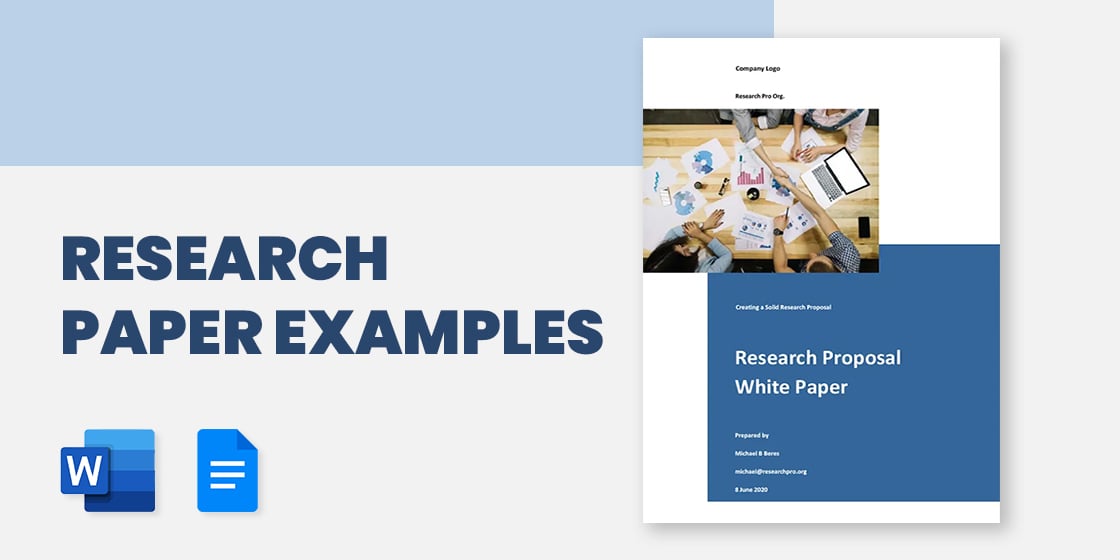
What Is a Research Paper?
Sample of research paper.
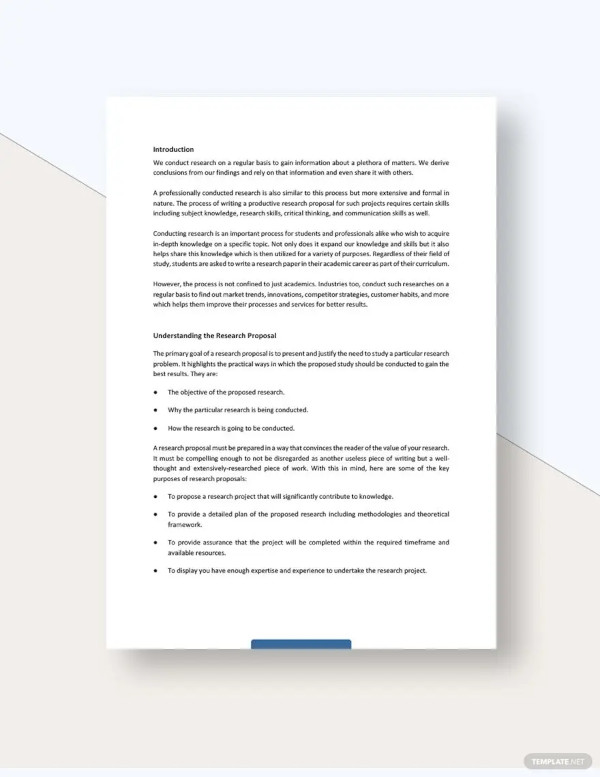
- Google Docs
Published Research Papers
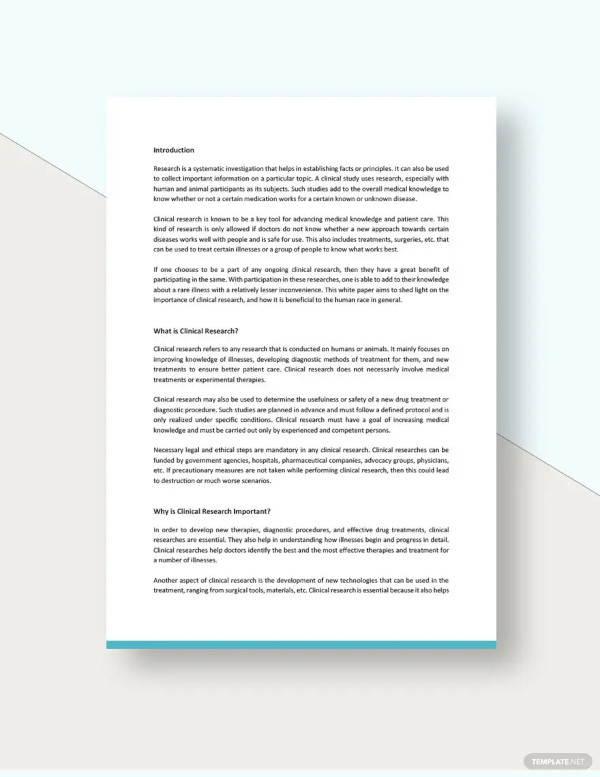
Ready Made Research Paper Template

Research Assignment Example
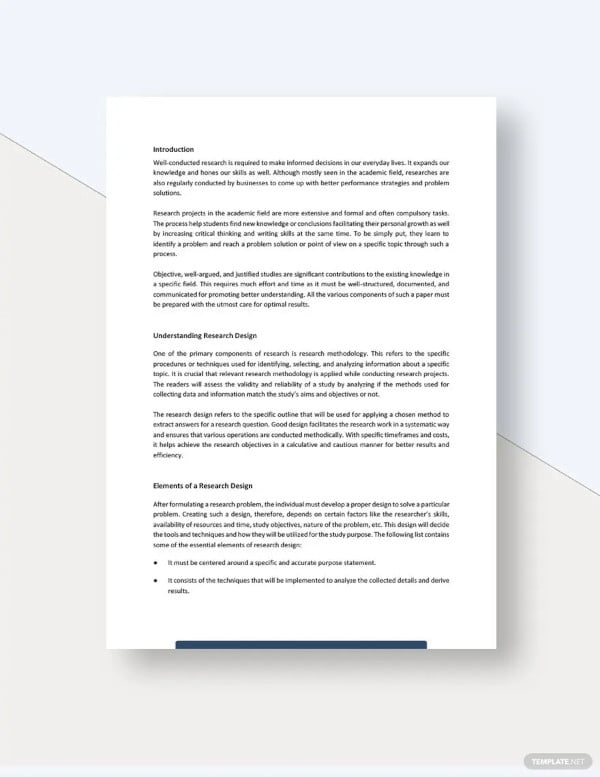
Free Research Paper Example
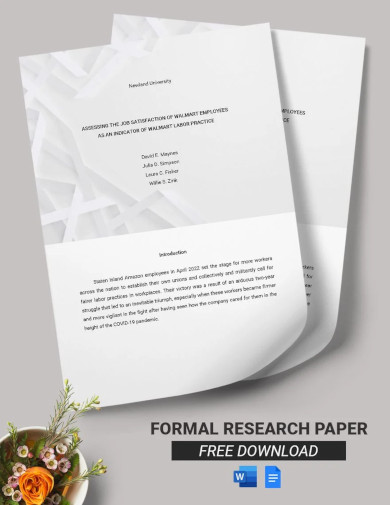
Research Paper Sample

- Apple Pages
Short Research Paper Template
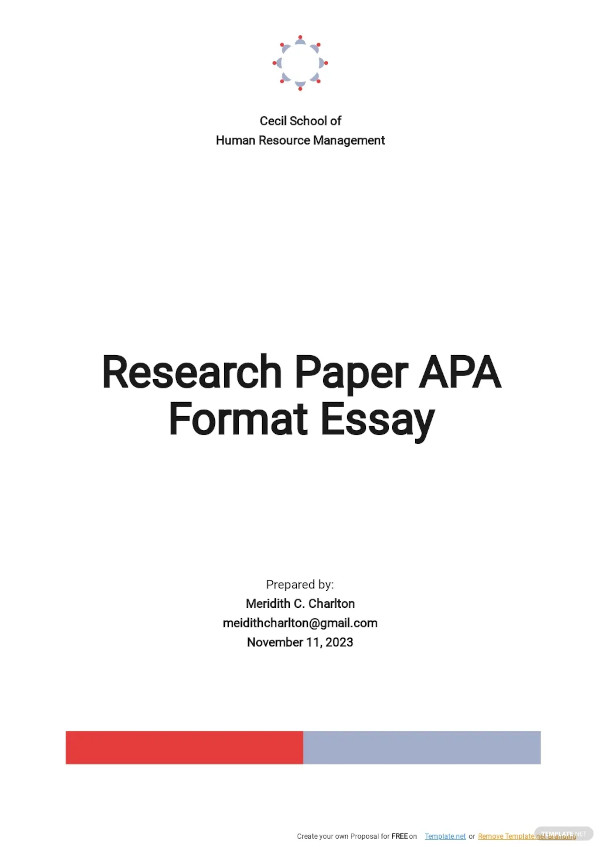
Example Of Research Paper With Complete Parts
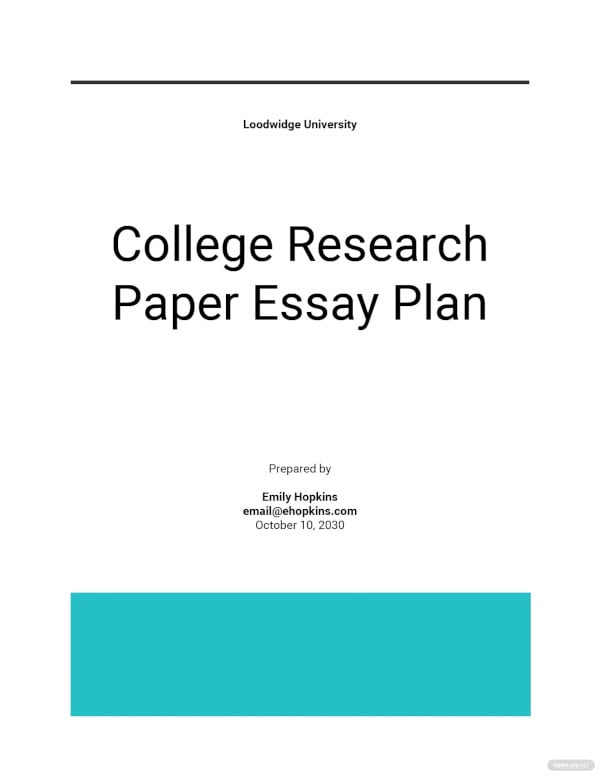
Simple Research Paper Template

Printable Covid 19 Research Paper Essay Template
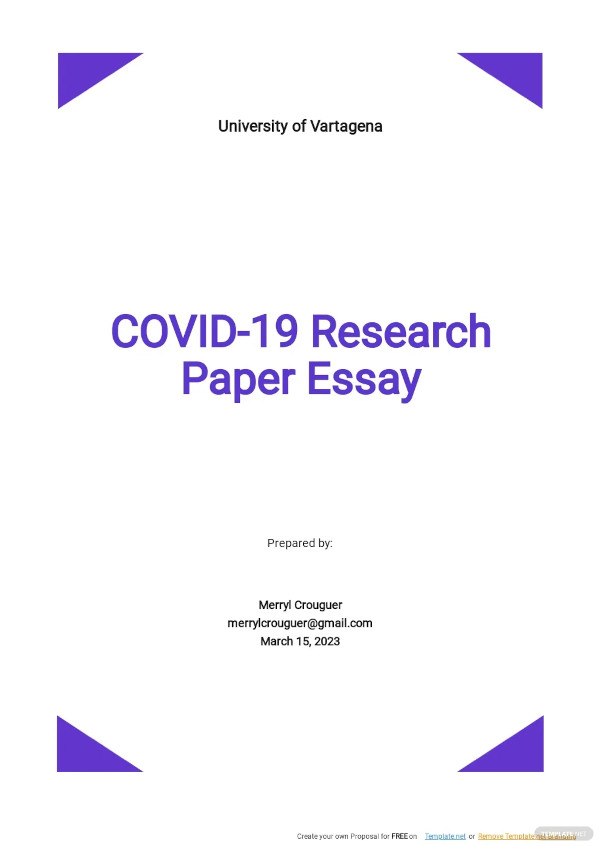
Research Paper Example For Students Template
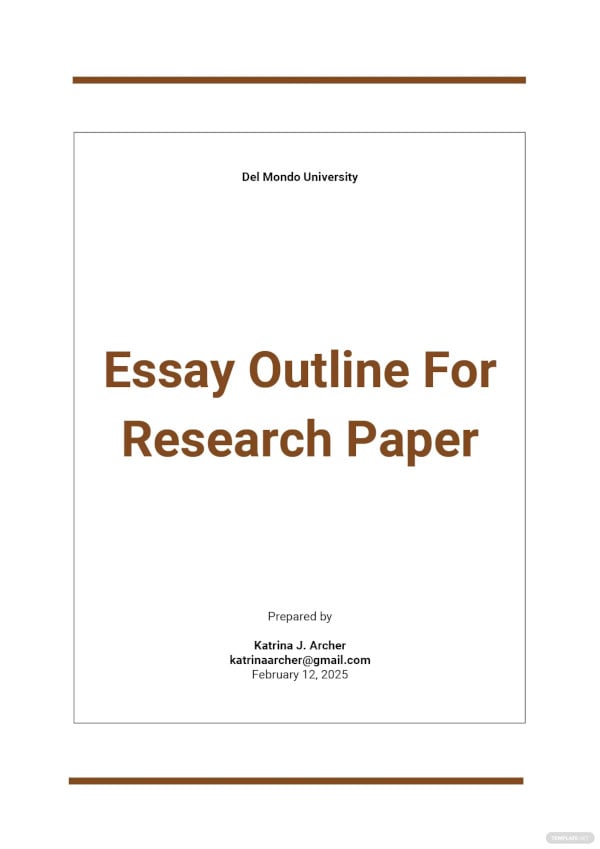
Student Research Paper Templates
Free research paper example for students template.
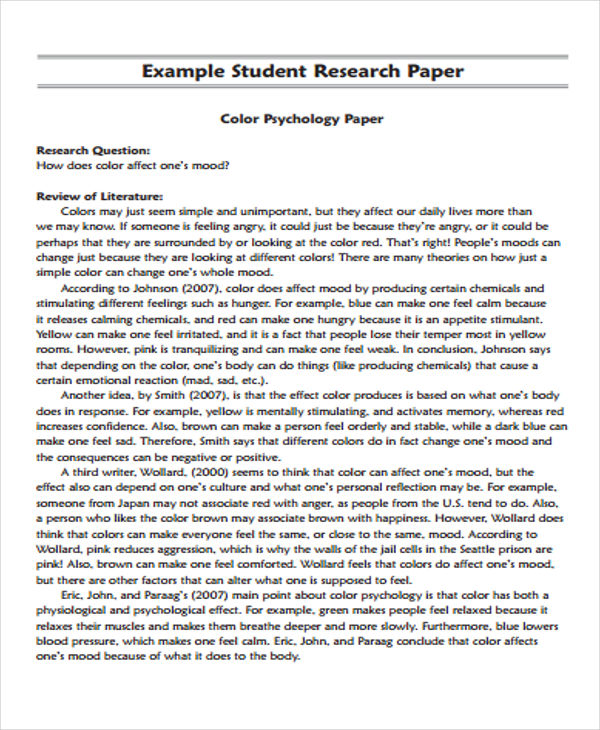
Research Paper for Graduate High School Student Project
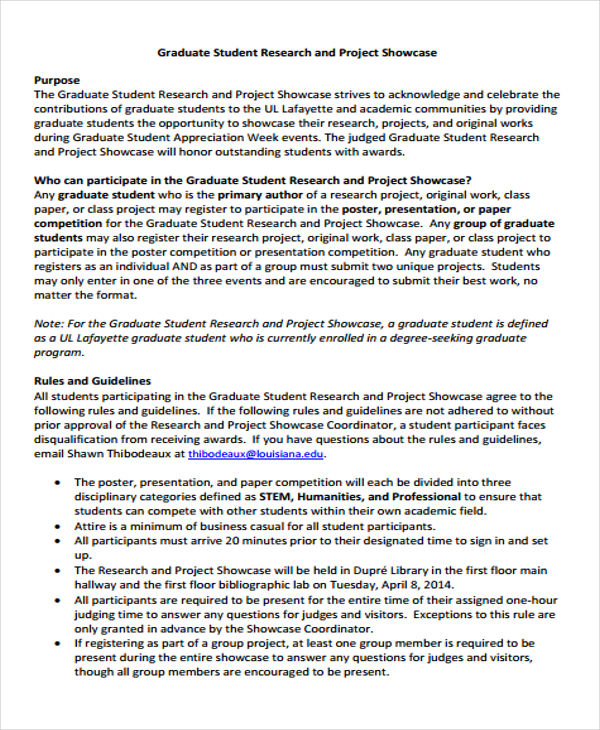
Free Apa Style Research Paper Format Example

Professional Student Conference Research Paper
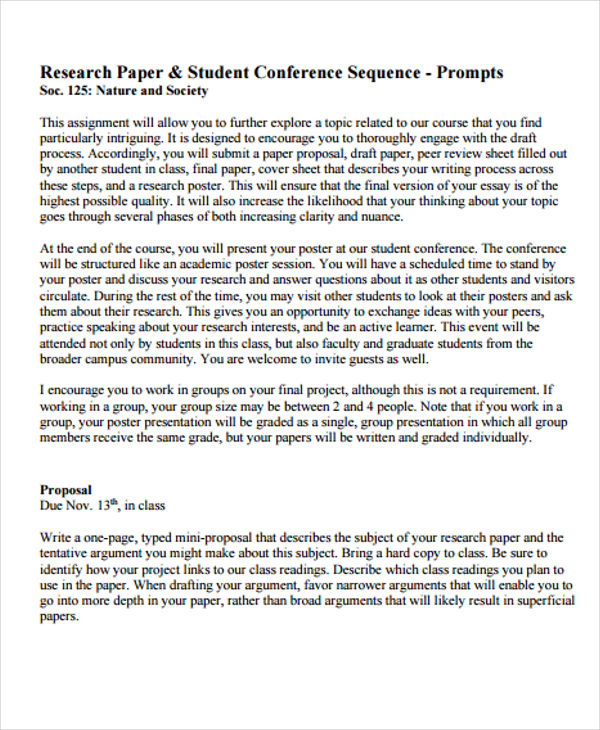
Free MLA Format Research Paper Writing Example
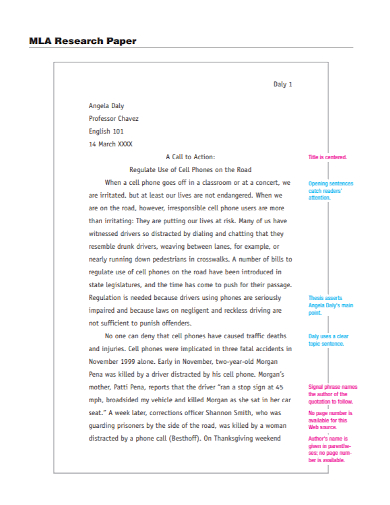
Parts of a Research Paper
Statement of the problem –, background of the study –, significance of the study –, scope and limitations –, methodology –, summary of findings –, recommendations –, medical research paper templates, journal paper example.
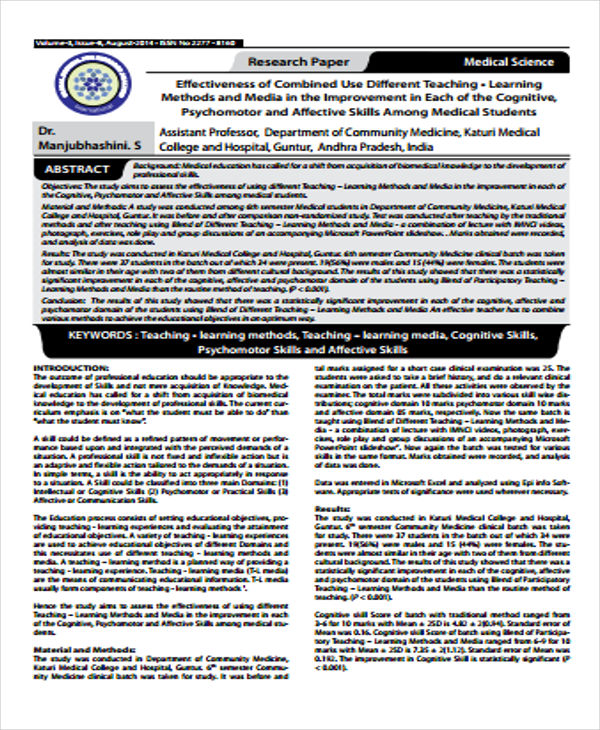
Medical Functions Research Paper Template
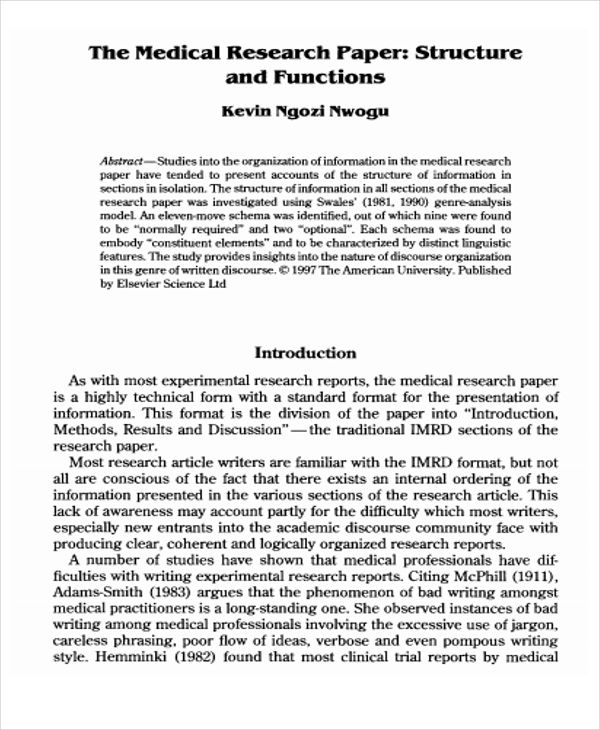
Free Medical Review Research Paper Template

Academic Research Paper Samples
Basic rough academic english research paper.
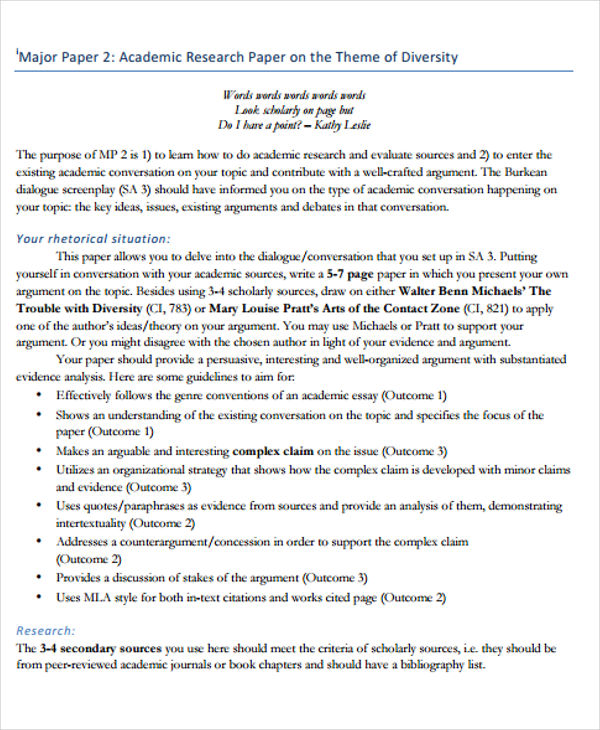
Academic Performance Research Paper Template
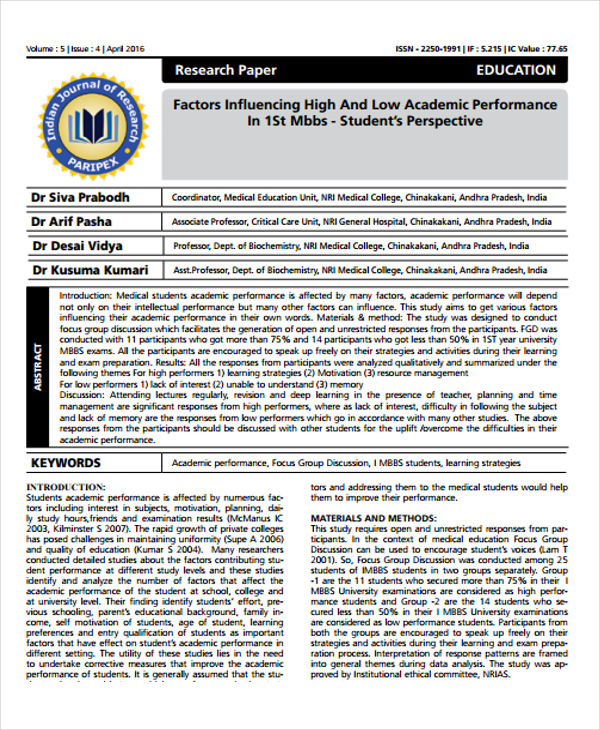
Research Paper Outline Templates
Argumentative research paper outline template.
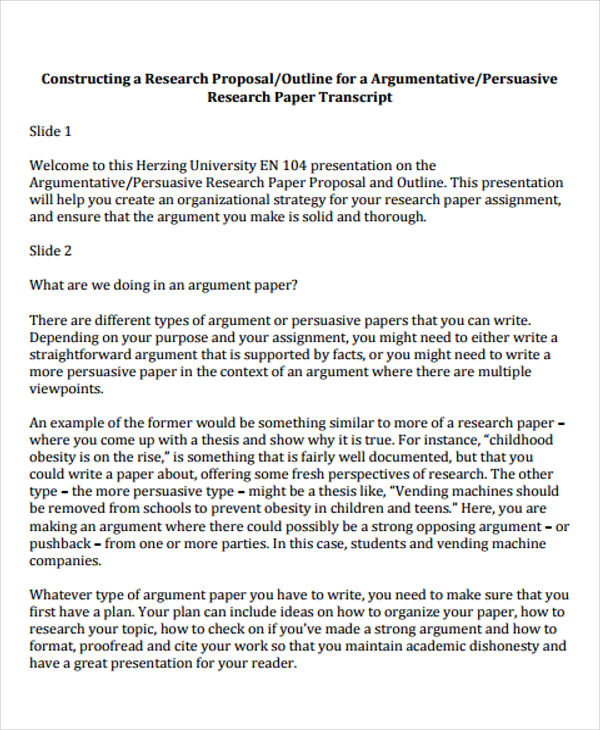
Quantitative Research Paper with Conclusion in PDF
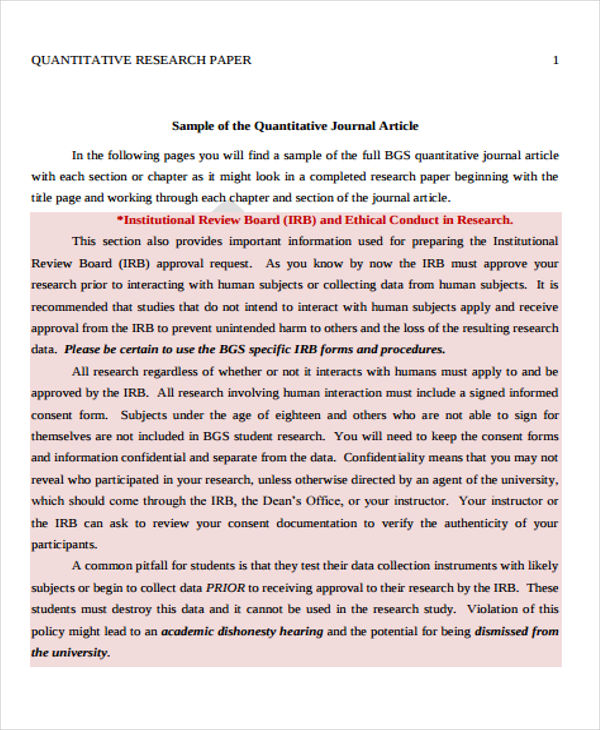
Steps in Research Paper Writing
Pick a topic., make time for consultations., test the feasibility of your research., come up with a preliminary outline., finalize your paper., start gathering more data., then, data analysis will come in., make your conclusion and recommendations., literary citation in research paper template.
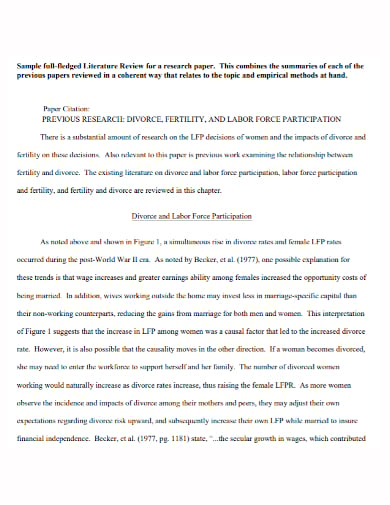
Career Research Paper Outline Template
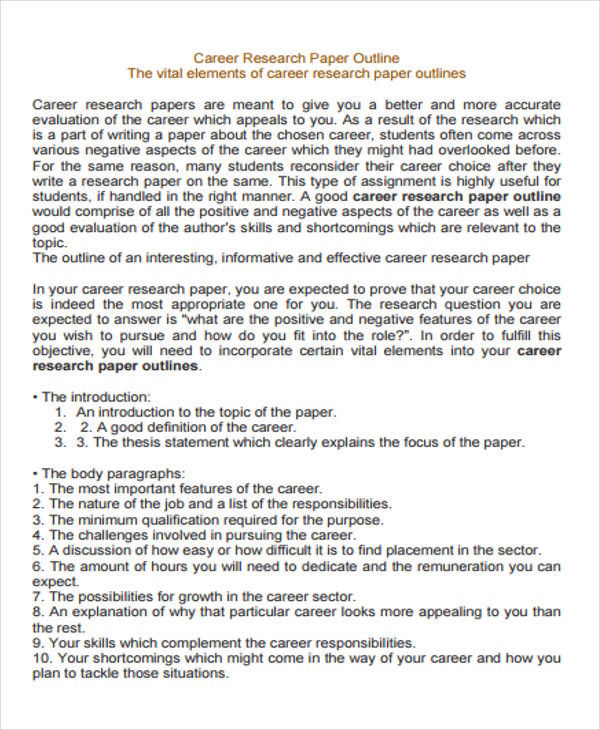
History Research Paper Templates
Basic draft history topic research paper template.
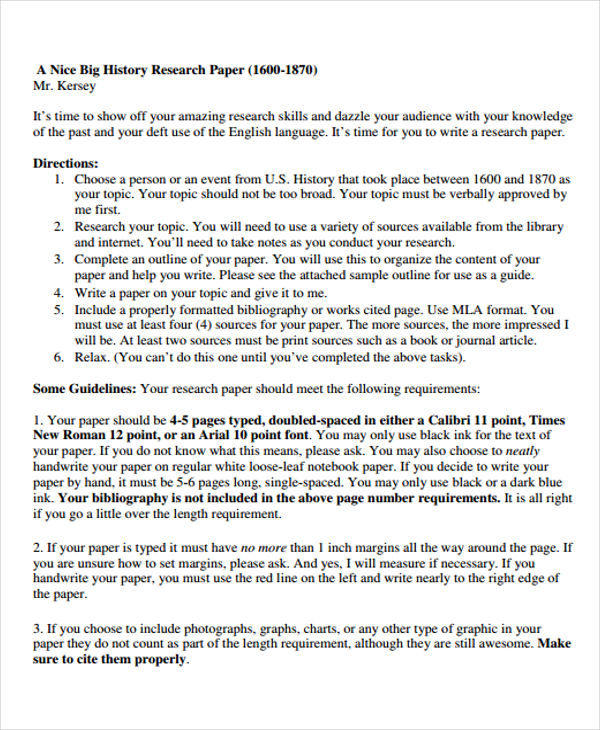
History Research Paper Outline Template
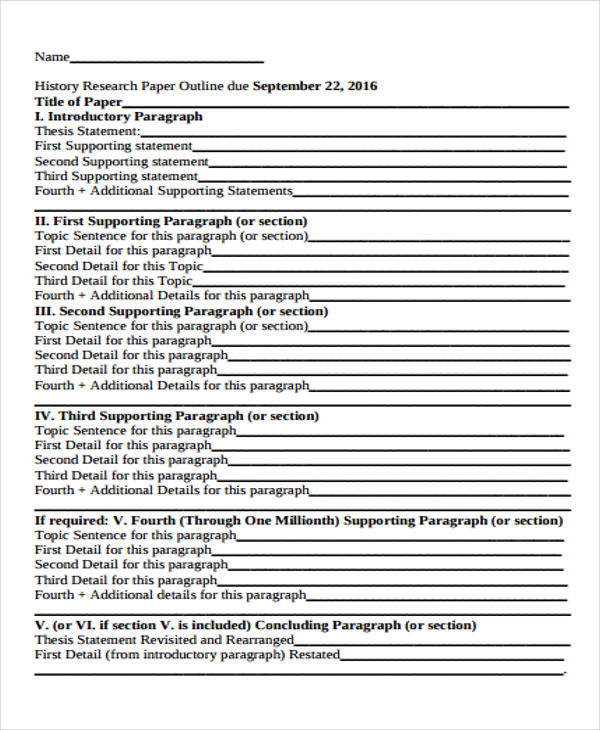
Music History Research Paper Template

Library Biography Research Paper Template
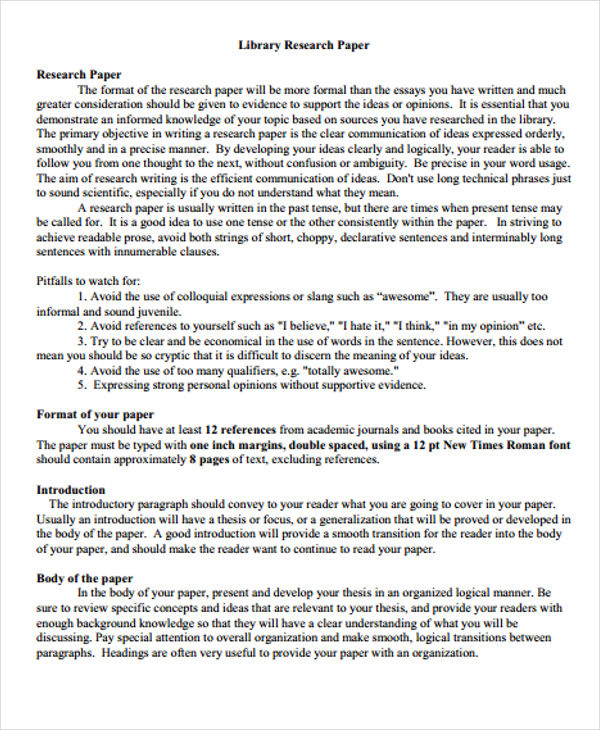
Career Research Paper Templates
Research paper for student career template.
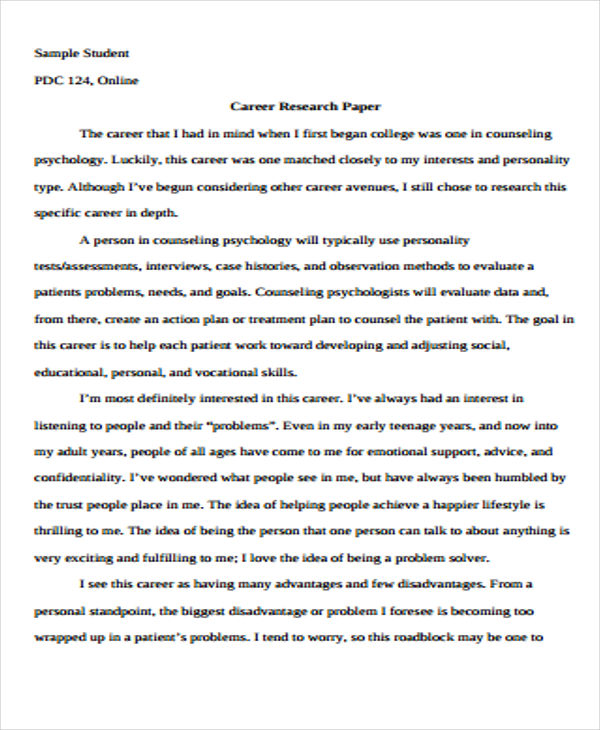
Career Development Research Paper Template
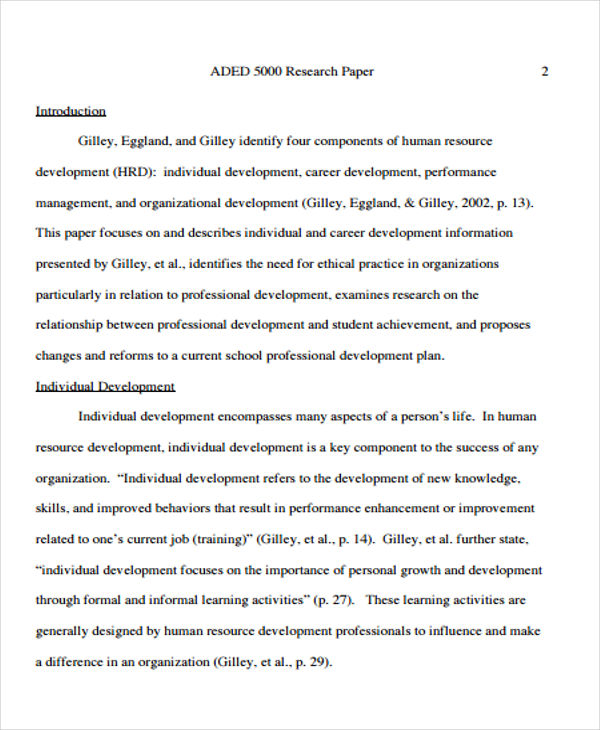
How to Write a Research Paper
Choose a topic.
- Select a topic that interests you and is within the scope of your assignment. It should be specific enough to be manageable but broad enough to find ample information.
Conduct Preliminary Research
- Gather initial information to understand the background of your topic. Use reliable sources like academic journals, books, and reputable websites. This will help you narrow down your topic and formulate a research question or thesis statement.
Develop a Thesis Statement
- Craft a thesis statement that makes a clear, concise argument or assertion about your topic. This statement will guide the direction of your research and paper.
Create an Outline
- Organize your ideas and plan the structure of your paper with an outline. This should include an introduction, body paragraphs with subpoints, and a conclusion.
Conduct Detailed Research
- Dive deeper into your topic by looking for scholarly articles, books, and other sources that provide detailed and credible information. Take notes and keep track of your sources for citations.
Write a Draft
- Start with the introduction , which should provide background on your topic, present your thesis statement, and outline the structure of your paper.
- Develop body paragraphs , each focusing on a specific aspect or piece of evidence that supports your thesis. Use citations to give credit to your sources.
- Conclude your paper by summarizing your main points and restating your thesis in the light of the evidence you’ve presented. Discuss the implications of your findings and suggest areas for further research.
Revise and Edit
- Review your draft for content, organization, clarity, and style. Make sure each paragraph flows logically and supports your thesis.
- Edit for grammar, punctuation, and spelling errors . Consider getting feedback from peers or instructors.
Format and Cite Sources
- Follow the required citation style (e.g., APA, MLA, Chicago) for your field of study. This includes in-text citations and a bibliography or works cited page.
- Ensure your paper meets any formatting guidelines provided by your instructor or department, such as margins, font size, and title page requirements.
Final Review
- Read through your paper one last time to make sure it is polished and ready for submission. Pay close attention to the details and make any necessary adjustments.
4th Grade Research Paper Reference Template

Career Planning Research Paper Template
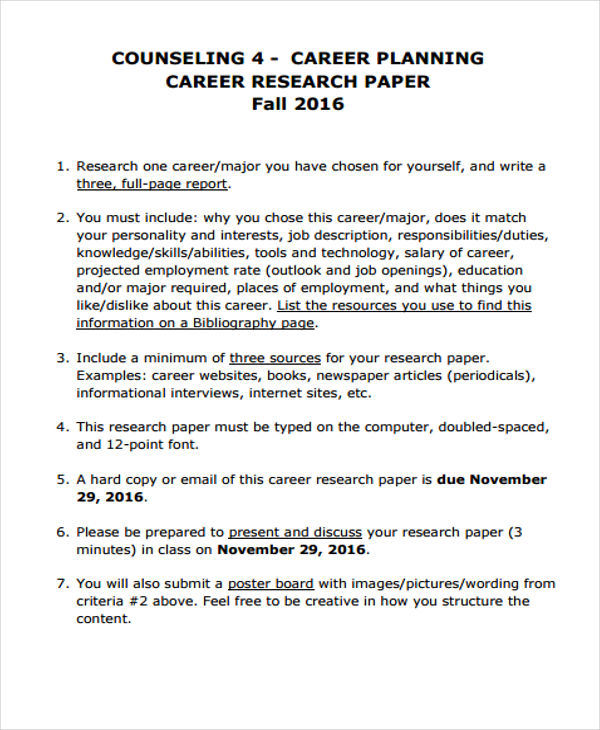
Business Research Paper Templates
Business ethics research paper with abstract.
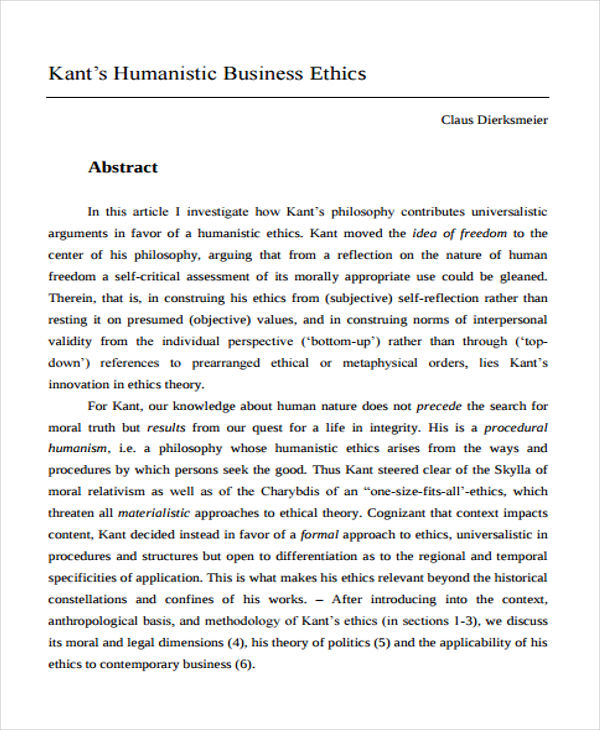
Free Business Law Research Paper Template

Business Intelligence Research Paper Template

Sample College Research Paper Template

Science Executive Summary Research Paper Template
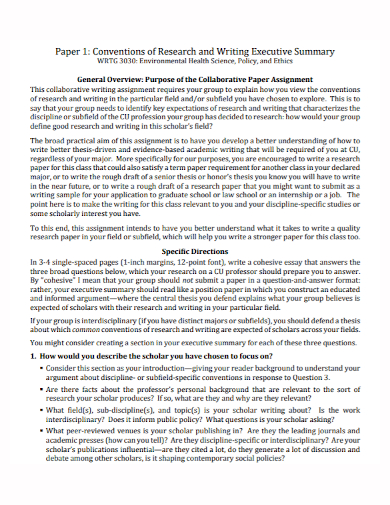
Finance Research Paper Templates
Research paper for international finance template.
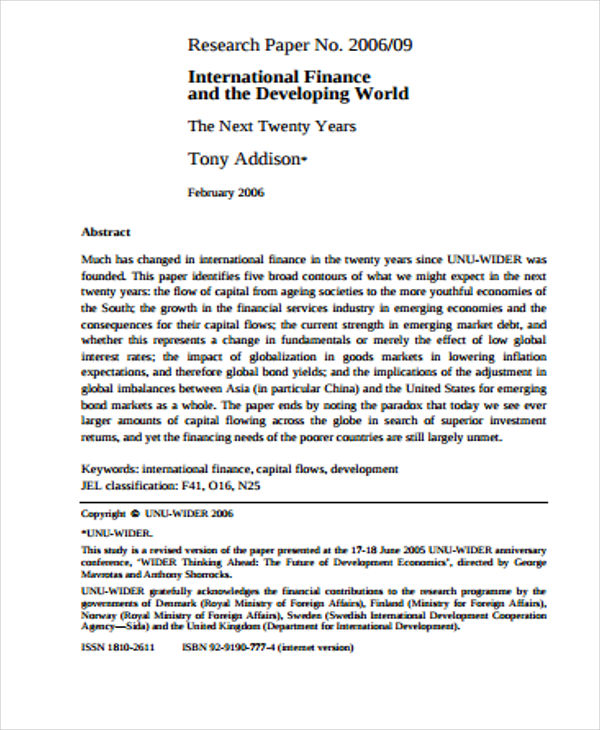
Maths Research Paper Thesis Template
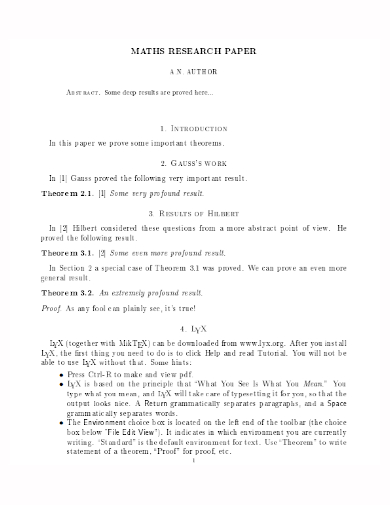
Public Finance Research Paper Template
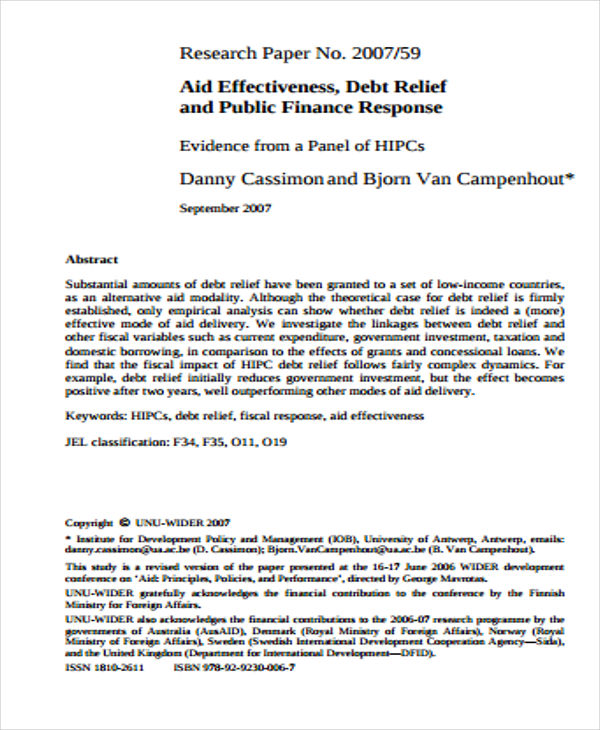
Marketing Research Paper Samples
Marketing strategy research paper template.
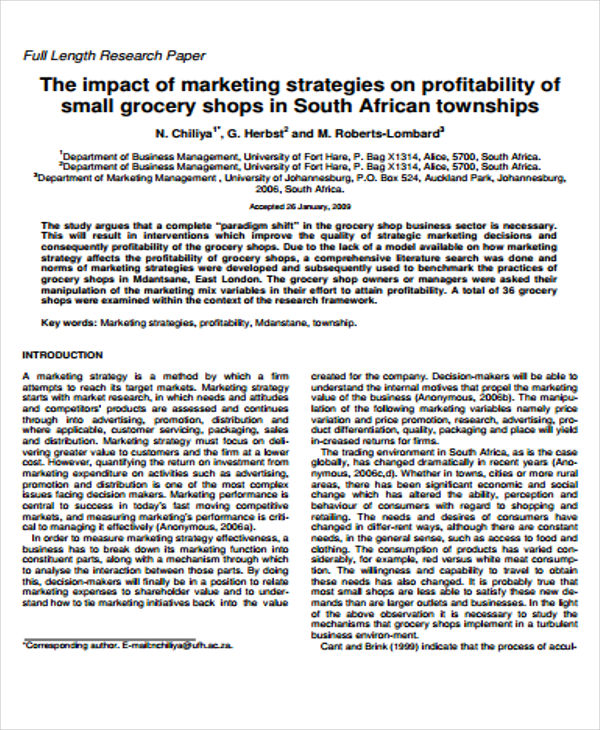
Free Research Paper for Marketing Plan Template
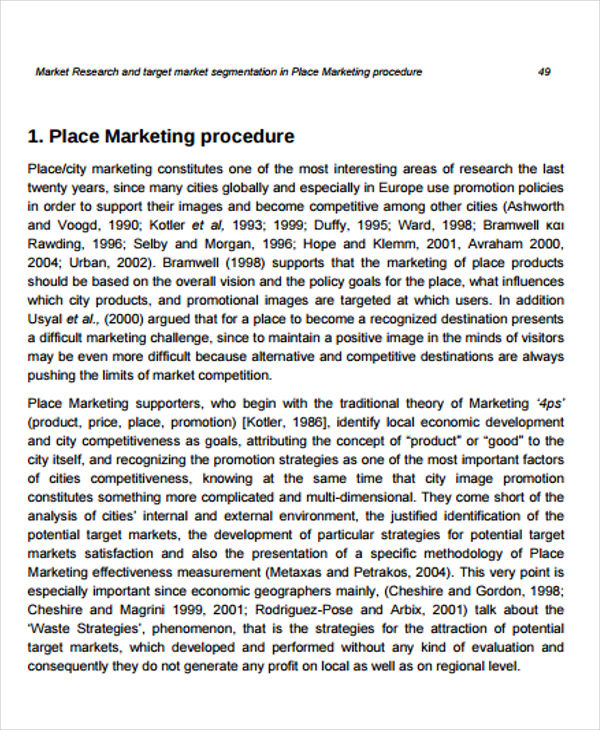
Marketing Management Research Paper Template
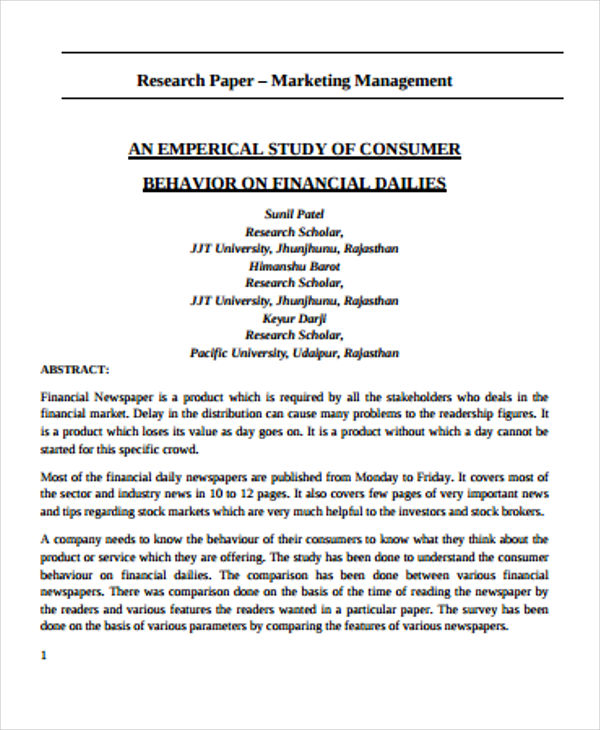
Sociology Methodology Research Paper Outline
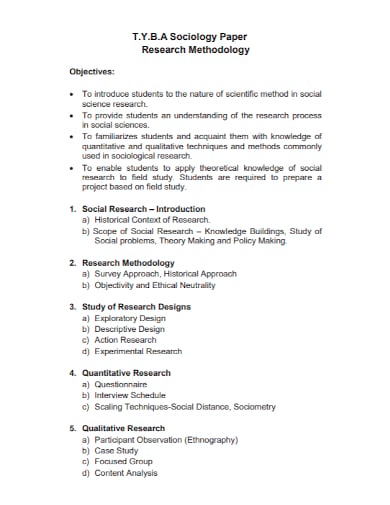
Importance of Research Papers
Research paper promotes knowledge-building., not just for compliance., research papers support business ventures., more in paper templates.
School Essay Template
Reflective essay template, interview essay in apa documentation style template, job interview essay report with introduction template, professional student interview essay template, orientation speech, closing ceremony speech template for event, business comparative research template, comparative market research template, comparative research outline template.
- 14+ Paper House Templates – PDF, DOC
- 46+ Cookbook Templates in PSD | AI | Vector EPS | InDesign | Publisher
- 28+ Lined Paper Templates
- 18+ Paper Cube Templates – PDF, DOC
- 38+ Research Paper Samples – PDF
- 28+ Printable Notebook Paper Templates
- 38+ White Paper Examples in MS Word | Google Docs | Apple Pages | PDF
- FREE 10+ Research Paper Proposal Templates in PDF | MS Word
- 13+ Lined Paper Templates – DOC, PDF, Excel
- 43+ Free White Paper Templates
- 10+ Free Paper Cutting Templates – PDF
- 11+ Lined Paper Templates – PDF
- 26+ Paper Format Templates -PDF
- 25+ White Paper Formats
- 8+ Academic Paper Templates – PDF
File Formats
Word templates, google docs templates, excel templates, powerpoint templates, google sheets templates, google slides templates, pdf templates, publisher templates, psd templates, indesign templates, illustrator templates, pages templates, keynote templates, numbers templates, outlook templates.
ICSE Class 10 Sample Question Paper 2024-25: Download Free PDF with Marking Scheme
Icse board class 10th sample paper: the council for the indian school certificate examinations (cisce) has released the icse model sample papers for 2025 board examinations along with the marking scheme. the direct links to the latest icse specimen papers are provided here..

ICSE 2025 Specimen Papers Class 10: The CISCE has released the ICSE specimen papers for Class 10 to guide students for the 2024-25 board examinations. The specimen papers are provided with the marking scheme to help students cross-verify their answers.
Sample papers are an essential resource provided by the educational boards for the students who will appear for the board examination. These help them practice better and develop reflexes to perform better during the final exam.
ICSE Class 10 Specimen Paper 2024-25 With Marking Scheme
ICSE Class 10 Syllabus 2024-25
ICSE Class 10 Selina Textbooks
Icse class 10 mock tests.
To get more information on topics which are highly recommended by experts, check the related section here.
Get here latest School , CBSE and Govt Jobs notification and articles in English and Hindi for Sarkari Naukari , Sarkari Result and Exam Preparation . Download the Jagran Josh Sarkari Naukri App .
- CTET Result 2024
- UGC NET Admit Card 2024
- AFCAT Admit Card 2024
- IBPS RRB Exam Analysis 2024
- RRB JE Recruitment 2024
- CTET Result 2024 FAQs
- SSC CHSL Answer Key 2024
- IBPS RRB PO Exam Review 2024
- India Post GDS Cut Off
- Education News
Latest Education News
IBPS RRB PO Exam Analysis 2024, 3 August: All Shifts Paper Review, Difficulty Level, Good Attempts
IBPS RRB क्लर्क एडमिट कार्ड 2024 OUT: ibps.in पर जारी हुआ प्रीलिम्स कॉल लेटर, परीक्षा 10 अगस्त से शुरू, यहां से करें डाउनलोड
IBPS RRB Exam Date 2024: Check Shift Timings, Exam Pattern and Selection Procedure
IBPS RRB Clerk Admit Card 2024: Download Link to Active at ibps.in
IBPS RRB 2024: Check Exam Day Guideline, Shift Timings and Last Minute Preparation Tips
IQ Test: Find the odd money bag emoji in 5 seconds!
CBSE 10th Compartment Result 2024 LIVE: Check CBSE Class 10 Supplementary Results at cbseresults.nic.in by Roll and School Number
MHT CET Merit List 2024 Releasing Today at cetcell.mahacet.org, Check Schedule Here
International Friendship Day 2024: दो अलग-अलग तारीखों को क्यों मनाया जाता है मित्रता दिवस ? जानें
Dr MGR Medical University Result 2024 OUT at tnmgrmu.ac.in; Direct Link to Download UG and PG Marksheet
Uniraj Result 2024 Released at uniraj.ac.in; Direct Link to Download Rajasthan University UG and PG Marksheet PDF
MJPRU Result 2024 OUT at mjpruiums.in; Download UG and PG Marksheet PDF
PUP Result 2024 OUT at punjabiuniversity.ac.in; Direct Link to Download UG, PG Marksheet PDF
[लिंक एक्टिव] CBSE Compartment Result 2024: सीबीएसई 12वीं कंपार्टमेंट रिजल्ट results.cbse.nic.in पर घोषित, कक्षा 10 के नतीजे जल्द, यहां करें चेक
SBTE Bihar Result 2024 OUT: एसबीटीई बिहार रिजल्ट sbte.bihar.gov.in पर जारी, ये रहा सेमेस्टर Marksheet Link
[OUT] cbseresults.nic.in Result 2024: सीबीएसई कक्षा 12 कंपार्टमेंट रिजल्ट का Direct Link, 29.78 प्रतिशत छात्र हुए पास
Masoud Pezeshkian Sworn in as President of Iran: Here's the list of All the Presidents of Iran Through the Years
FASTag Users, Pay Attention: FASTag Rules Changed Effective August 1—Here Are the Updates
What is the Giant Metrewave Radio Telescope?
Picture Puzzle IQ Test: Find the mistake in the picture in 4 seconds!
Journal of Materials Chemistry C
Molten salt synthesized lata7o19:er3+/yb3+ with superior upconversion luminescence by kcl flux.
LaTa7O19(LTO):Er3+/Yb3+ upconversion luminescence (UCL) phosphors with hexagonal structure was successfully prepared by a molten salt synthesis using KCl as solvent. Increasing holding temperature from 825 to 1150oC, the LTO structure is transformed towards K2LaTa5O15(KLTO). At 1150oC, the sample is pure phase KLTO:Er3+/Yb3+. Increasing holding time at 825oC from 2 to 48 h, LTO phase first increases and then decreases. Increasing KCl flux mass at 825oC for 24 h, the KLTO structure is first transformed towards LTO, then the KLTO structure increases, and LTO:Er3+/Yb3+ grain size decreases. The highest green UCL integral intensity of LTO:Er3+/Yb3+ reached 89% of β-NaYF4:Er3+/Yb3+. The maximum relative temperature sensitivity of 0.866% K-1 is reached by using the luminescence intensity ratio (LIR) technique. LTO:Er3+/Yb3+ phosphors with excellent pure green UCL can be prepared by molten salt with KCl flux, which can be applied as display and temperature sensing.
- This article is part of the themed collection: Journal of Materials Chemistry C HOT Papers
Supplementary files
- Supplementary information PDF (1896K)
Article information
Download citation, permissions.
X. Yan, Y. Cao, X. Wang, J. Zhang, S. Xu, G. Li and B. J. Chen, J. Mater. Chem. C , 2024, Accepted Manuscript , DOI: 10.1039/D4TC02625J
To request permission to reproduce material from this article, please go to the Copyright Clearance Center request page .
If you are an author contributing to an RSC publication, you do not need to request permission provided correct acknowledgement is given.
If you are the author of this article, you do not need to request permission to reproduce figures and diagrams provided correct acknowledgement is given. If you want to reproduce the whole article in a third-party publication (excluding your thesis/dissertation for which permission is not required) please go to the Copyright Clearance Center request page .
Read more about how to correctly acknowledge RSC content .
Social activity
Search articles by author.
This article has not yet been cited.
Advertisements

IMAGES
VIDEO
COMMENTS
If you are working on your research paper for the first time, here is a collection of examples that you will need to understand the paper's format and how its different parts are drafted. Continue reading the article to get free research paper examples. On This Page. 1. Research Paper Example for Different Formats.
Research paper examples are of great value for students who want to complete their assignments timely and efficiently. If you are a student in the university, your first stop in the quest for research paper examples will be the campus library where you can get to view the research sample papers of lecturers and other professionals in diverse fields plus those of fellow students who preceded ...
If you're preparing to write an academic research paper, our free research paper template is the perfect starting point. In the template, we cover every section step by step, with clear, straightforward explanations and examples. The template's structure is based on the tried and trusted best-practice format for formal academic research papers.
Research Paper Example Outline. Before you plan on writing a well-researched paper, make a rough draft. An outline can be a great help when it comes to organizing vast amounts of research material for your paper. Here is an outline of a research paper example: I. Title Page. A. Title of the Research Paper.
These sample papers demonstrate APA Style formatting standards for different student paper types. Students may write the same types of papers as professional authors (e.g., quantitative studies, literature reviews) or other types of papers for course assignments (e.g., reaction or response papers, discussion posts), dissertations, and theses.
Fillable Template and Sample Paper; Government Documents and Legal Materials; APA Style 7th ed. Tutorials; Additional APA 7th Resources; Grammarly - your writing assistant; Writing Center - Writing Skills This link opens in a new window; Brainfuse Online Tutoring; Help!
Step 1: Find a topic and review the literature. As we mentioned earlier, in a research paper, you, as the researcher, will try to answer a question.More specifically, that's called a research question, and it sets the direction of your entire paper. What's important to understand though is that you'll need to answer that research question with the help of high-quality sources - for ...
Choose a research paper topic. Conduct preliminary research. Develop a thesis statement. Create a research paper outline. Write a first draft of the research paper. Write the introduction. Write a compelling body of text. Write the conclusion. The second draft.
Place your paper title 3 or 4 lines down from your paper's top margin. The title's typeface should appear in boldface and title case. This title should also be placed at the top of your paper's first page of text. Each of the following items appear centered, double spaced, in title case and regular typeface: 2.
A research paper outline is a useful tool to aid in the writing process, providing a structure to follow with all information to be included in the paper clearly organized. A quality outline can make writing your research paper more efficient by helping to: Organize your thoughts; Understand the flow of information and how ideas are related
Formatting an APA paper. The main guidelines for formatting a paper in APA Style are as follows: Use a standard font like 12 pt Times New Roman or 11 pt Arial. Set 1 inch page margins. Apply double line spacing. If submitting for publication, insert a APA running head on every page. Indent every new paragraph ½ inch.
Media Files: APA Sample Student Paper , APA Sample Professional Paper This resource is enhanced by Acrobat PDF files. Download the free Acrobat Reader. Note: The APA Publication Manual, 7 th Edition specifies different formatting conventions for student and professional papers (i.e., papers written for credit in a course and papers intended for scholarly publication).
Definition: Research Paper is a written document that presents the author's original research, analysis, and interpretation of a specific topic or issue. It is typically based on Empirical Evidence, and may involve qualitative or quantitative research methods, or a combination of both. The purpose of a research paper is to contribute new ...
A research paper outline template is a precontrived guideline that helps you create an outline for your paper. It is divided into the necessary sections and paragraphs with enough space for you to fill in the contents of your outline. Simply put, it is a document containing the prerequisite outline format that prevents you from writing your ...
We've included a full student paper below to give you an idea of what an essay in APA format looks like, complete with a title page, paper, reference list, and index. If you plan to include an APA abstract in your paper, see the Professional Paper for an example. If you're looking for an APA format citation generator, we've got you covered.
Check our 100% free essays, term papers, research papers submitted by A+ students and sorted by subjects and topics. Get ideas and inspiration for your own paper. ... This is IvyPanda's free database of academic paper samples. It contains thousands of paper examples on a wide variety of topics, all donated by helpful students. You can use them ...
Definition. A finite set of linear equations in the variables x1, x2, . . . , xn is called. a system of linear equations. Not all systems of linear equations has solutions. A system of equations that has no solution is said to be inconsistent. If there is at least one solution, it is called consistent.
30 Editable Research Paper Templates (MLA Formats) February 23, 2021 6 Mins Read. A research paper template is a document that contains research questions, variable interpolation, thesis, methodology, and results evaluation. To create an effective research paper, make sure that everything you present comes from reliable sources.
Sample APA Research Paper Sample Title Page Running on Empty 1 Running on Empty: The Effects of Food Deprivation on Concentration and Perseverance Thomas Delancy and Adam Solberg Dordt College Place manuscript page headers one-half inch from the top. Put five spaces between the page header and the page number. Full title, authors, and school name
Table of contents. Step 1: Introduce your topic. Step 2: Describe the background. Step 3: Establish your research problem. Step 4: Specify your objective (s) Step 5: Map out your paper. Research paper introduction examples. Frequently asked questions about the research paper introduction.
Before conducting a study, a research proposal should be created that outlines researchers' plans and methodology and is submitted to the concerned evaluating organization or person. Creating a research proposal is an important step to ensure that researchers are on track and are moving forward as intended. A research proposal can be defined as a detailed plan or blueprint for the proposed ...
Writing a research paper is an essential aspect of academics and should not be avoided on account of one's anxiety. In fact, the process of writing a research paper can be one of the more rewarding experiences one may encounter in academics. What is more, many students will continue to do research throughout their careers, which is one of the ...
43+ Research Paper Examples. 5 Ledger Paper Templates - Samples, Examples. 7 Strategy Paper Templates - Samples, Examples. 13+ Printable Graph Paper Templates - Samples, Examples. 7 Writing Paper Templates - PDF. A Complete Guide to Research Papers (200+ Templates and Samples Included) 39 Sample White Paper Templates.
A Complete Guide to Research Papers (200+ Templates and Samples Included) 39 Sample White Paper Templates. 39+ Printable Lined Paper Templates. 19+ Paper Templates in Word. 34+ White Paper Templates in PDF. 17 Free Paper Templates. 48+ White Paper Templates. 10+ Business Paper Templates - Sample, Example.
ICSE Sample Paper 2025: Get here the latest ICSE Class 10 specimen papers for maths, biology, physics, chemistry, commerce and other subjects in free PDF download. Also get the marking scheme.
AP Board SSC Hindi Sample Question Paper 2025: The Board of Secondary Education Andhra Pradesh (BSEAP) is one of the state educational boards of India. It has released the new model sample papers ...
LaTa7O19(LTO):Er3+/Yb3+ upconversion luminescence (UCL) phosphors with hexagonal structure was successfully prepared by a molten salt synthesis using KCl as solvent. Increasing holding temperature from 825 to 1150oC, the LTO structure is transformed towards K2LaTa5O15(KLTO). At 1150oC, the sample is pure pha Journal of Materials Chemistry C HOT Papers